As we approach the two-thirds mark of the Bundesliga season, an everyone-is-in-the-race kind of start at the top half of the league table has boiled down to a five-horse title race. Bayern München, Borussia Dortmund, RB Leipzig, Borussia Mönchengladbach and even (yes, I know) Bayer Leverkusen all have at least some shot at becoming champs. We’re all familiar with the seasons that the absolute stars of these teams are having, with Robert Lewandowski and Timo Werner’s seemingly bottomless bags of goals and the emergence of Erling Haaland and Jadon Sancho as bona fide superstars as most illustrative examples. But what about the unsung heroes of these top clubs? Well, those guys get their moment in the sun in this here article. May we present the Stealth MVP’s 0f Germany’s five best squads.
Bayern München: Thomas Müller
Oh yes, we did the Thomas Müller ‘dance’ this year. Like. Every. Other. Freaking. Year. When will we stop putting too much value on aesthetically pleasing skills in attackers? Yes, Müller is not the most graceful player that German football has ever spawned - not by a mile. But, c’mon. Look at this.
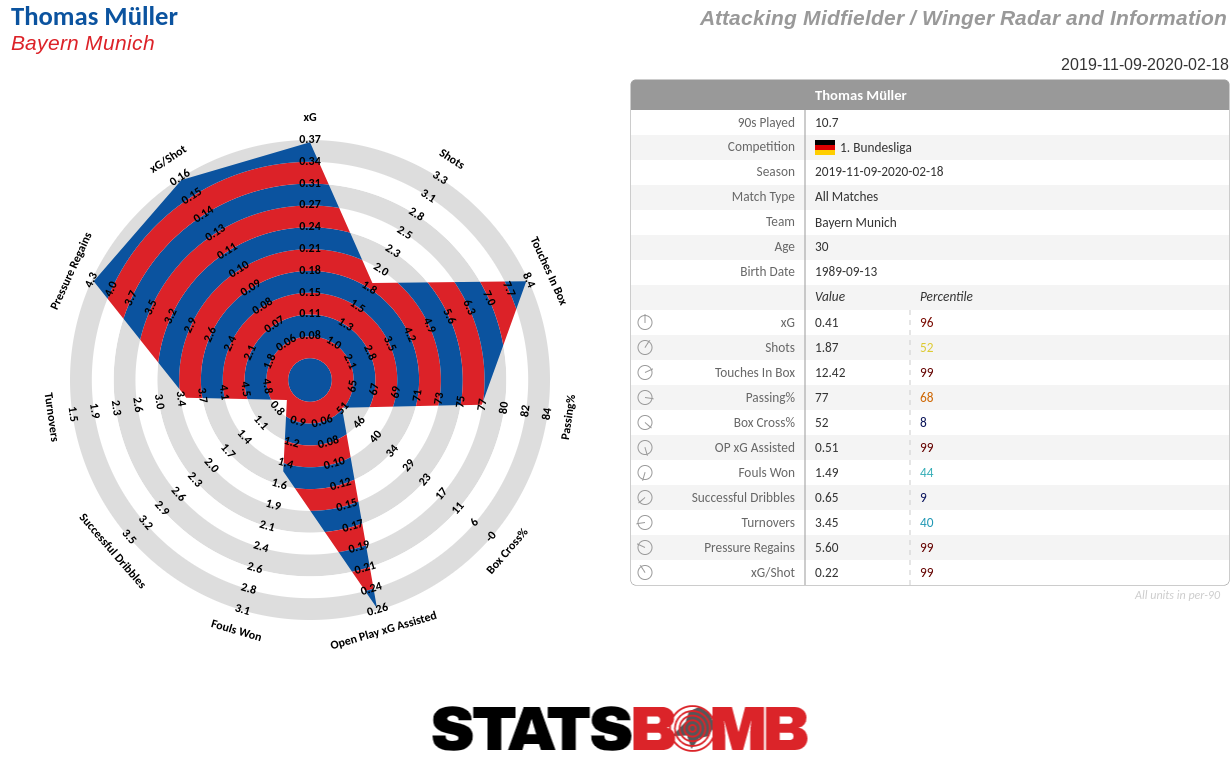
Oh, you think he's more of a midfielder now? Just. Look. At. This.
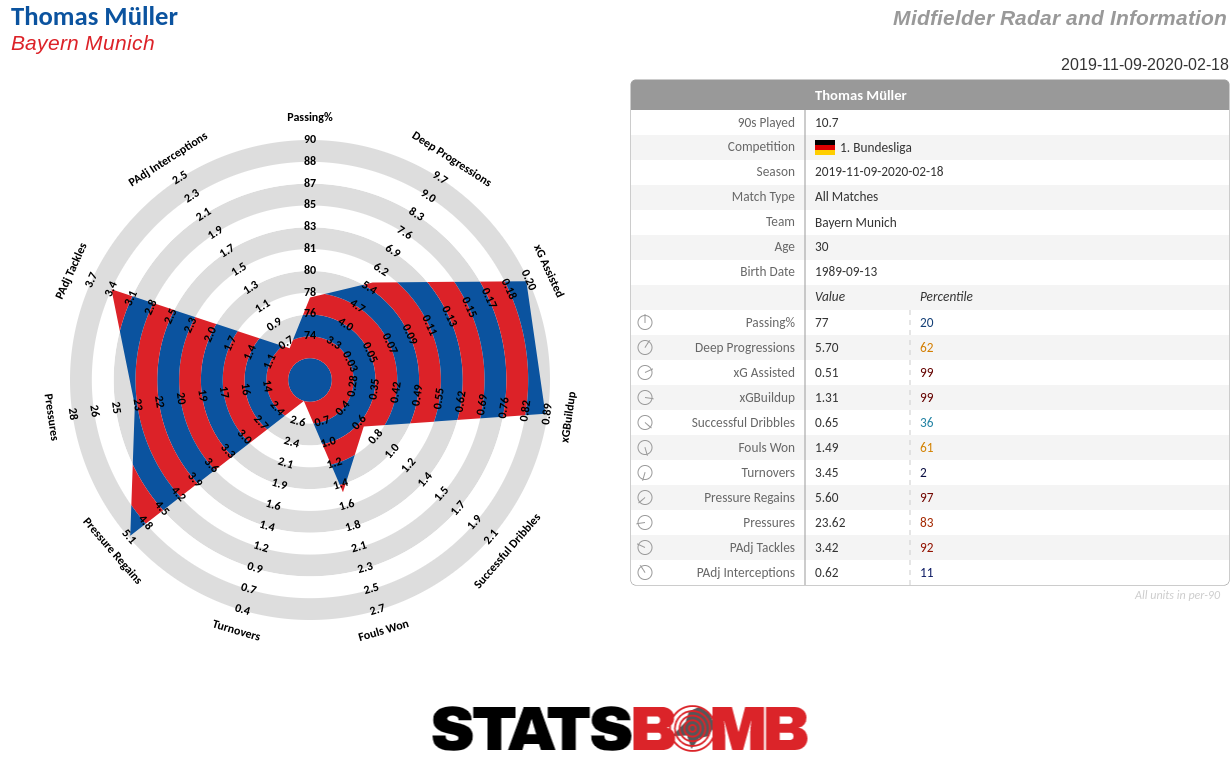
Reinstating Müller as a full time starter has been - besides employing Joshua Kimmich as a defensive midfielder on a permanent basis - one of interim manager Hansi Flick’s biggest moves at the Bayern wheel. In twelve leagues under Flick’s guidance, Müller has contributed big-time with five goals and ten (!) assists. He has done so as one of the attacking mids, and as a false right-winger. Müller is still one of football’s space-seekers, who knows how to get to good shooting positions. But the thirty year old Bayern-lifer is also still one of the best defending attackers out there, and plays a big role in the middle phase of his team’s play in possession.
RB Leipzig: Konrad Laimer
The role of defensive midfielder in Leipzig’s high-octane playing style is a tough one. Where box-to-box energizer-bunny Marcel Sabitzer gets to do the glamour work in midfield, his countryman Konrad Laimer might be even more important for the success of this squad.
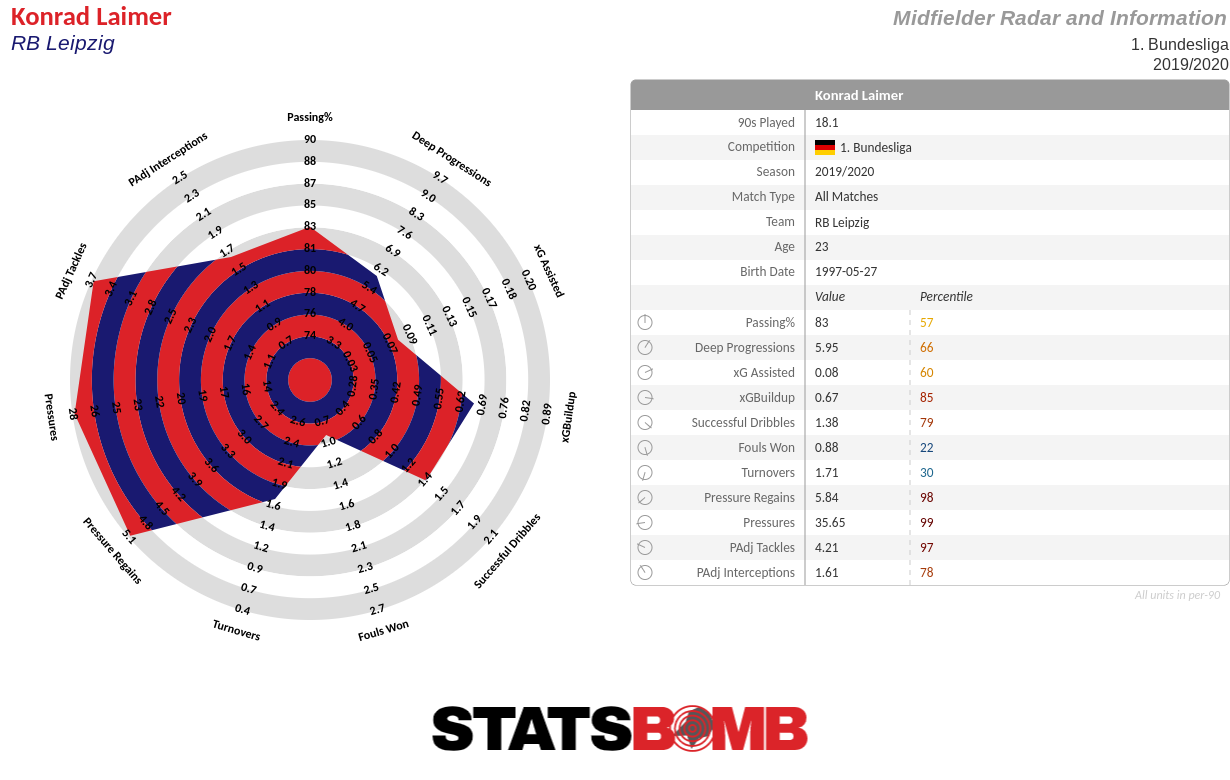
That Laimer doesn’t boast the tidiest of passing numbers, has to do with Leipzig’s extremely vertical style of play. The Austrian midfielder needs to get the ball up the field, to the speedsters up front, as quickly and directly as possible. And he does so in impressive fashion. Laimer is the iron-lunged type you’d expect in Leipzig’s engine room in midfield, but has a surprising amount of skill when he’s on the ball.
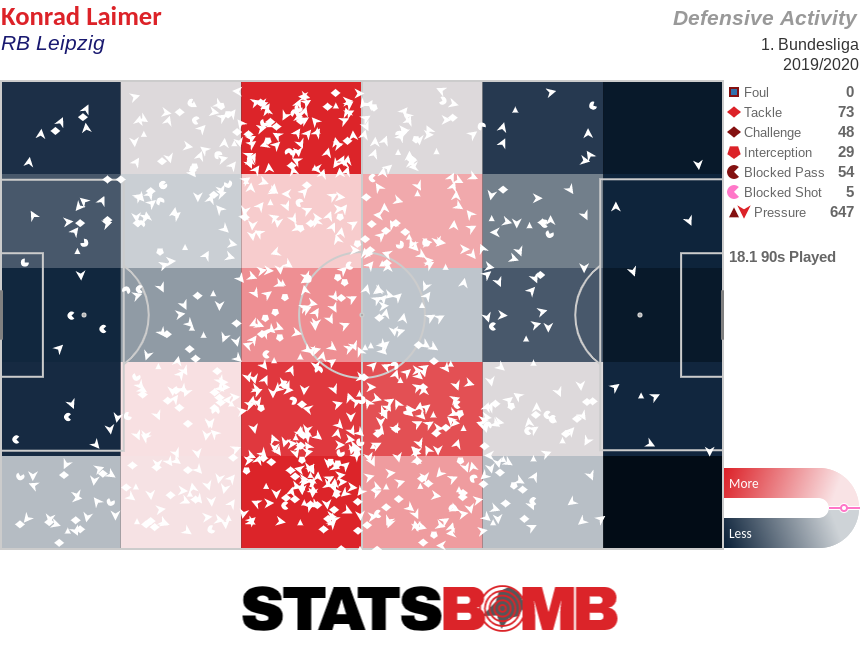
But Laimer shines most when the opposition has the ball. He forms the backbone of Leipzig’s wild press. When the front four (or five) is going all-out to win the ball back or hurry the opposing build-up high upfield, Laimer’s there to cover the spaces that open up behind those ‘pressing missiles’.
Borussia Dortmund: Dan-Axel Zagadou
Admittedly, Dortmund’s defence is still not good. But it is improving, big time. This is Dortmund’s defensive team radar from the start of the season until mid-November, when they got walloped at Bayern München (4-0), and followed that disappointment by slipping up at home against lowly Paderborn (3-3).
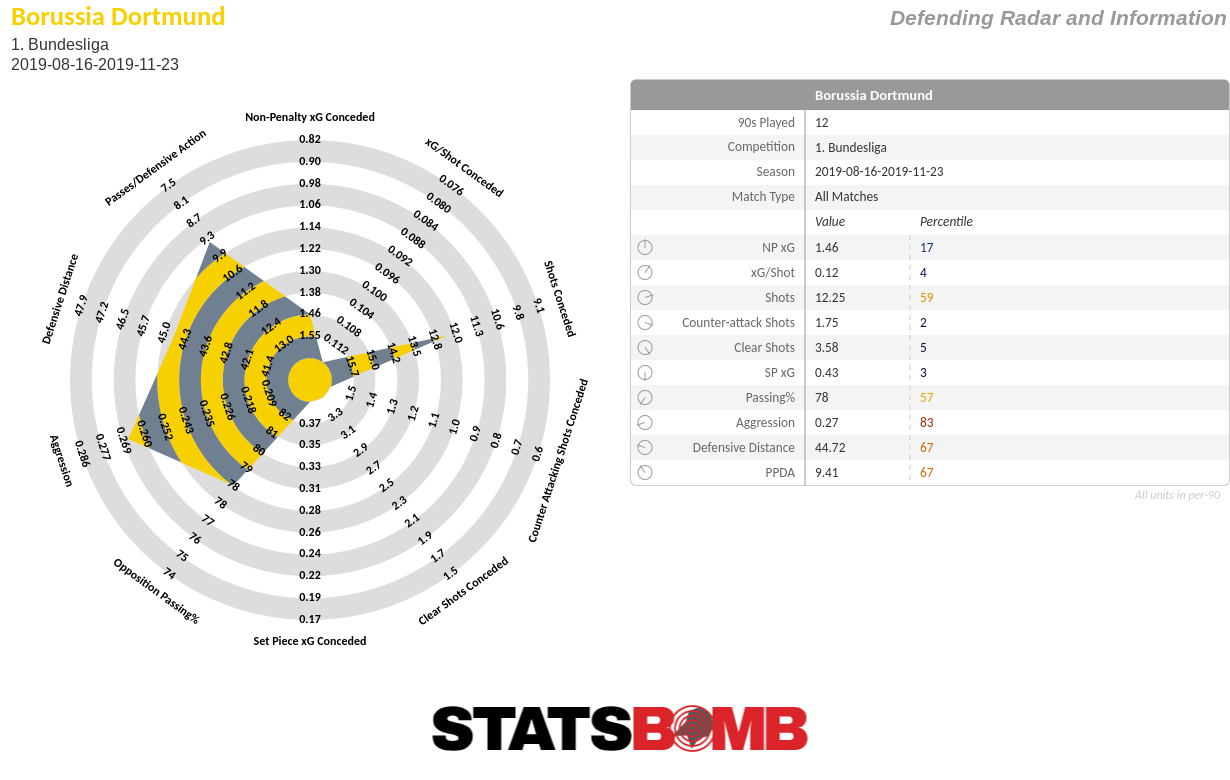
These defensive woes forced Lucien Favre to switch systems. The 4-2-3-1 formation got swapped for a 3-4-2-1 shape. The extra centre-back has helped.
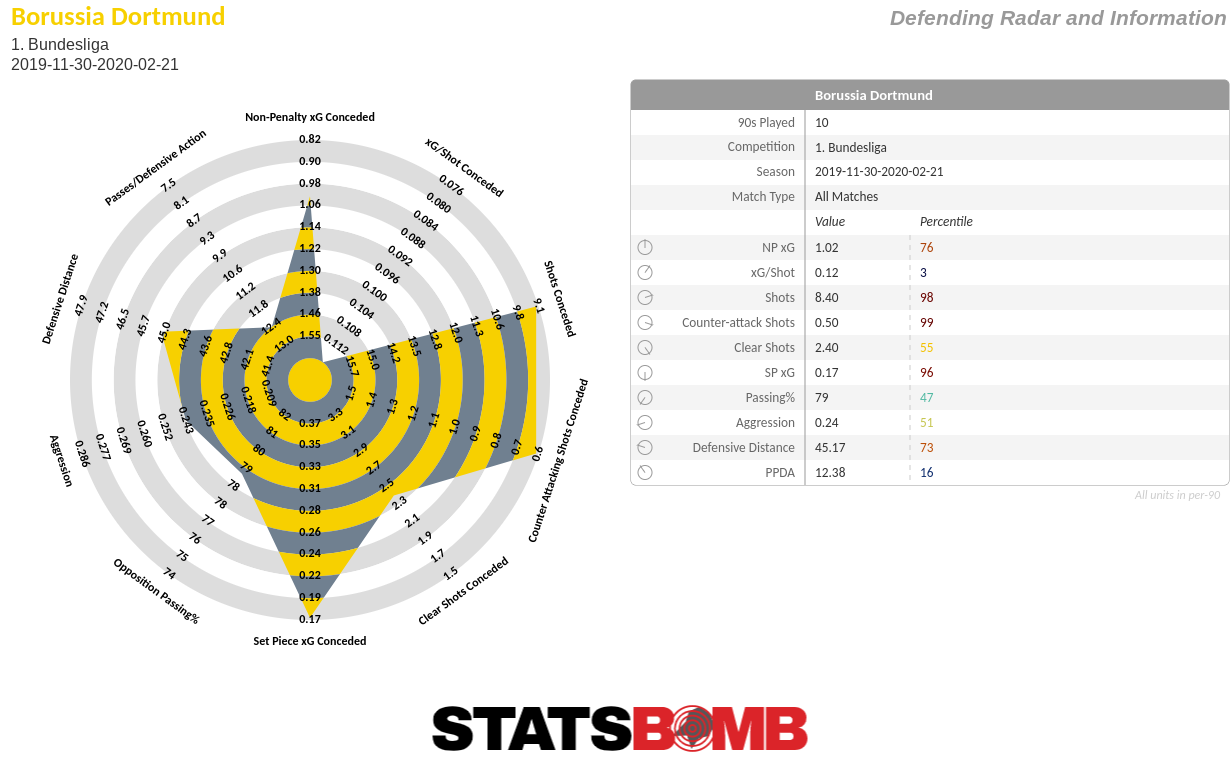
With an extra slot opening up in the backline, Dan-Axel Zagadou has snagged his chance in recent weeks. The gargantuan (6 foot 5, at minimum) French youngster might have stood out in a negative sense in the 2-1 win against PSG in midweek, with his whiffed tackle attempt rolling out the red carpet for Kylian Mbappé to assist an undeserved Neymar equalizer. But besides this slip-up, the twenty year-old has been an excellent addition to the Dortmund starting lineup.
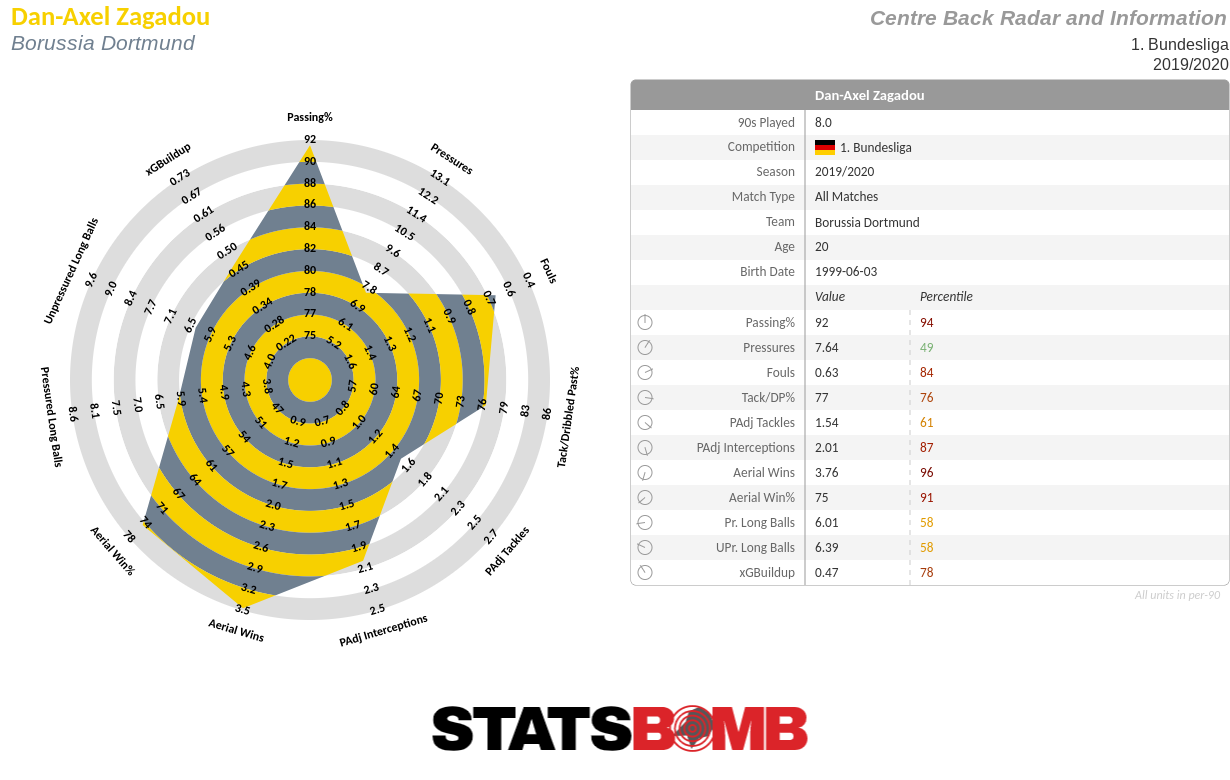
Zagadou is weirdly speedy for someone his size - not unlike a certain striker in his squad - and also adds some much-needed ‘oomph’ to the Dortmund backline with his aerial prowess. But Zagadou might be an even better addition on the other side of the ball. Against PSG, the team that never gave him a fair shot at first-team minutes when he was a major talent in the Parisian youth academy, Zagadou demonstrated once again that he’s extremely comfortable in possession. This might not be a shocker, but: an NBA-sized, left-footed, silky-smooth passing and athletically gifted athlete at centre back is pretty hard to find. This Dortmund squad contains some freakish talent up and down the roster.
Borussia Mönchengladbach: Nico Elvedi
Let’s take a look at the defensive heat map Borussia Mönchengladbach this season.
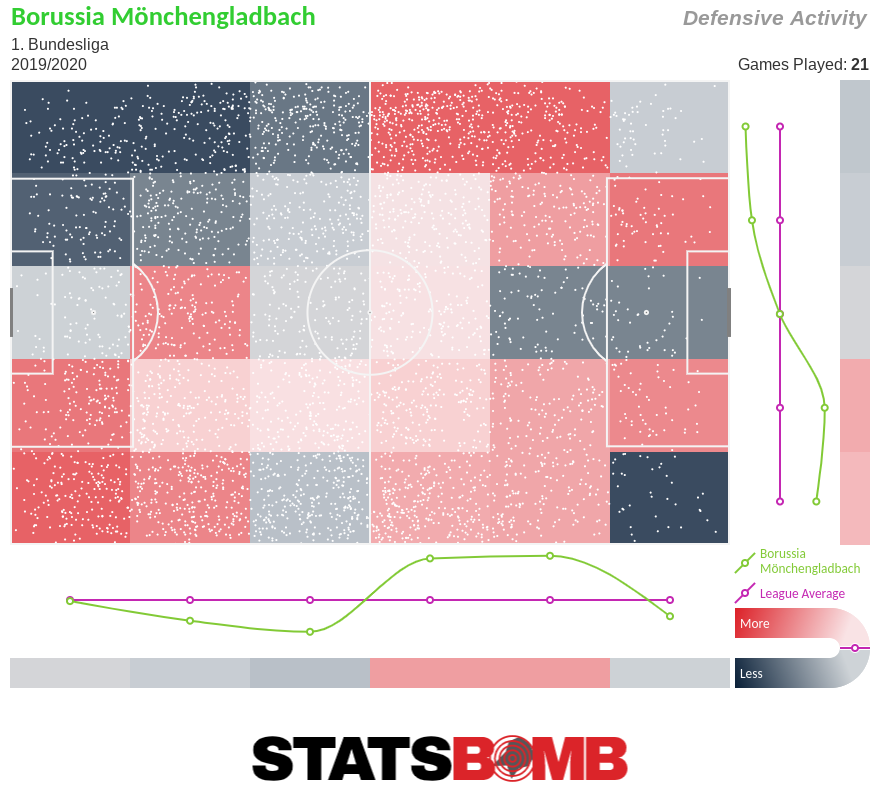
You see that? Opponents clearly chose to attack the right-hand side of Gladbach’s backline. This has something to do with the excellent performances of Die Fohlen’s centre-back on the left side of the defence. Nico Elvedi is slowly but surely making his case for the title of best centre-back in the Bundesliga.
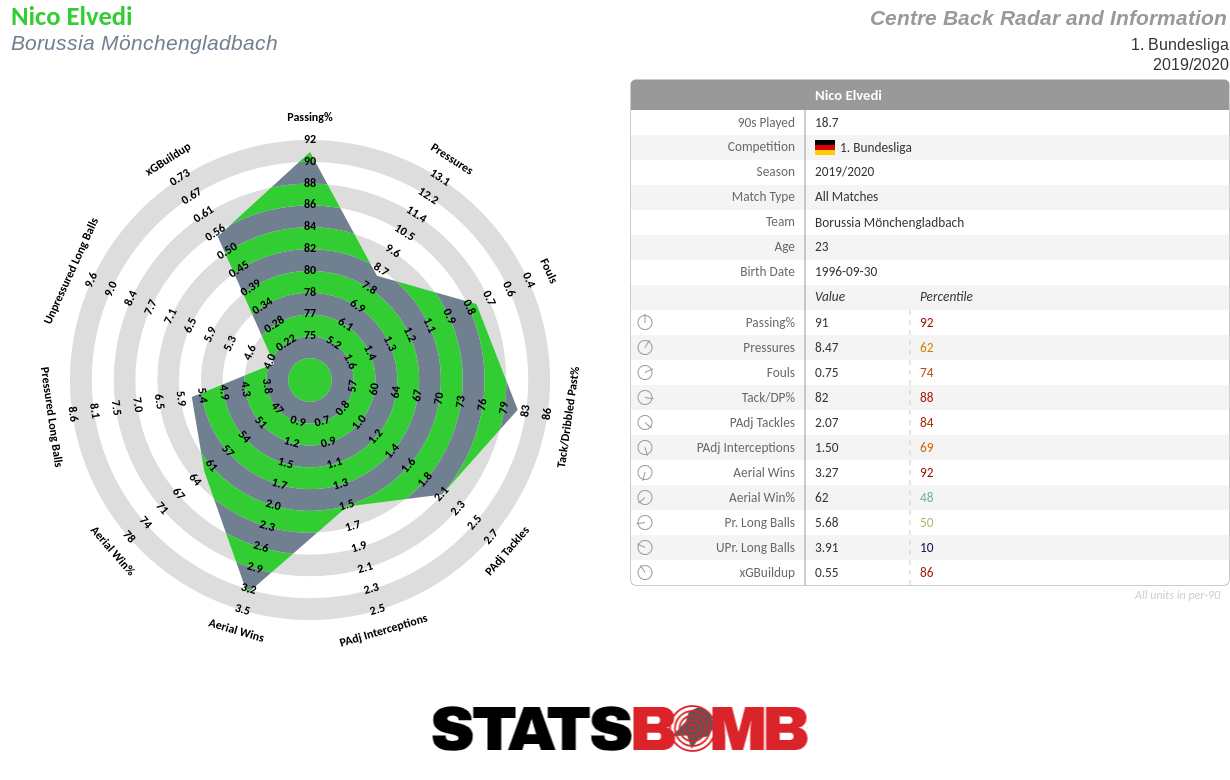
That Elvedi is a very solid player on the defensive side of the ball, was already a known fact in and around German (and Swiss) football. But that the right-footed centre-back - who’s mobile enough to have 57 senior appearances at full-back in previous seasons - is a crucial pawn in Gladbach’s build-up from the back from the ‘wrong side’ (left) of the 3+1 structure that his team uses, has been a wildly impressive development to watch.
Bayer Leverkusen: Kevin Volland
Sure, creative and skillful talents such as Kai Havertz, Leon Bailey, Moussa Diaby and Nadiem Amiri each have a rosy footballing future ahead of them. But take one guess which player in Die Werkself (‘The Workman’s Eleven) has been involved in the most goals this season? Hint: it’s the same dude who led the team in combined goals and assists in 2018-19 and 2017-18. Hot take: it’s pretty weird that Kevin Volland hasn’t logged a national team minute since 2016.
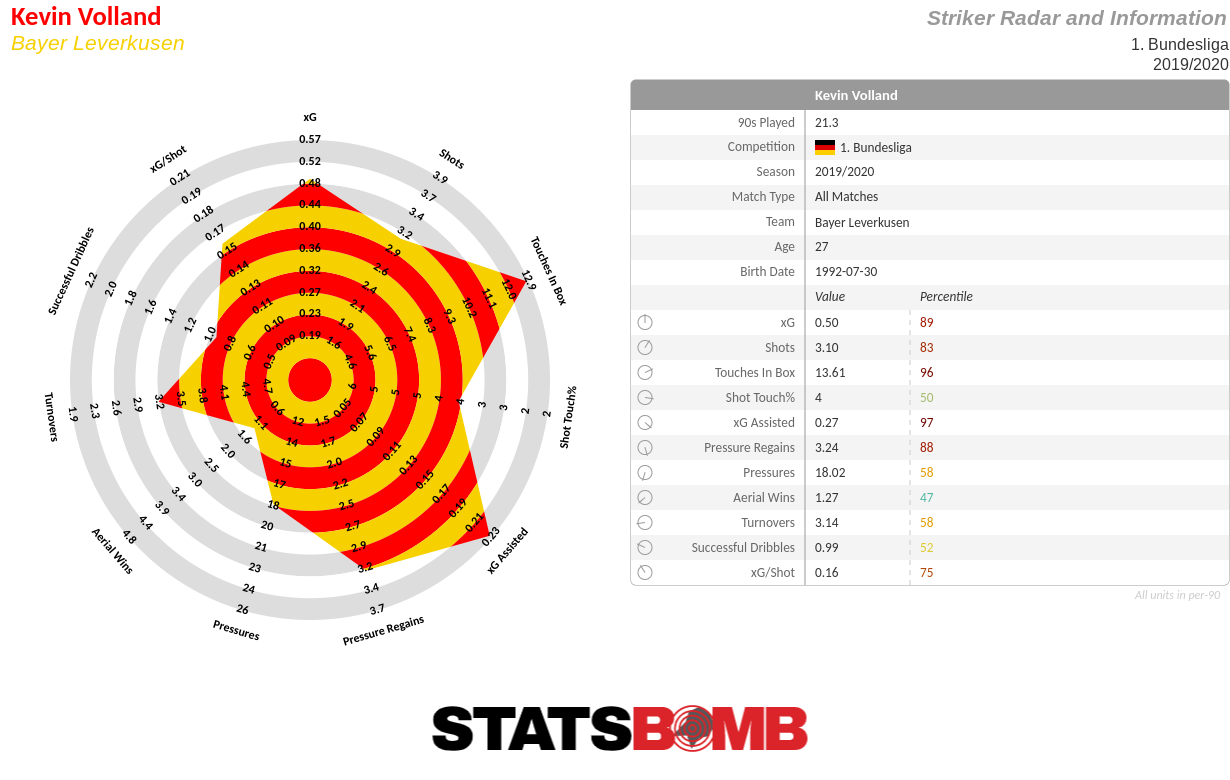
Volland, who can also contribute as an inverted winger on both flanks or as a second striker, shines in a pretty complex role as the frontman in Peter Bosz’ playing system. He’s responsible for the first wave of pressure in the Bosz-press when the opposition has the ball, and drifts wide and towards midfield in possession, to pose opposing centre backs questions in their marking scheme. He does all this, and consistently gets good shots off. Volland is good, y’all. Real good.
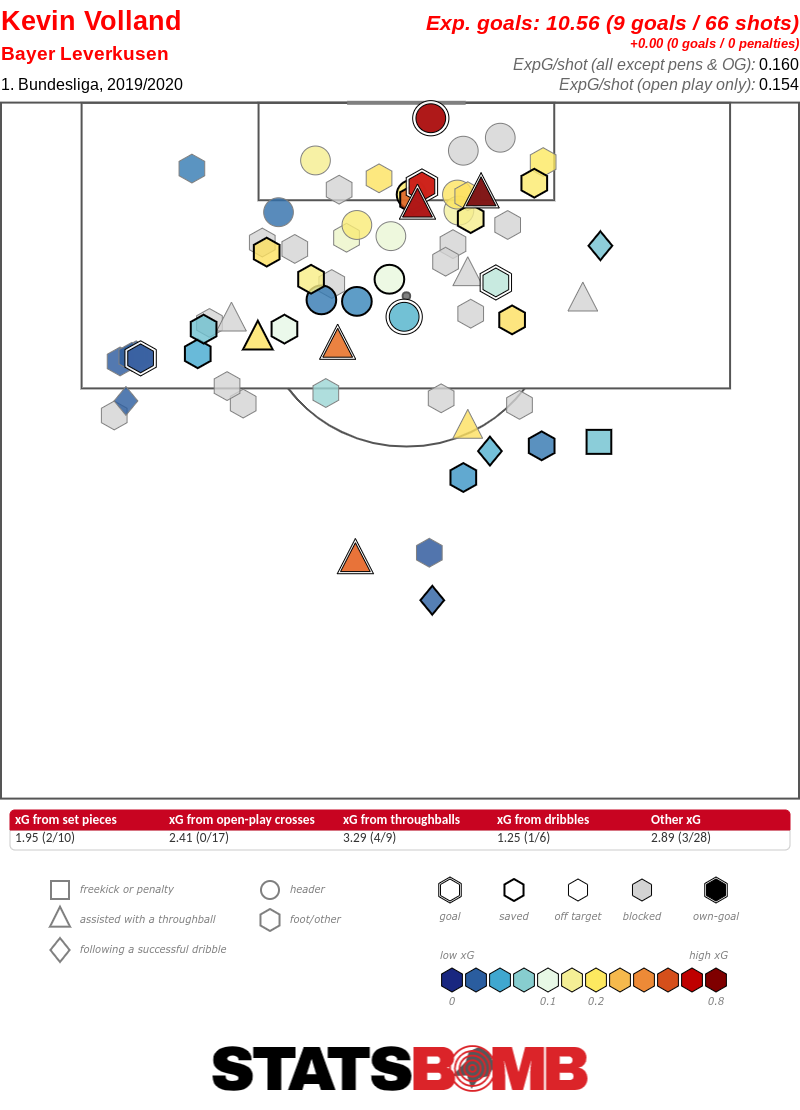
How many more years will he have to keep doing this until he's no longer eligible to round out our stealth MVP list?
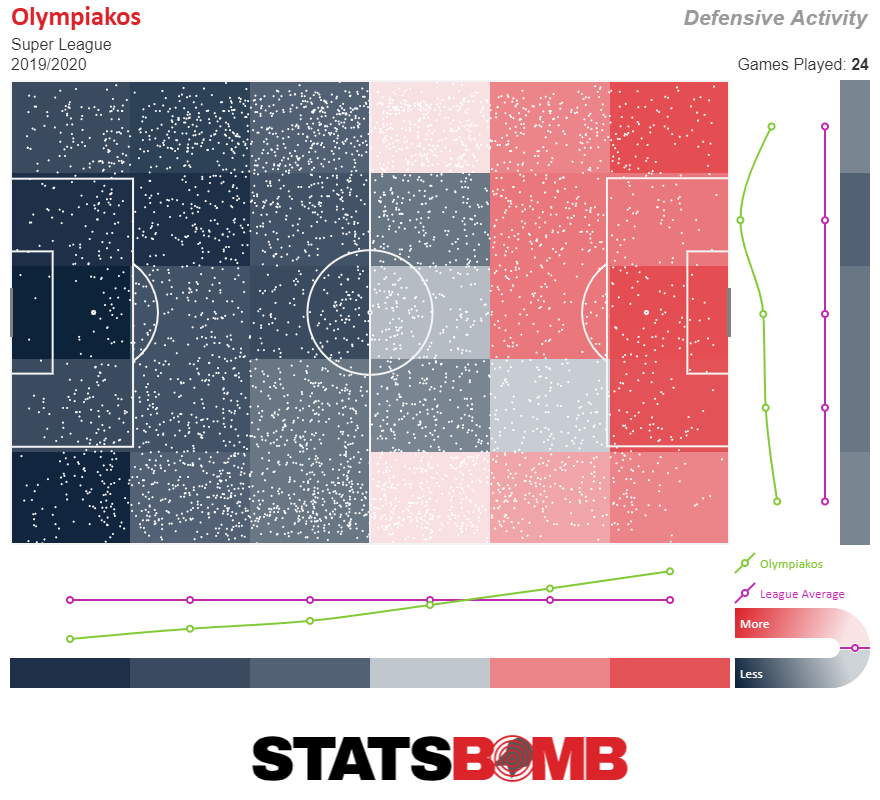
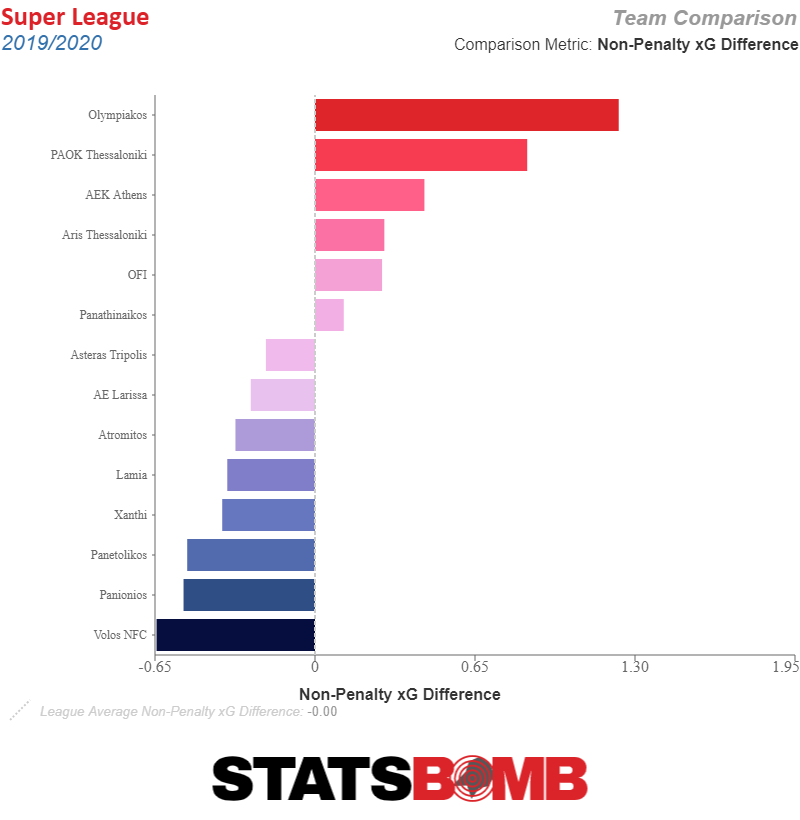
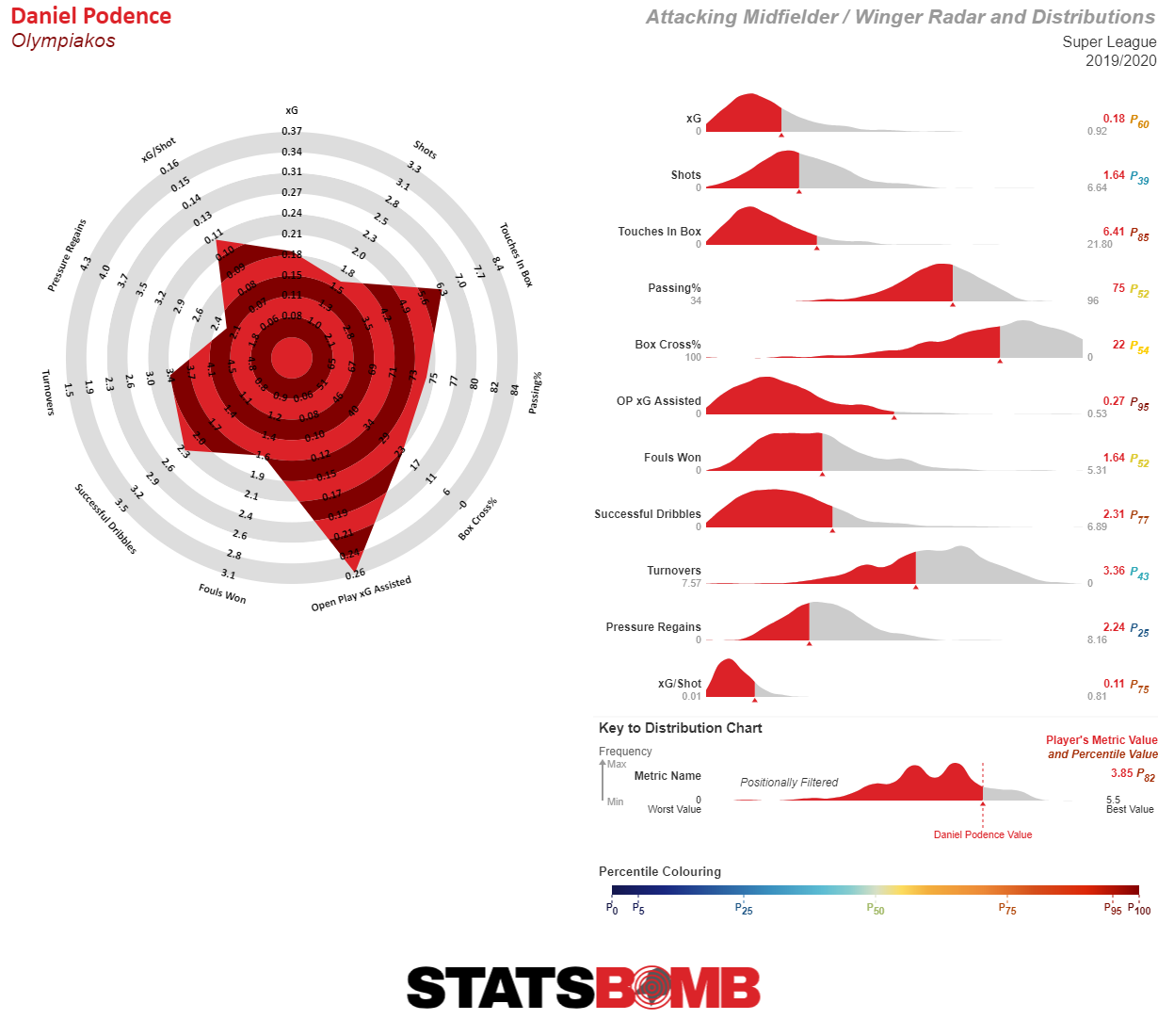
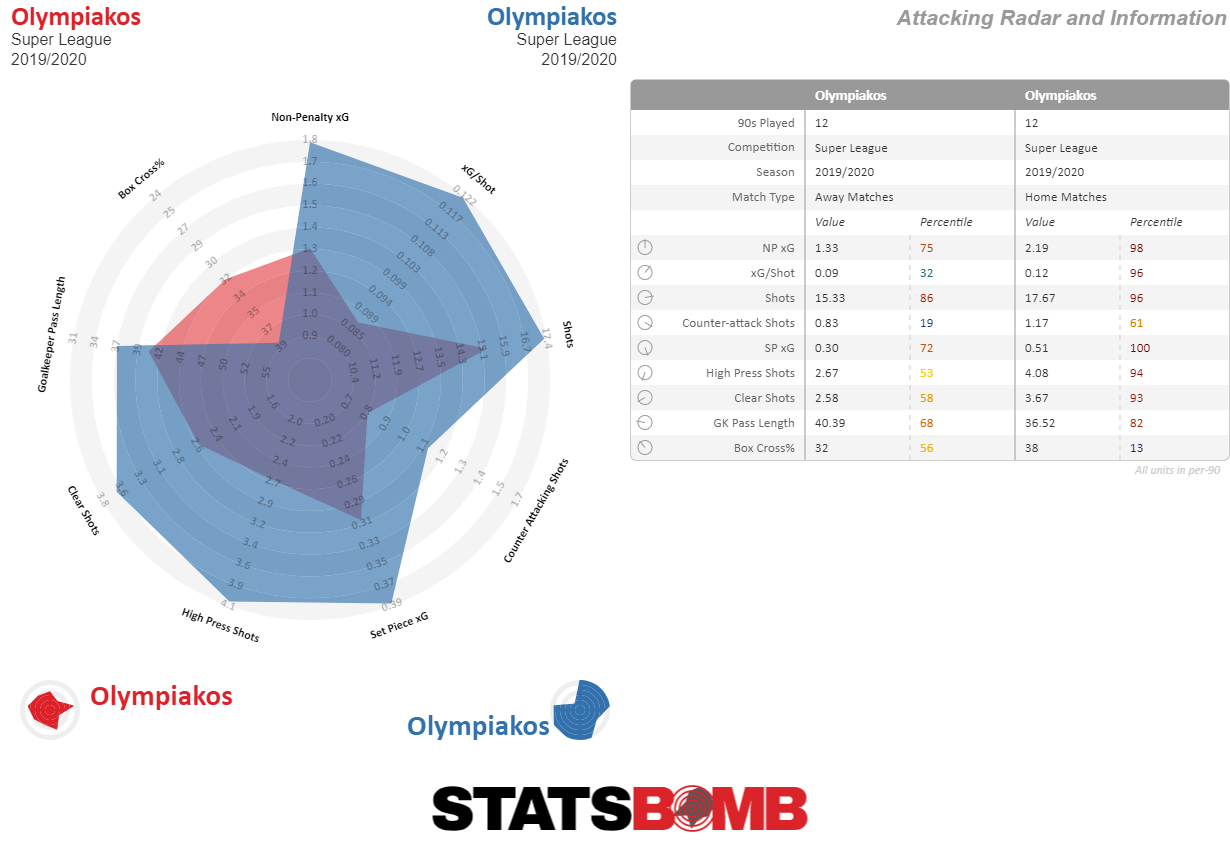
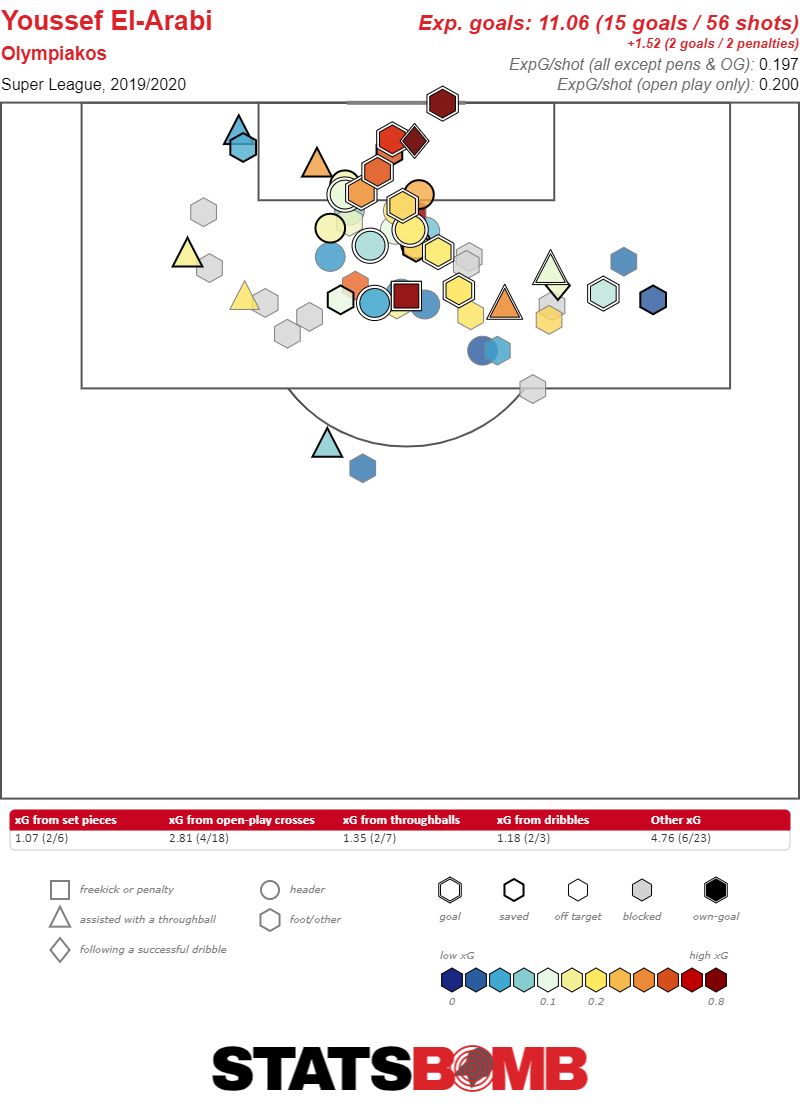
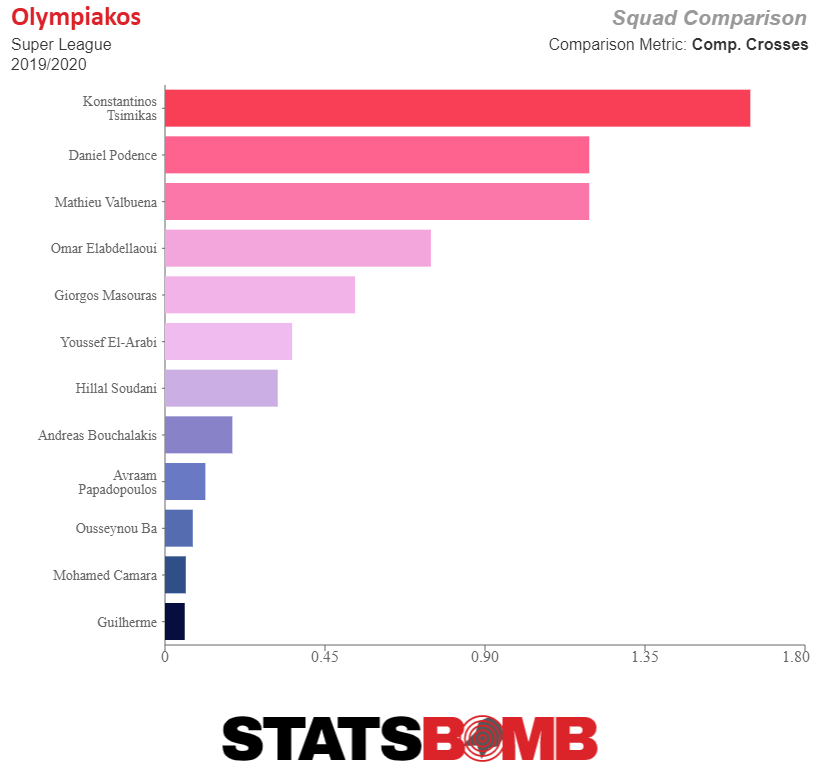
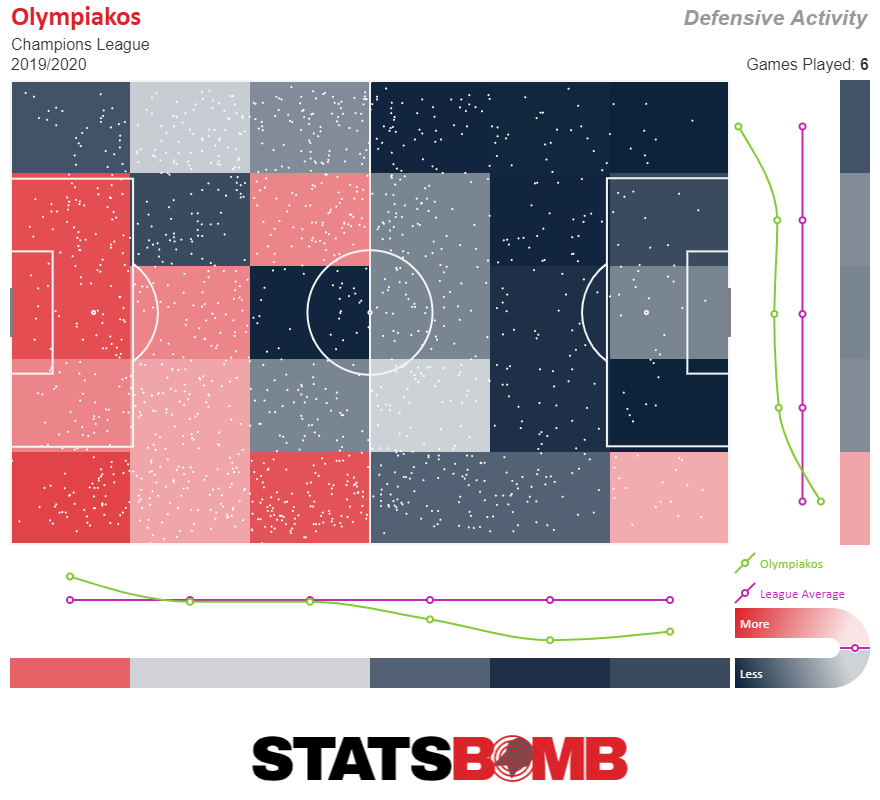
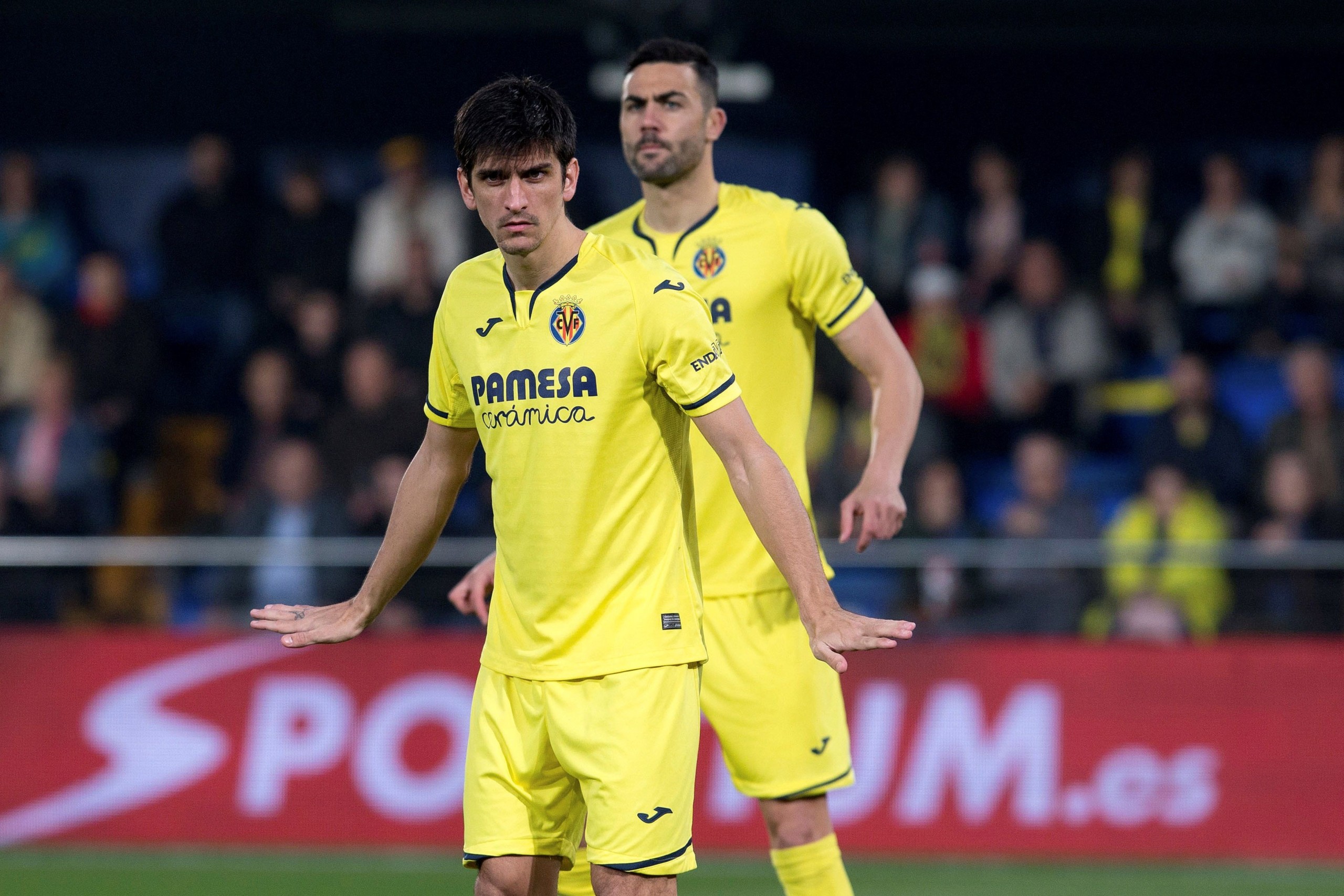
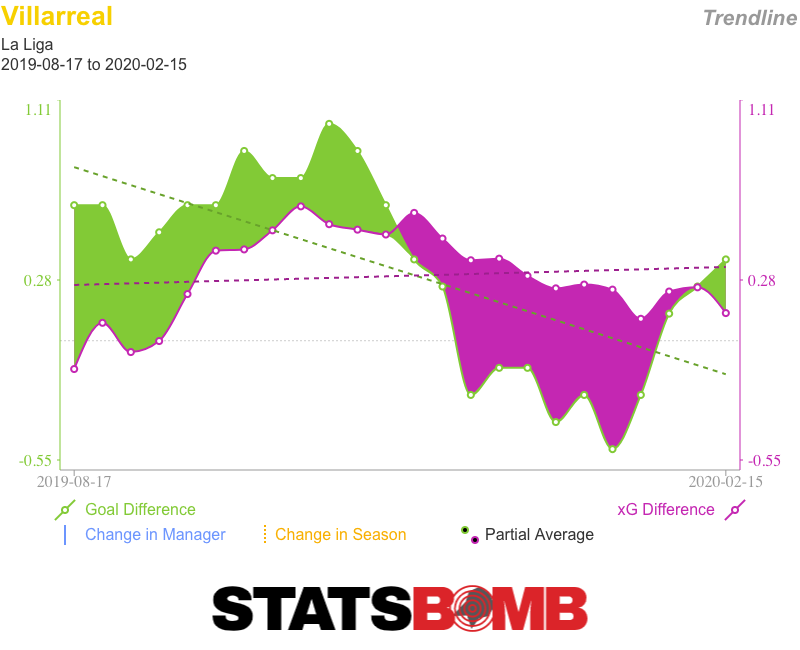
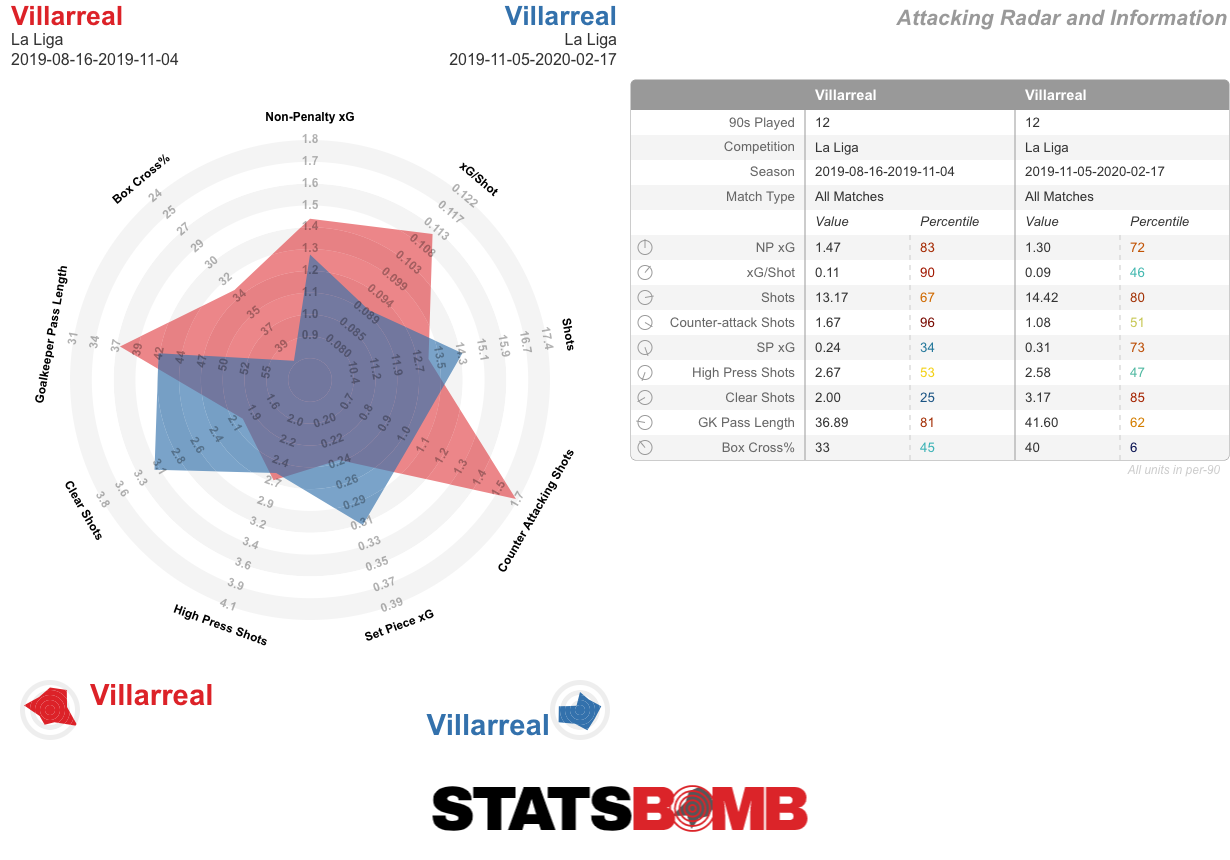
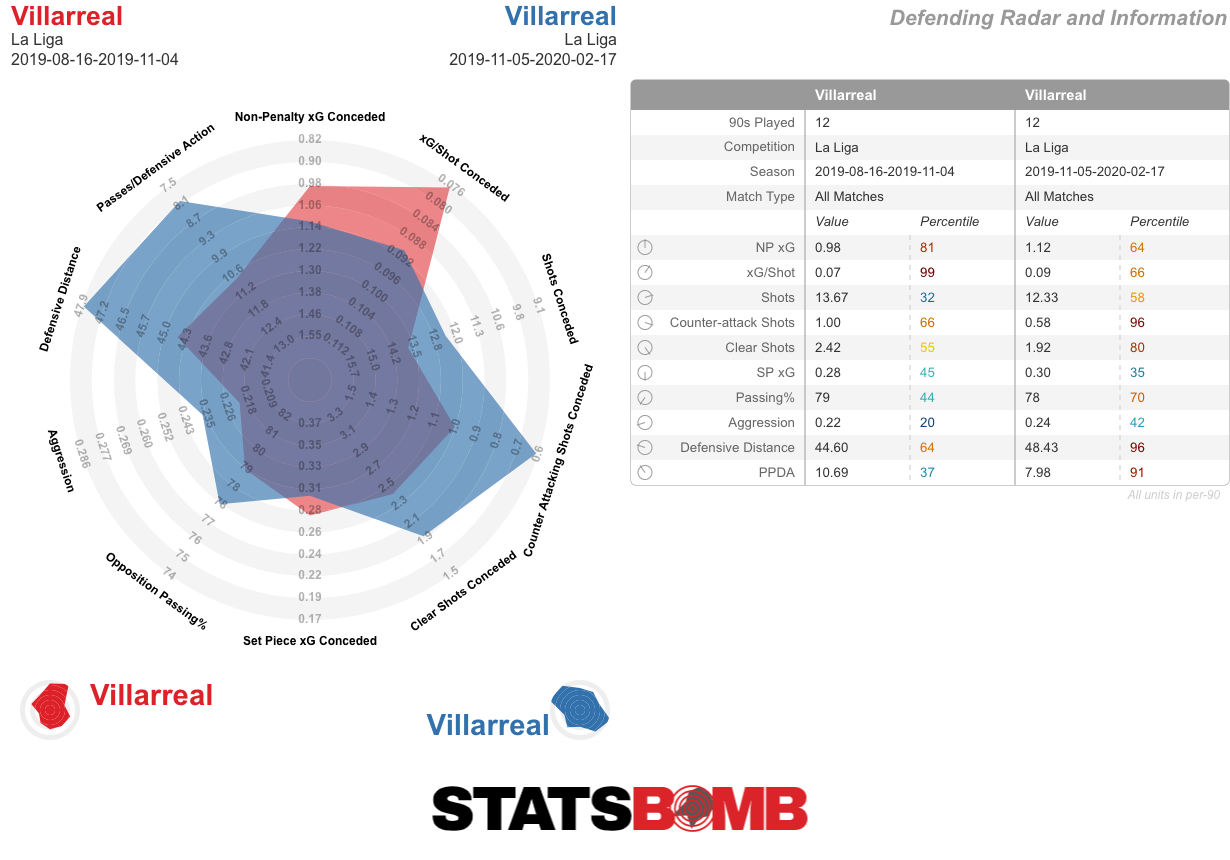
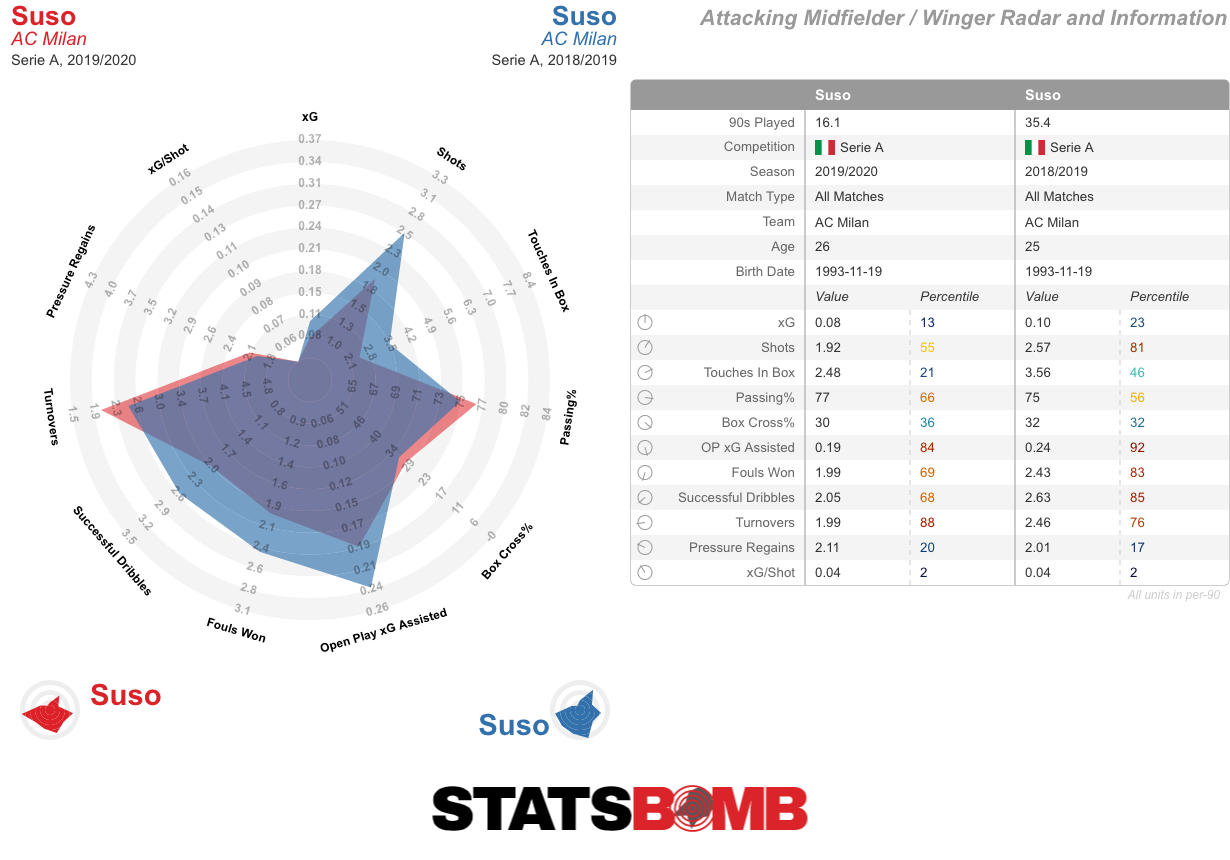
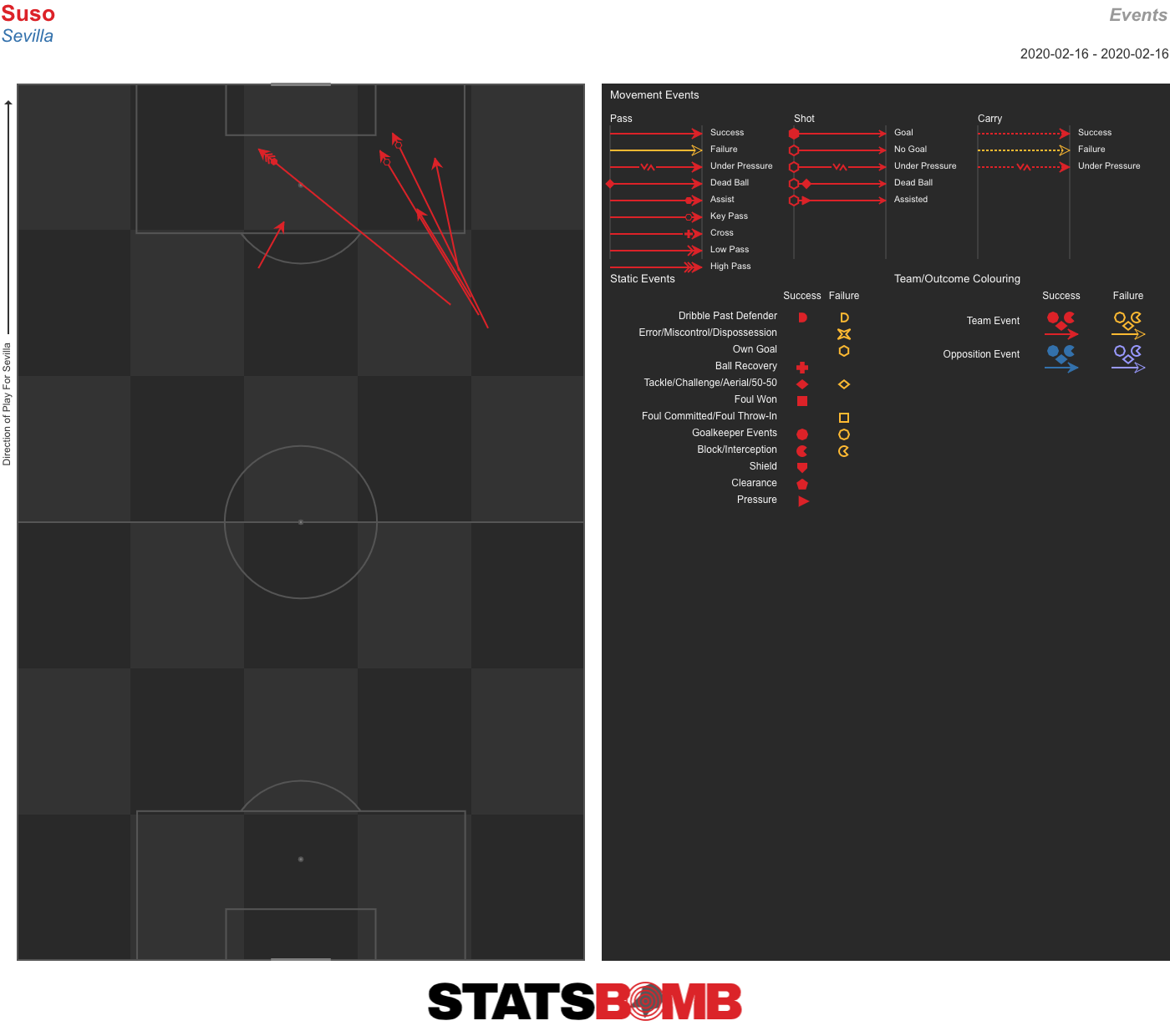
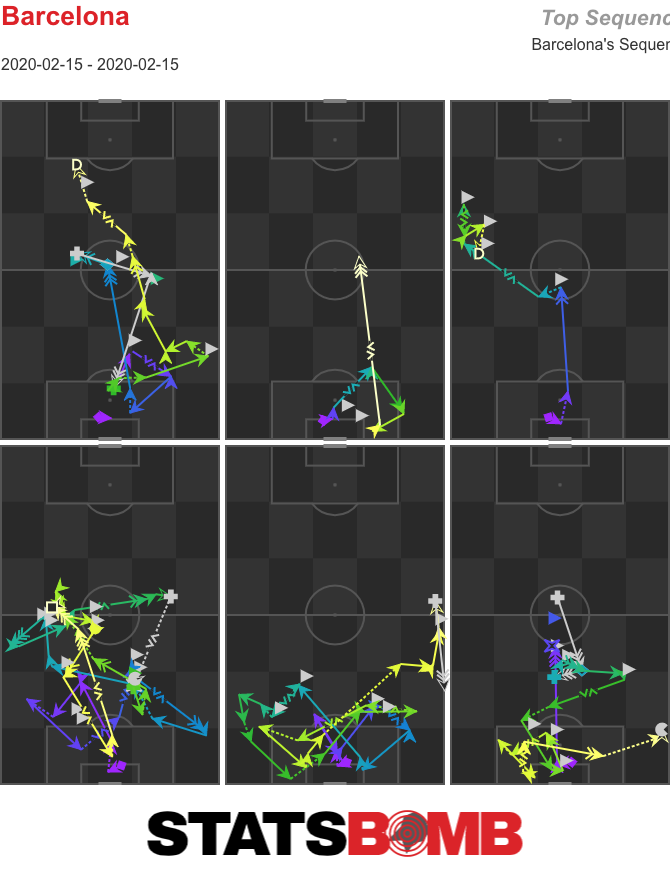
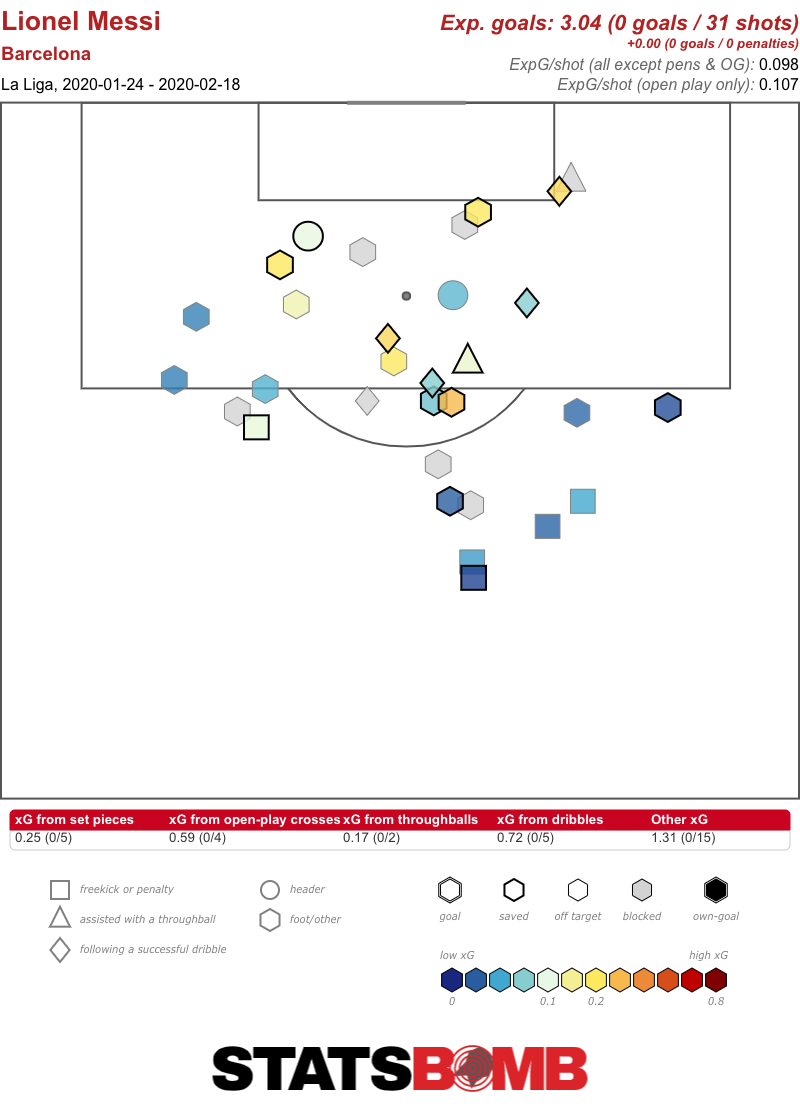
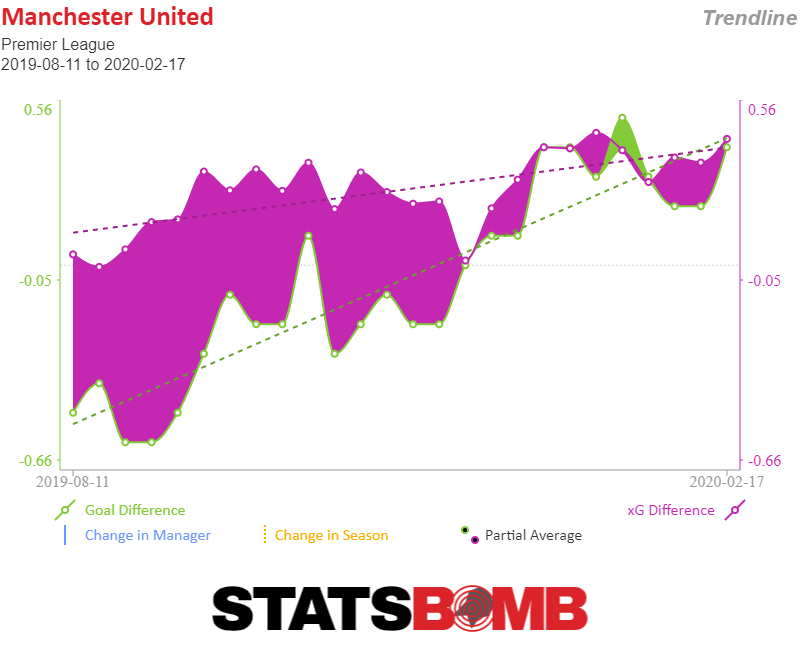
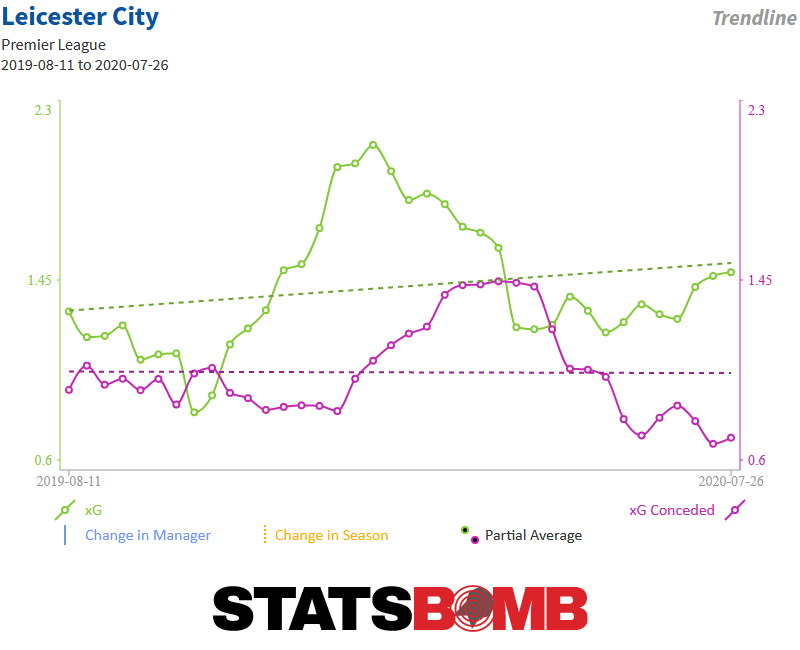
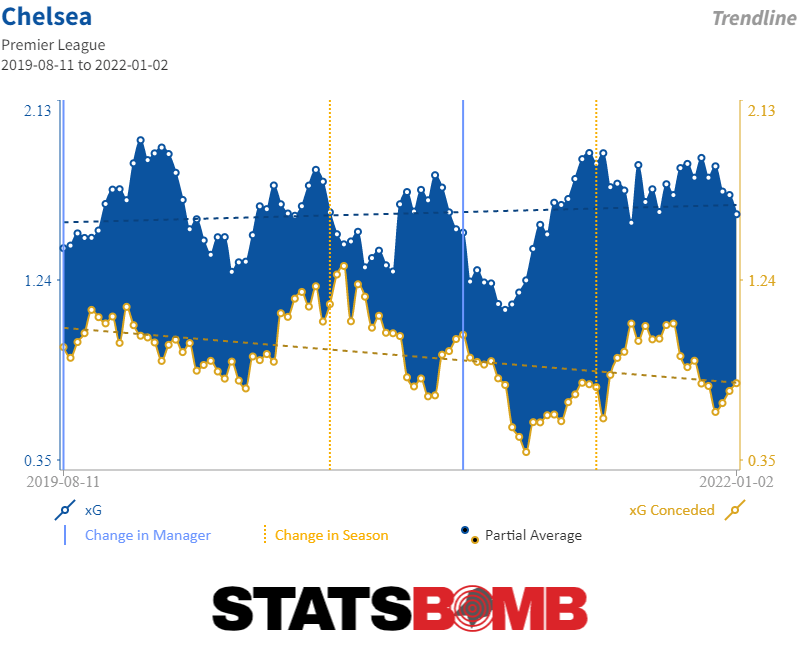
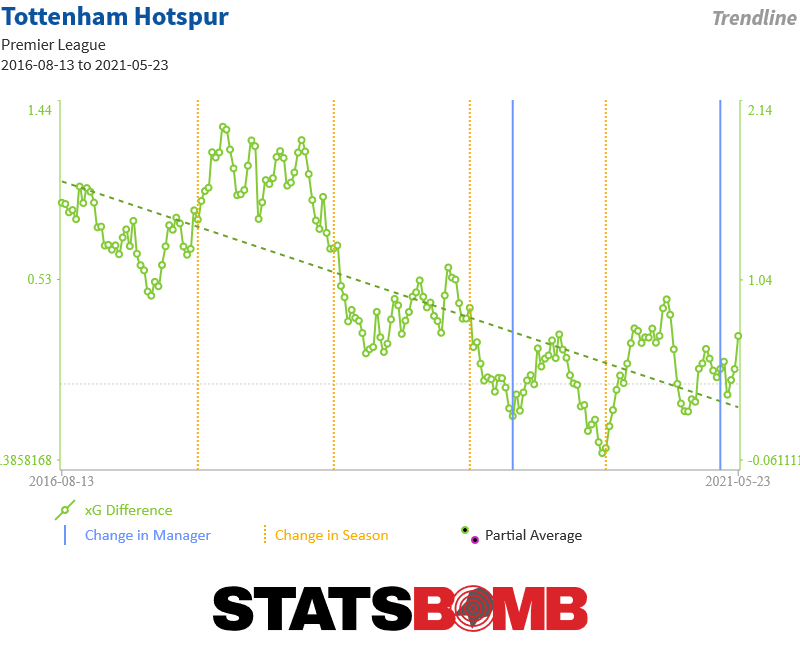
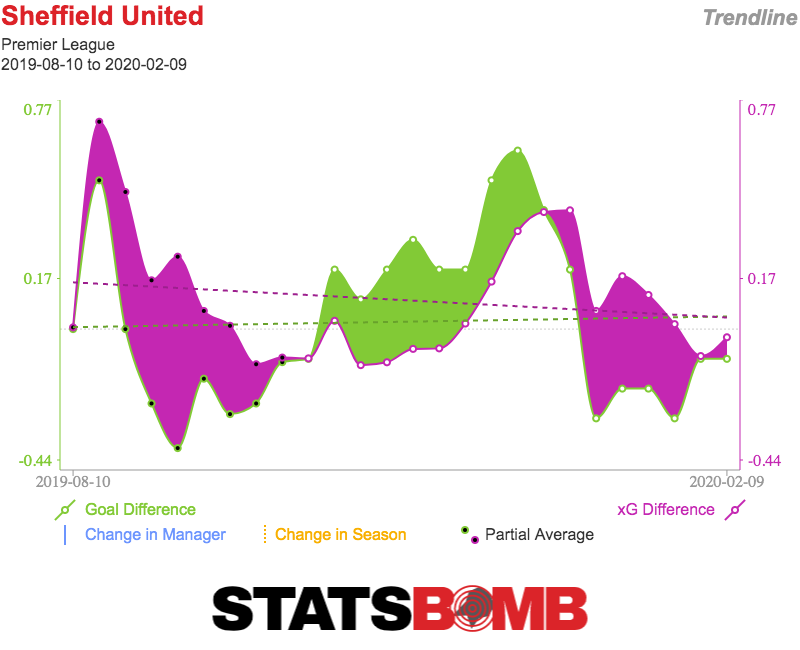
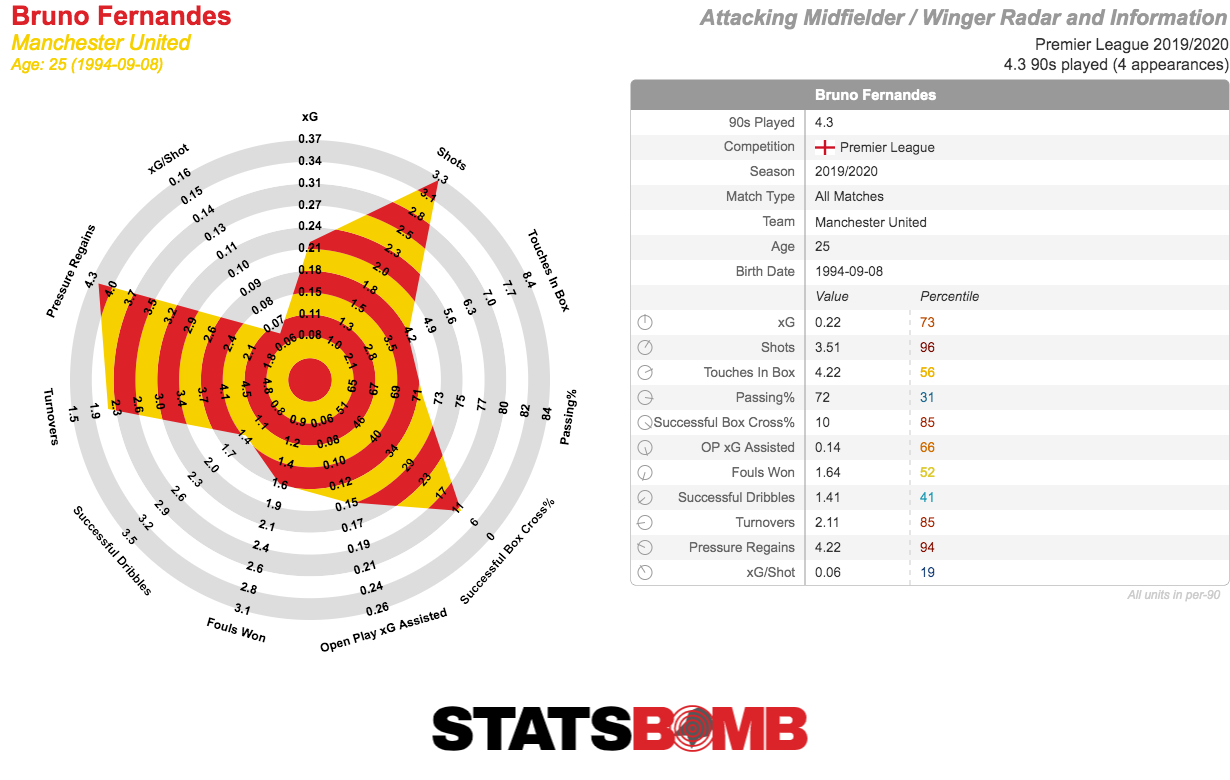
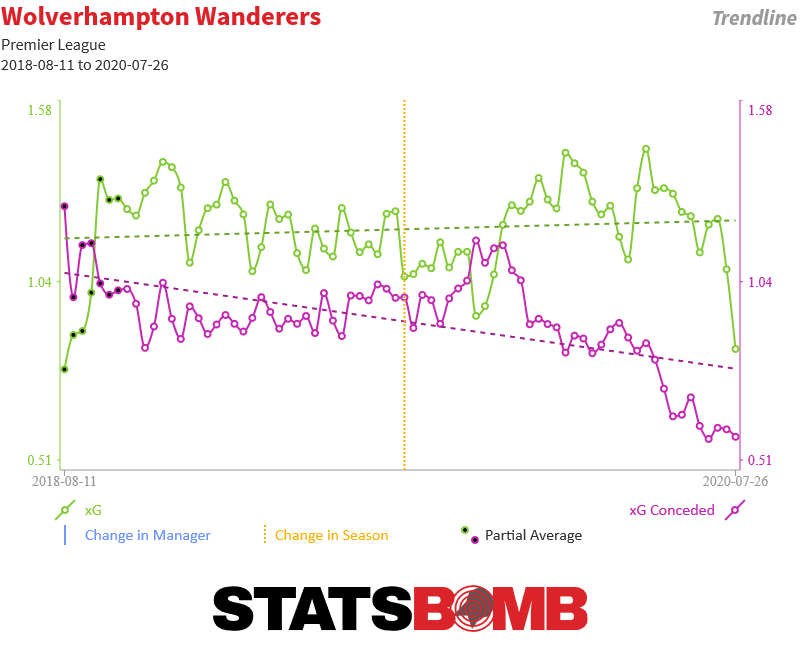
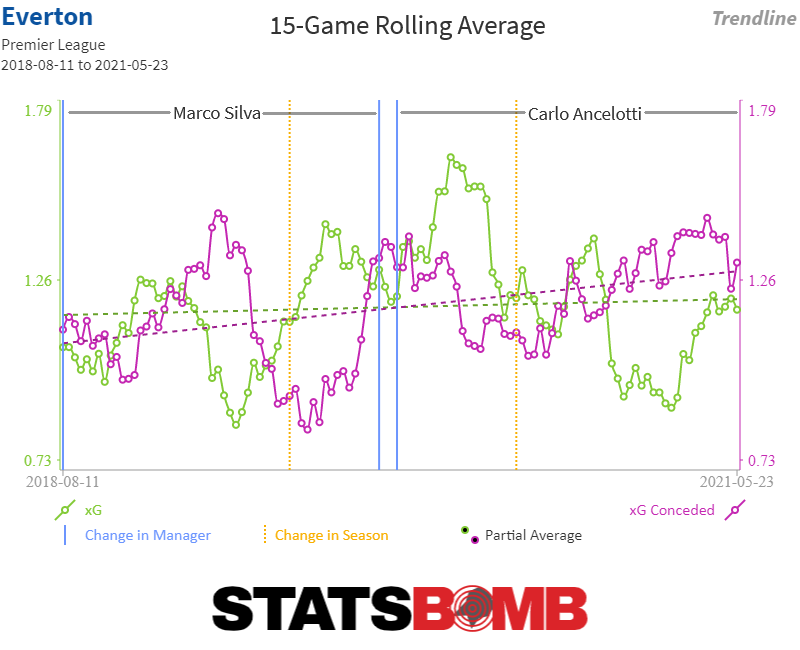
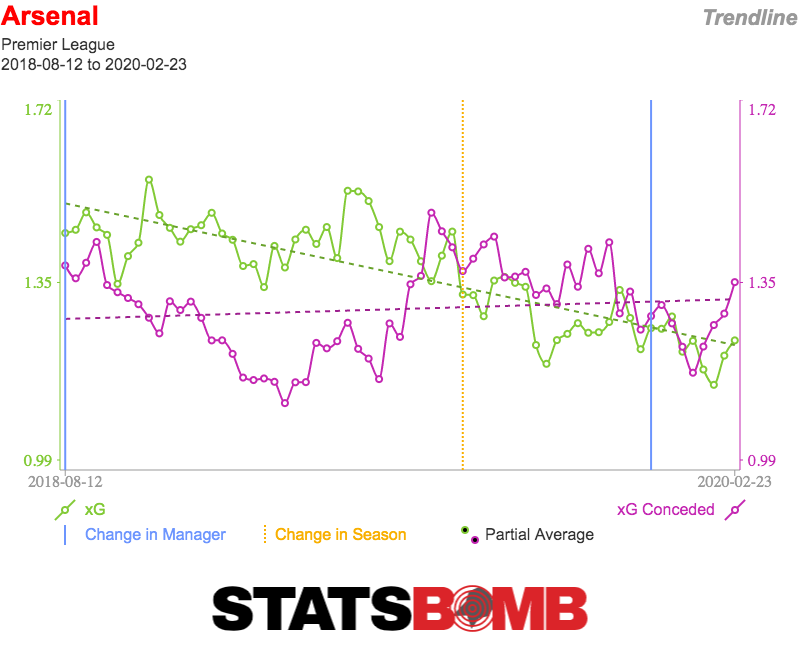
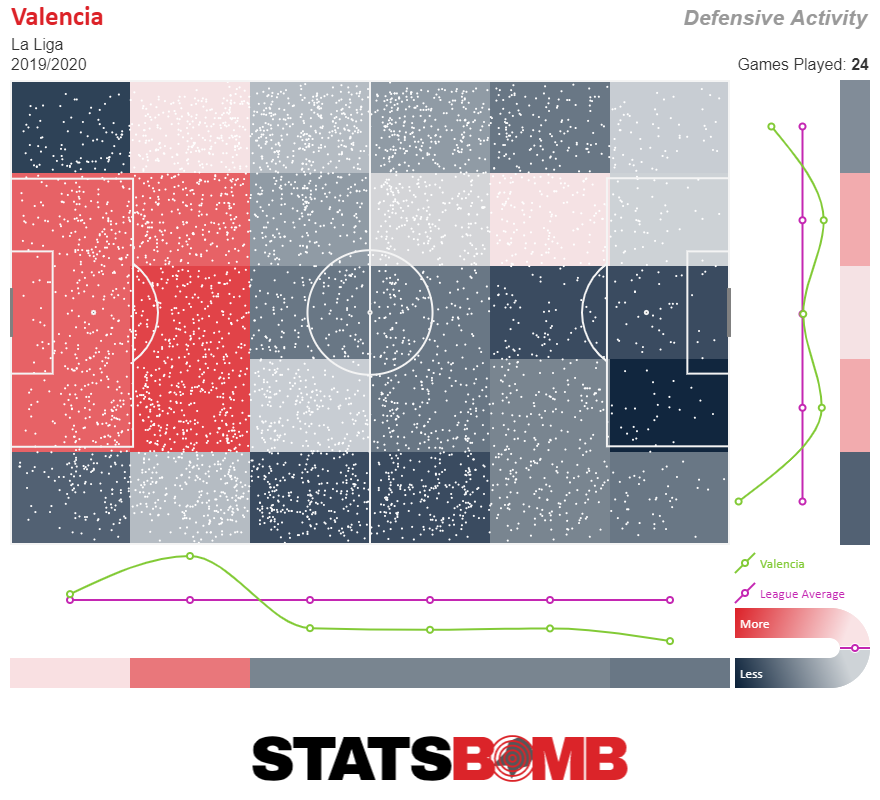
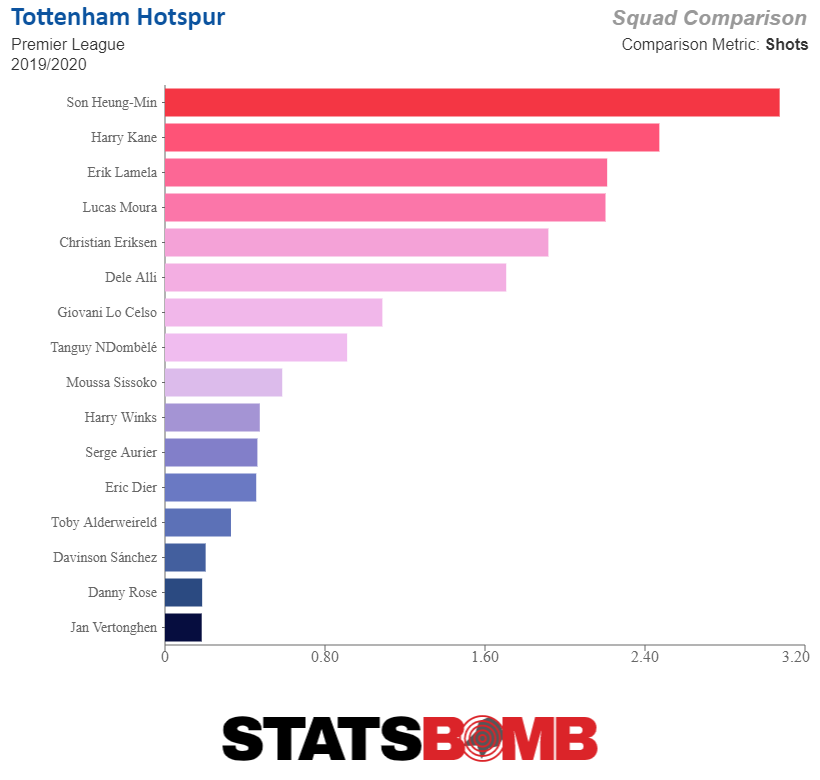 Lamela and Moura are both at the top of the list, though Lamela’s 2.21 shots per 90 minutes are from extremely limited minutes while Moura’s are simply not an impressive return for a player who has spent significant minutes functioning as a striker. Bergwijn hasn’t yet played 600 minutes for Spurs, so he doesn’t make the chart, but he was at 2.19 per 90 in the easier Eredivisie with PSV Eindhovern. It’s possible that Spurs will be ably to get by simply by spreading all the shots around, but that’s a pretty big ask against a very good RB Leipzig team. Of course, Mourinho has experience scuttling more talented teams in the Champions League. Perhaps the most relevant place to look for inspiration is the first year of his second stint with Chelsea. He reached the semifinals of the Champions League despite the fact that the only two true strikers at his disposal were a mostly washed out Samuel Eto’o and a mostly injured Fernando Torres. So, Spurs fans can take heart that stranger things have, in fact, happened. If Mourinho’s history is any guide, he will attempt to muddy up the game and nip a goal on the counter, first and foremost denying control of the midfield to Leipzig. If that fails, he'll hope his side will be able to absorb sustained pressure. For Leipzig this likely means they’ll have to find alternate avenues to get into dangerous positions. Luckily for them, they have Timo Werner.
Lamela and Moura are both at the top of the list, though Lamela’s 2.21 shots per 90 minutes are from extremely limited minutes while Moura’s are simply not an impressive return for a player who has spent significant minutes functioning as a striker. Bergwijn hasn’t yet played 600 minutes for Spurs, so he doesn’t make the chart, but he was at 2.19 per 90 in the easier Eredivisie with PSV Eindhovern. It’s possible that Spurs will be ably to get by simply by spreading all the shots around, but that’s a pretty big ask against a very good RB Leipzig team. Of course, Mourinho has experience scuttling more talented teams in the Champions League. Perhaps the most relevant place to look for inspiration is the first year of his second stint with Chelsea. He reached the semifinals of the Champions League despite the fact that the only two true strikers at his disposal were a mostly washed out Samuel Eto’o and a mostly injured Fernando Torres. So, Spurs fans can take heart that stranger things have, in fact, happened. If Mourinho’s history is any guide, he will attempt to muddy up the game and nip a goal on the counter, first and foremost denying control of the midfield to Leipzig. If that fails, he'll hope his side will be able to absorb sustained pressure. For Leipzig this likely means they’ll have to find alternate avenues to get into dangerous positions. Luckily for them, they have Timo Werner. 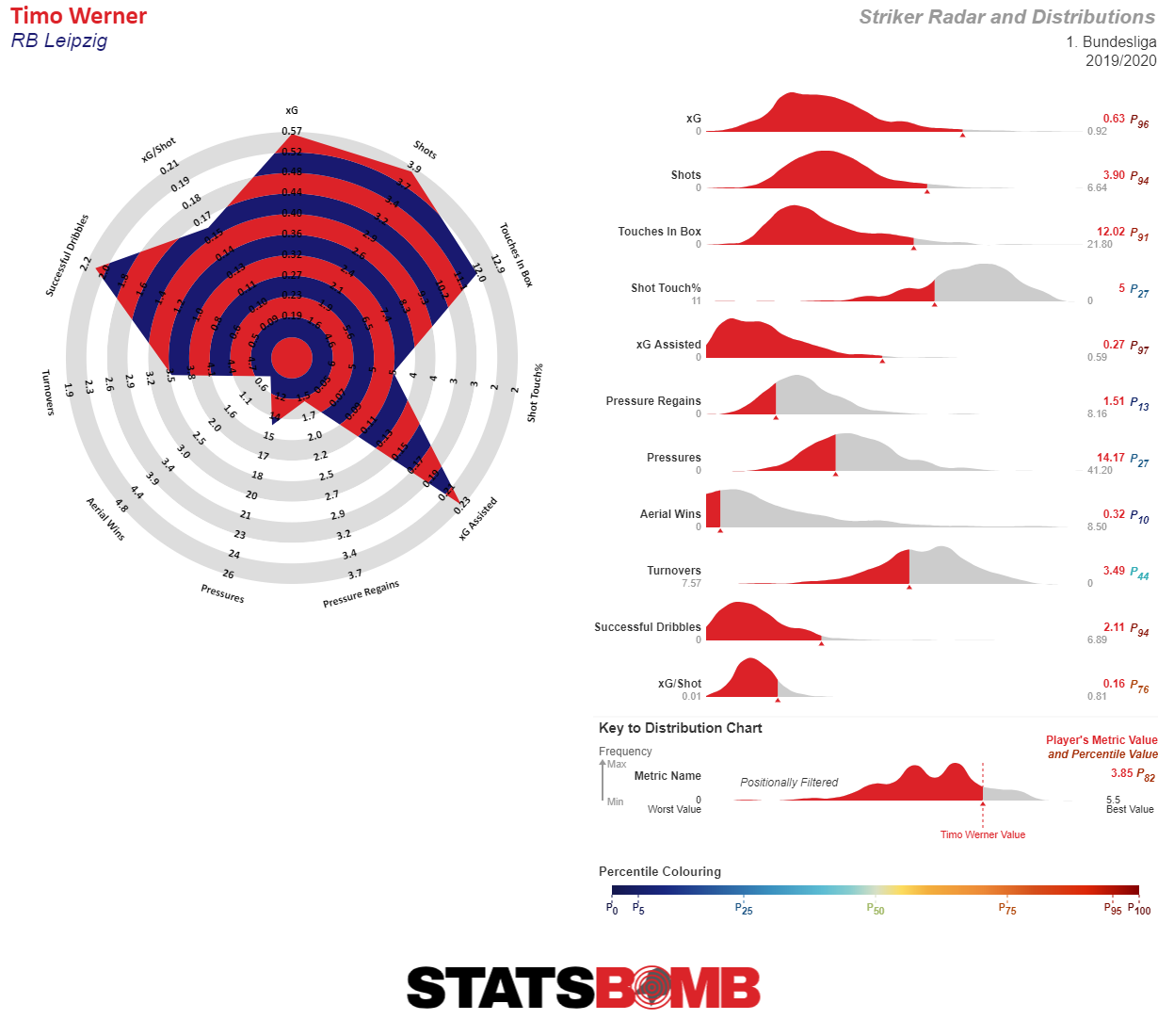 It’s not just his obvious goal-scoring ability, but the fact that he’s equally superb at providing an outlet on the wings to receive the ball and turn and run in space. Here are all the successful passes played from Leipzig’s own half that Werner's received in the opposition half.
It’s not just his obvious goal-scoring ability, but the fact that he’s equally superb at providing an outlet on the wings to receive the ball and turn and run in space. Here are all the successful passes played from Leipzig’s own half that Werner's received in the opposition half. 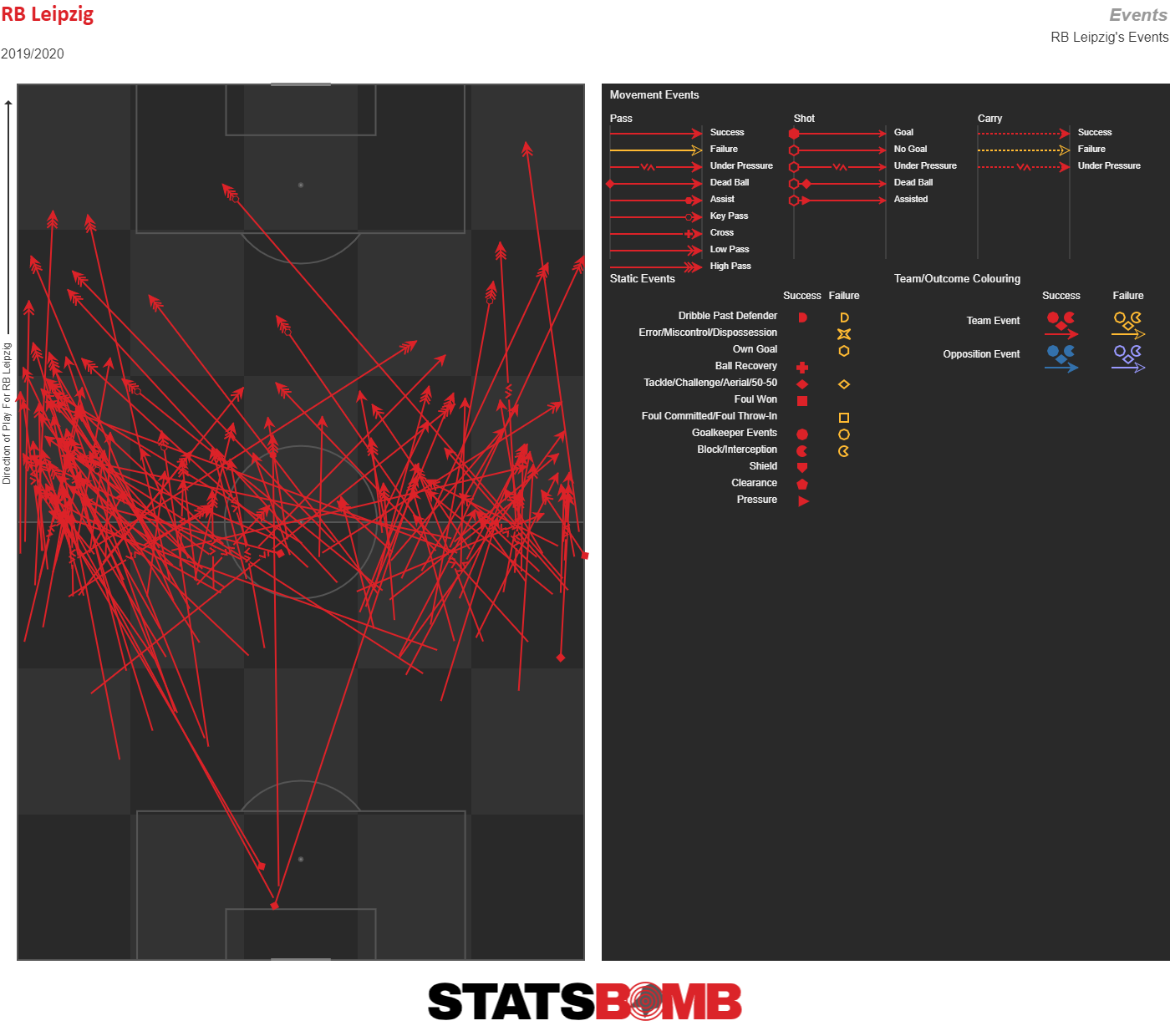 Don’t be surprised if Spurs work hard to take away Leipzig’s ability to combine in midfield, forcing the German side to turn toward springing Werner over the top and in behind Spurs right back Serge Aurier. It’s nice when you can rely on a player who is both an expert goal scorer and an elite ball mover on the wing.
Don’t be surprised if Spurs work hard to take away Leipzig’s ability to combine in midfield, forcing the German side to turn toward springing Werner over the top and in behind Spurs right back Serge Aurier. It’s nice when you can rely on a player who is both an expert goal scorer and an elite ball mover on the wing. 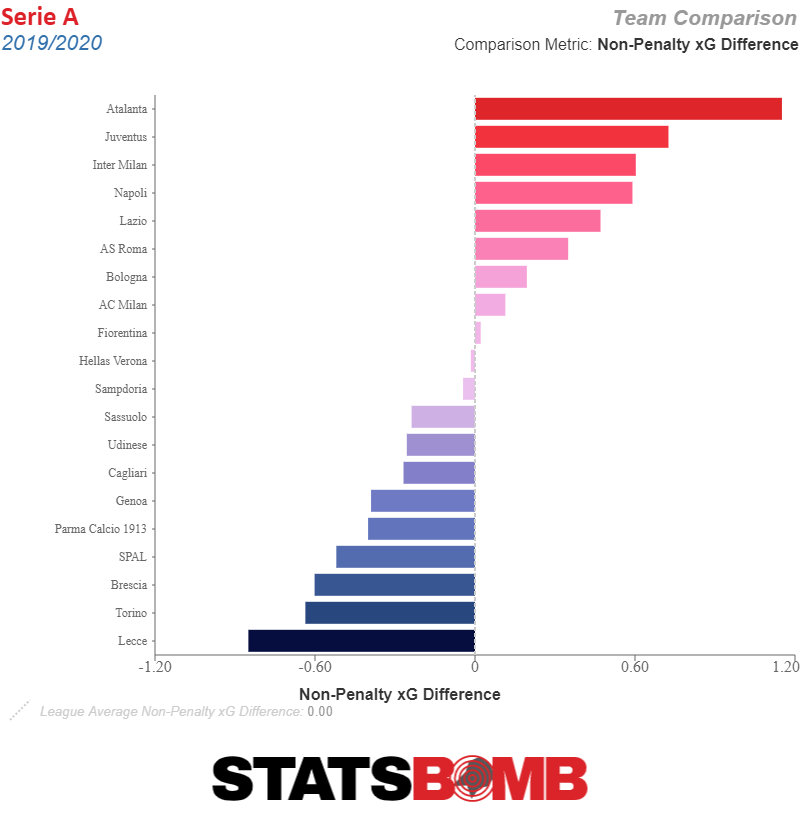 Most impressively, Atalanta have added a strong defense to the attacking juggernaut that carried them to the upper reaches of the table over the past few seasons. Only Juventus have a stingier record when it comes to xG conceded.
Most impressively, Atalanta have added a strong defense to the attacking juggernaut that carried them to the upper reaches of the table over the past few seasons. Only Juventus have a stingier record when it comes to xG conceded. 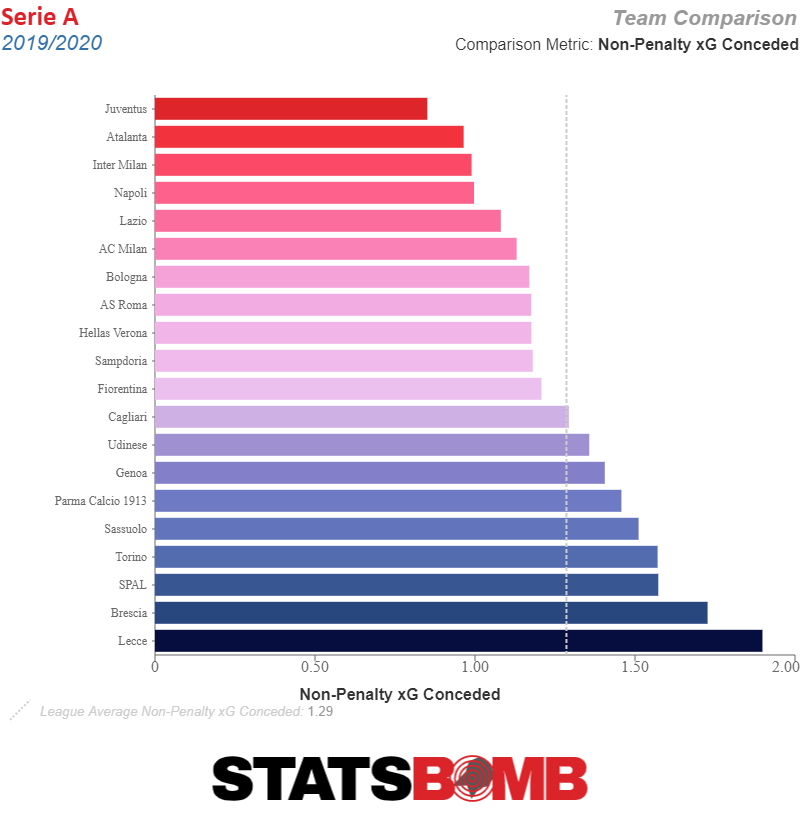 This isn’t the profile of a team that is just be happy to be here. Rather, Atalanta look prepared to dispatch a much weaker opponent as they gear up for stiffer challenges deeper in the tournament. In part, that’s because Valencia are simply not a good side at the moment. They sit seventh in La Liga, tied with Villarreal on 38 points, but the stats suggest that position strongly flatters them. They have one of the worst non-penalty xG differences in the league. The side’s attack is average, but on defense they are simply absolutely terrible, the second-worst team in La Liga in xG conceded.
This isn’t the profile of a team that is just be happy to be here. Rather, Atalanta look prepared to dispatch a much weaker opponent as they gear up for stiffer challenges deeper in the tournament. In part, that’s because Valencia are simply not a good side at the moment. They sit seventh in La Liga, tied with Villarreal on 38 points, but the stats suggest that position strongly flatters them. They have one of the worst non-penalty xG differences in the league. The side’s attack is average, but on defense they are simply absolutely terrible, the second-worst team in La Liga in xG conceded. 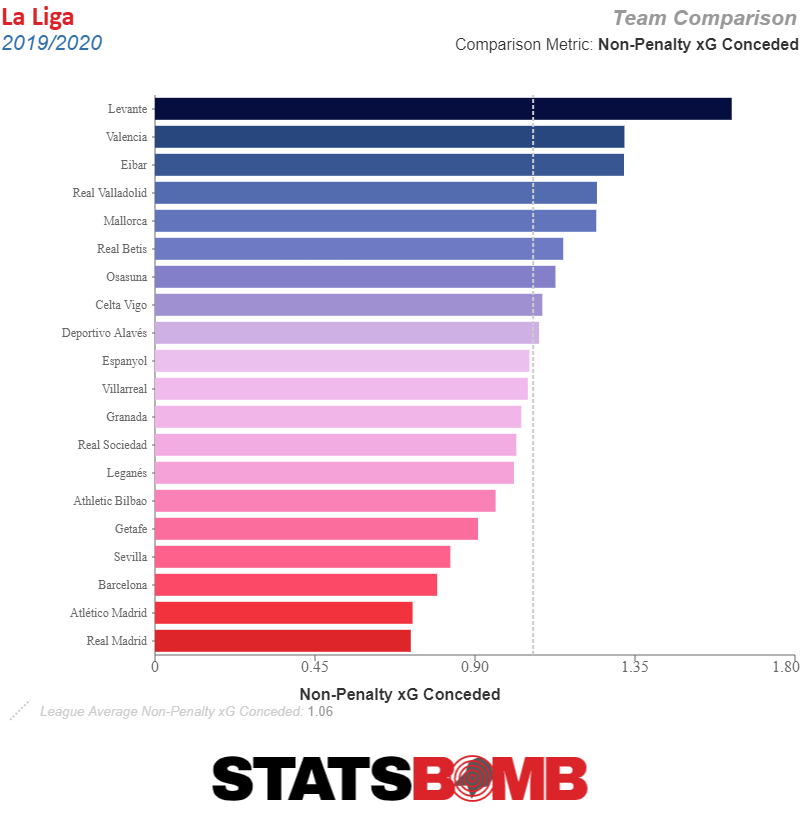 This is, uh, not a sustainable defensive approach.
This is, uh, not a sustainable defensive approach. 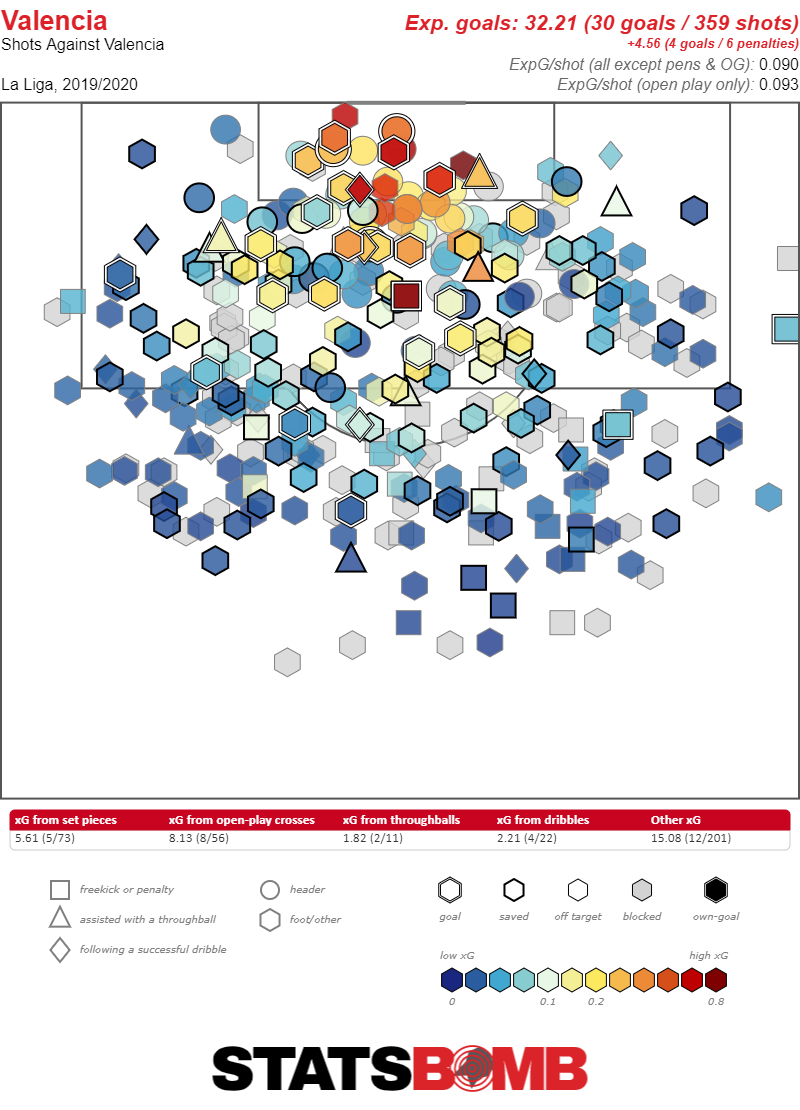 However, they simply give up one too many attempts — even if those attempts are mediocre — conceding almost 15 shots a game on average, the second-most in La Liga. Giving an elite attacking side like Atalanta carte blanche to attack the penalty area is not likely going to end well for this Valencia team. Sports are awesome and unsure and no result is guaranteed, but what is overwhelmingly likely is that Atalanta are going to take the game to Valencia, and Valencia will have to hold on for dear life and hope for an unlikely chance to steal some points against the run of play.
However, they simply give up one too many attempts — even if those attempts are mediocre — conceding almost 15 shots a game on average, the second-most in La Liga. Giving an elite attacking side like Atalanta carte blanche to attack the penalty area is not likely going to end well for this Valencia team. Sports are awesome and unsure and no result is guaranteed, but what is overwhelmingly likely is that Atalanta are going to take the game to Valencia, and Valencia will have to hold on for dear life and hope for an unlikely chance to steal some points against the run of play.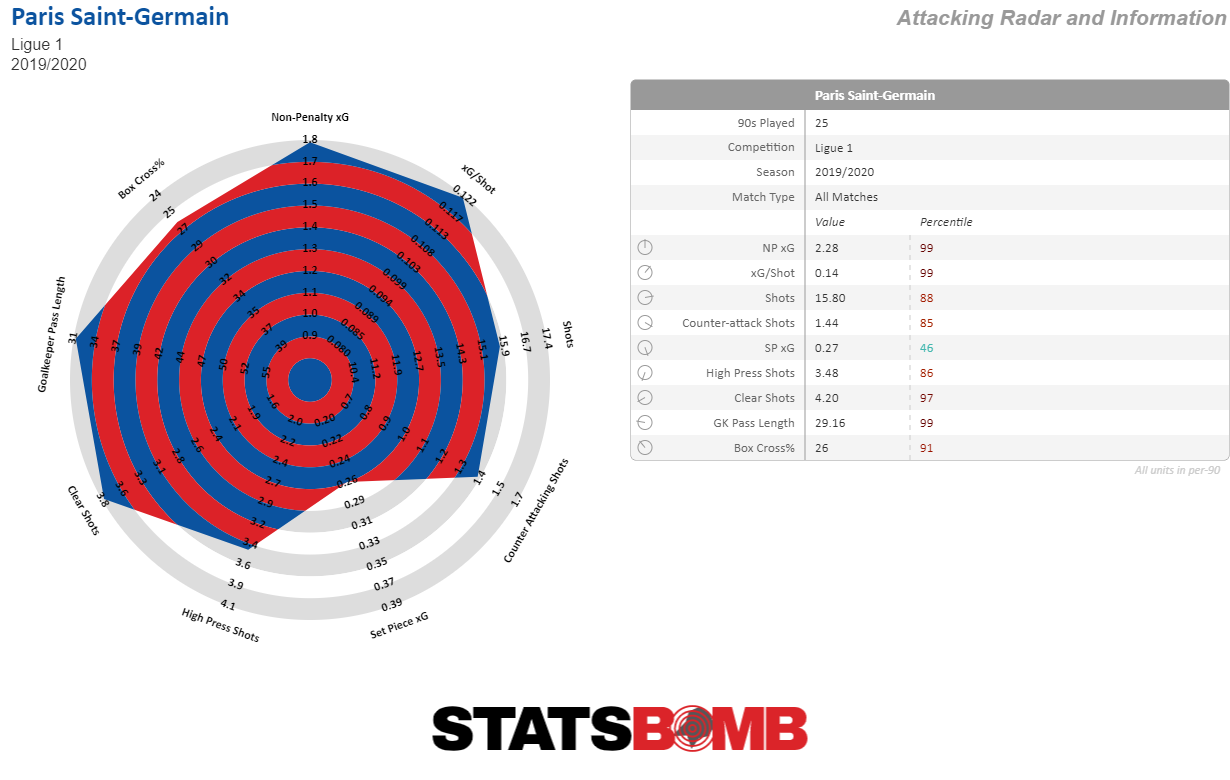
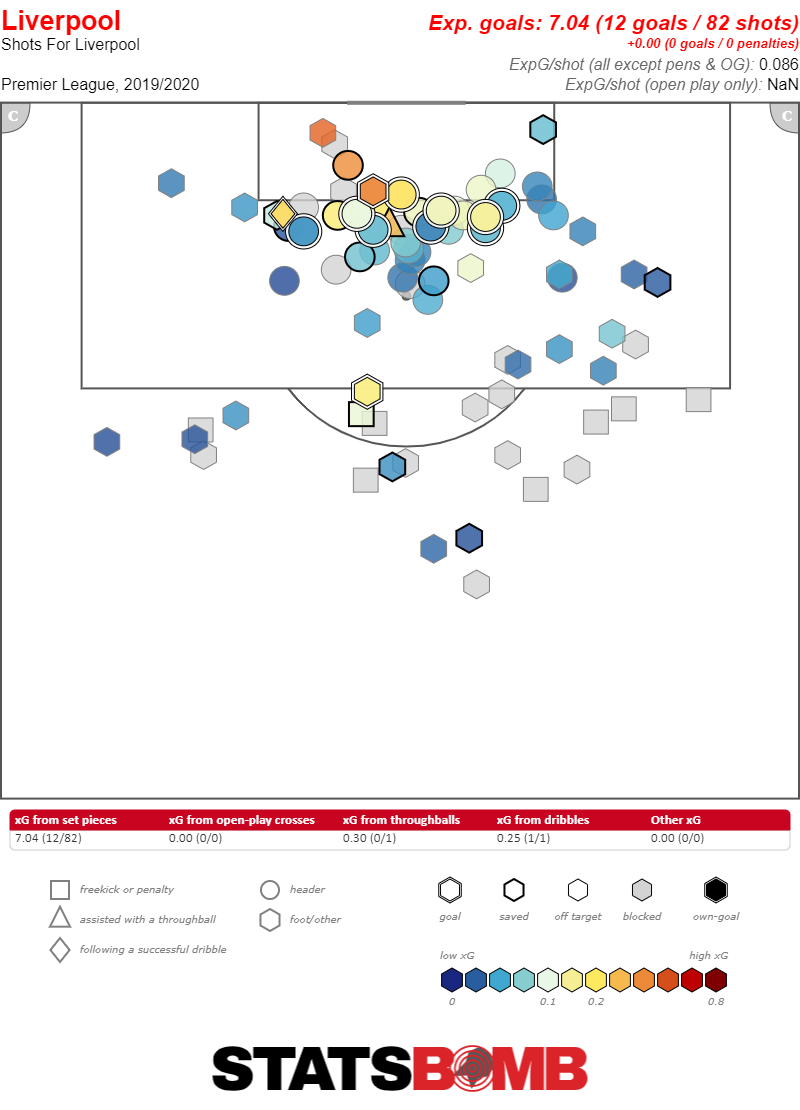 Again, in theory, it's true that tight execution and well-conceived set-piece design can let a team run a bit ahead of expectation on set pieces, but figuring out exactly how much of Liverpool’s achievement is an accurate reflection of execution versus a sprinkling of good fortune is devilishly difficult Similarly, even if we attribute a slice of those goals to being excellent at what they do, historically speaking, it's just a matter of time before defenses adjust and Liverpool’s edge will have to be generated anew from different strategies. Most years, you’d expect this Liverpool strength to be countered by Atlético Madrid’s own strength. After all, a big rugged defense and strong set-piece defending are Diego Simeone's calling card. However, that's not been the case this season. In fact, Atléti have conceded nine times from set pieces this season. On the one hand, that number isn’t quite as bad as it seems. They’ve only conceded 6.86 xG, so there’s some bad luck hovering above them (though even that 6.86 figure is a disappointing total for a Simeone side).
Again, in theory, it's true that tight execution and well-conceived set-piece design can let a team run a bit ahead of expectation on set pieces, but figuring out exactly how much of Liverpool’s achievement is an accurate reflection of execution versus a sprinkling of good fortune is devilishly difficult Similarly, even if we attribute a slice of those goals to being excellent at what they do, historically speaking, it's just a matter of time before defenses adjust and Liverpool’s edge will have to be generated anew from different strategies. Most years, you’d expect this Liverpool strength to be countered by Atlético Madrid’s own strength. After all, a big rugged defense and strong set-piece defending are Diego Simeone's calling card. However, that's not been the case this season. In fact, Atléti have conceded nine times from set pieces this season. On the one hand, that number isn’t quite as bad as it seems. They’ve only conceded 6.86 xG, so there’s some bad luck hovering above them (though even that 6.86 figure is a disappointing total for a Simeone side). 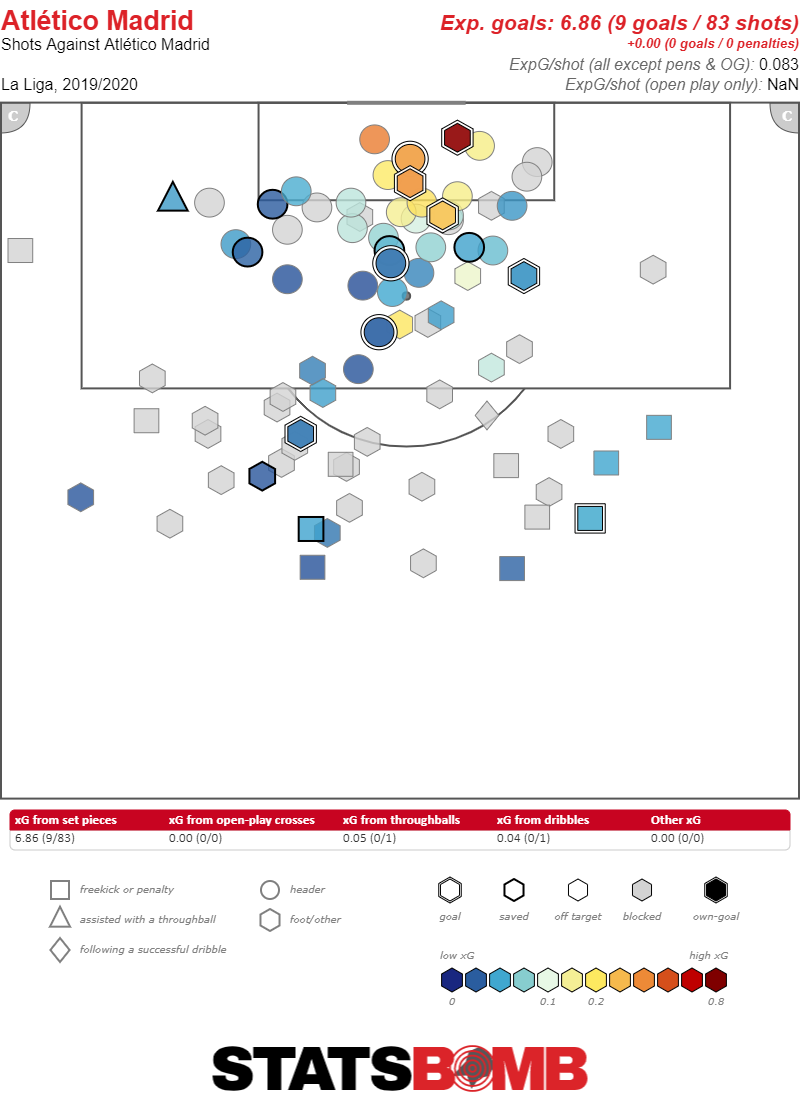 On the other hand, a whole heck of a lot of that bad luck seems to fall directly at the hands (and feet, and incredibly long arms) of superstar keeper Jan Oblak. Despite his formidable track record, Oblak is having a relatively poor season — he's allowed two more goals than an average keeper would given the shots on goal he’s faced.
On the other hand, a whole heck of a lot of that bad luck seems to fall directly at the hands (and feet, and incredibly long arms) of superstar keeper Jan Oblak. Despite his formidable track record, Oblak is having a relatively poor season — he's allowed two more goals than an average keeper would given the shots on goal he’s faced. 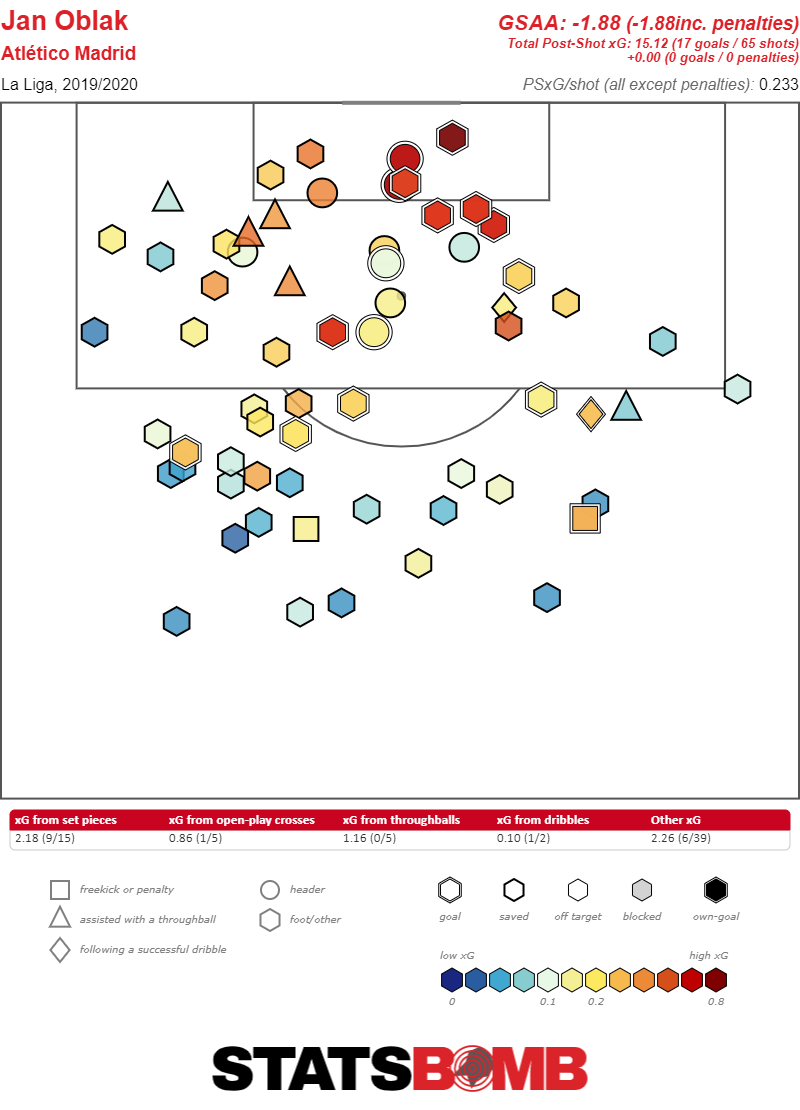 Break out the set pieces and something even more surprising jumps out. Oblak is his usual stellar self during open play, but he’s conceded a whopping 4.29 goals more from set pieces more than expected from an average keeper. How much of that is a true reflection of his poor play and how much is a knock-on effect from a team struggling to defend is up for debate. Either way, it’s an eye-popping number
Break out the set pieces and something even more surprising jumps out. Oblak is his usual stellar self during open play, but he’s conceded a whopping 4.29 goals more from set pieces more than expected from an average keeper. How much of that is a true reflection of his poor play and how much is a knock-on effect from a team struggling to defend is up for debate. Either way, it’s an eye-popping number 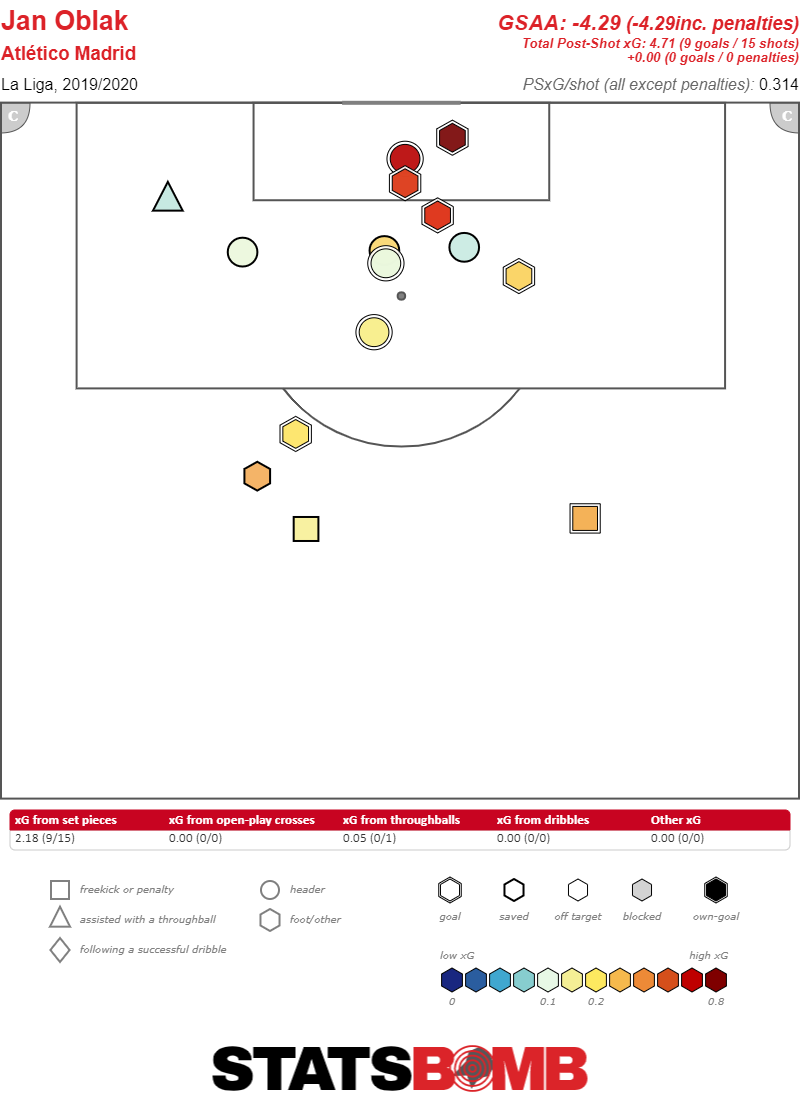 Ultimately a match with two strong defensive sides means this tie could well come down to set pieces. And, if so, Liverpool will likely have the edge.
Ultimately a match with two strong defensive sides means this tie could well come down to set pieces. And, if so, Liverpool will likely have the edge. 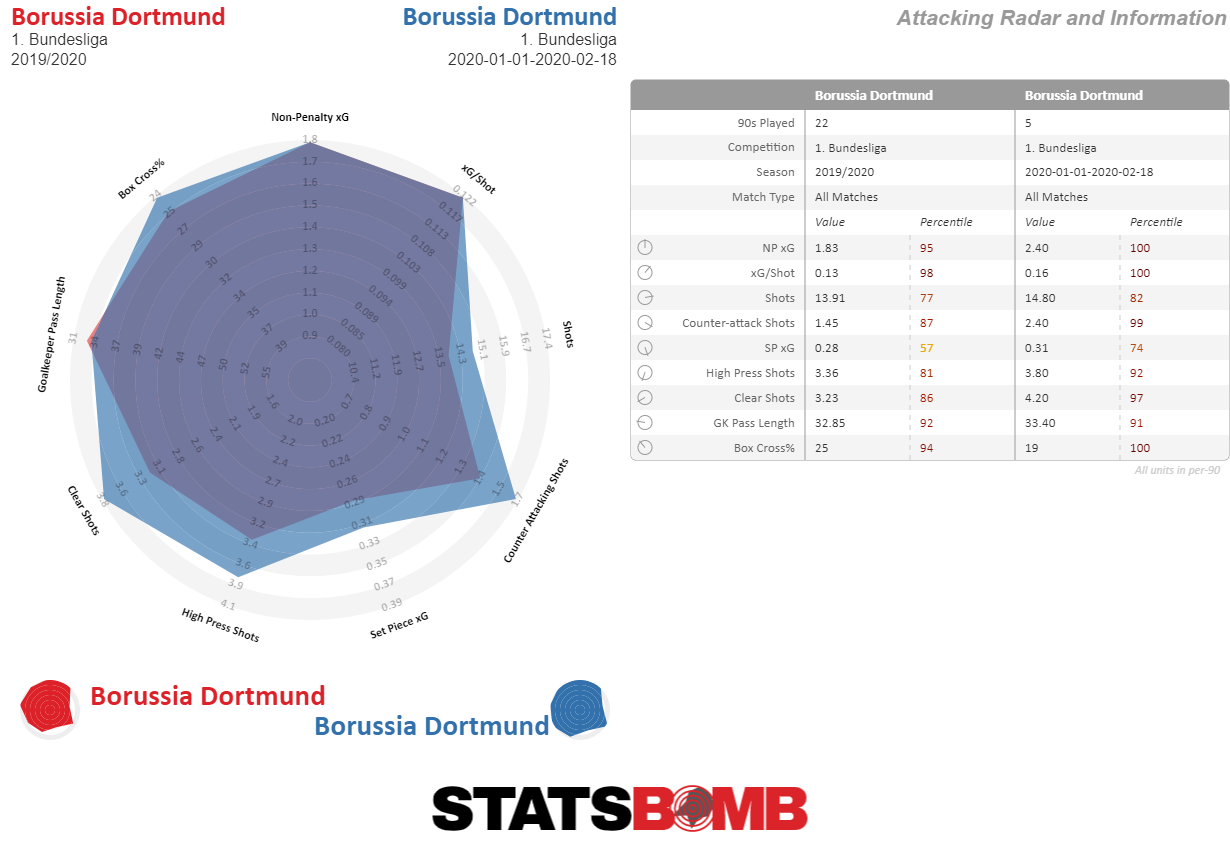 PSG, on the other hand, face the same problem season in and season out. They are simply so much better than other Ligue 1 teams that it is impossible to get a true impression of how they will fare against stronger competition. Dortmund are at least the second-best team PSG have played this season (depending on how you interpret Dortmund’s form now and Madrid’s form at the beginning of the year, arguably they’re the best). On the other hand, as always, PSG has Kylian Mbappé putting up these numbers,
PSG, on the other hand, face the same problem season in and season out. They are simply so much better than other Ligue 1 teams that it is impossible to get a true impression of how they will fare against stronger competition. Dortmund are at least the second-best team PSG have played this season (depending on how you interpret Dortmund’s form now and Madrid’s form at the beginning of the year, arguably they’re the best). On the other hand, as always, PSG has Kylian Mbappé putting up these numbers, 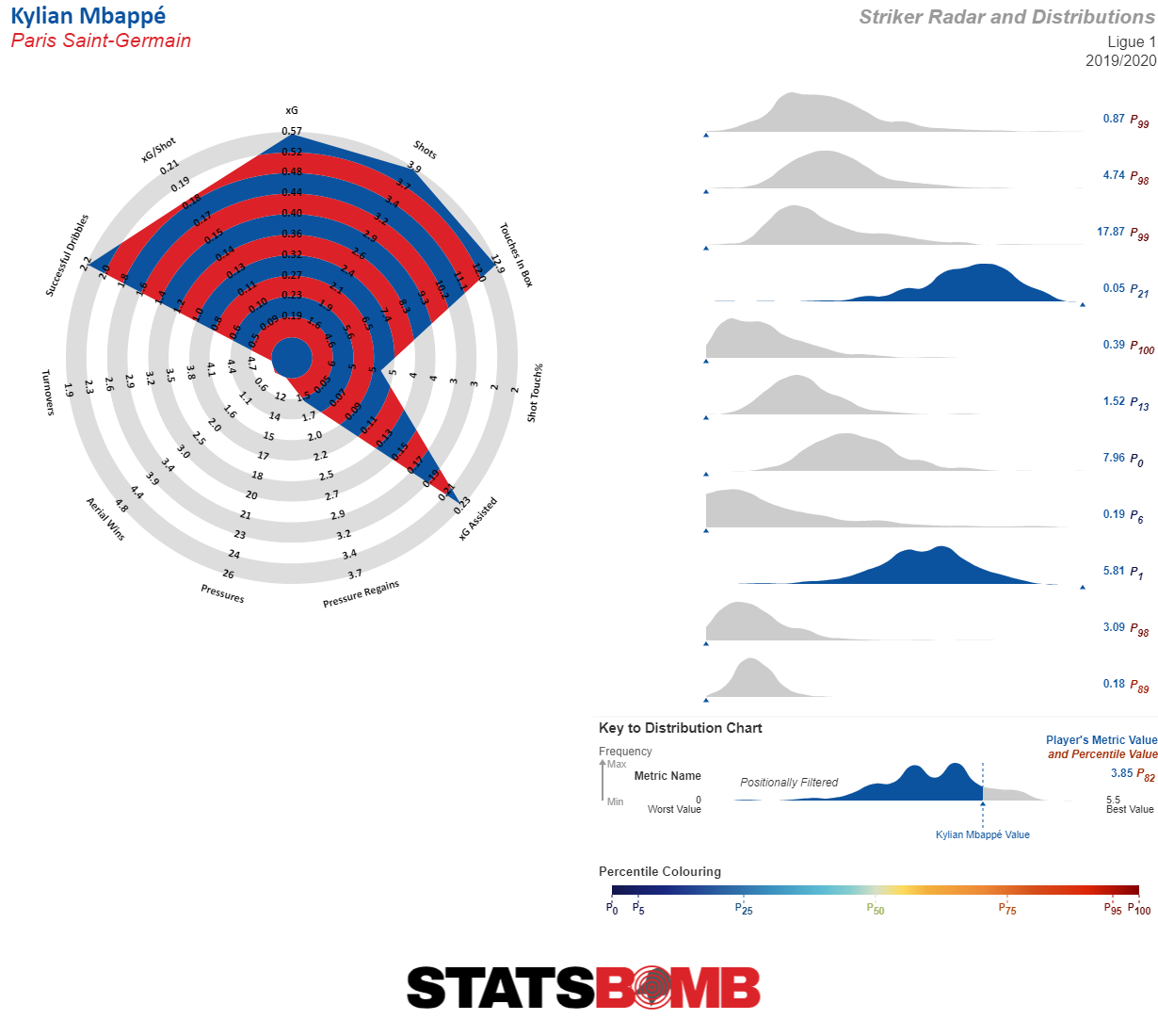 And Neymar putting up these numbers.
And Neymar putting up these numbers. 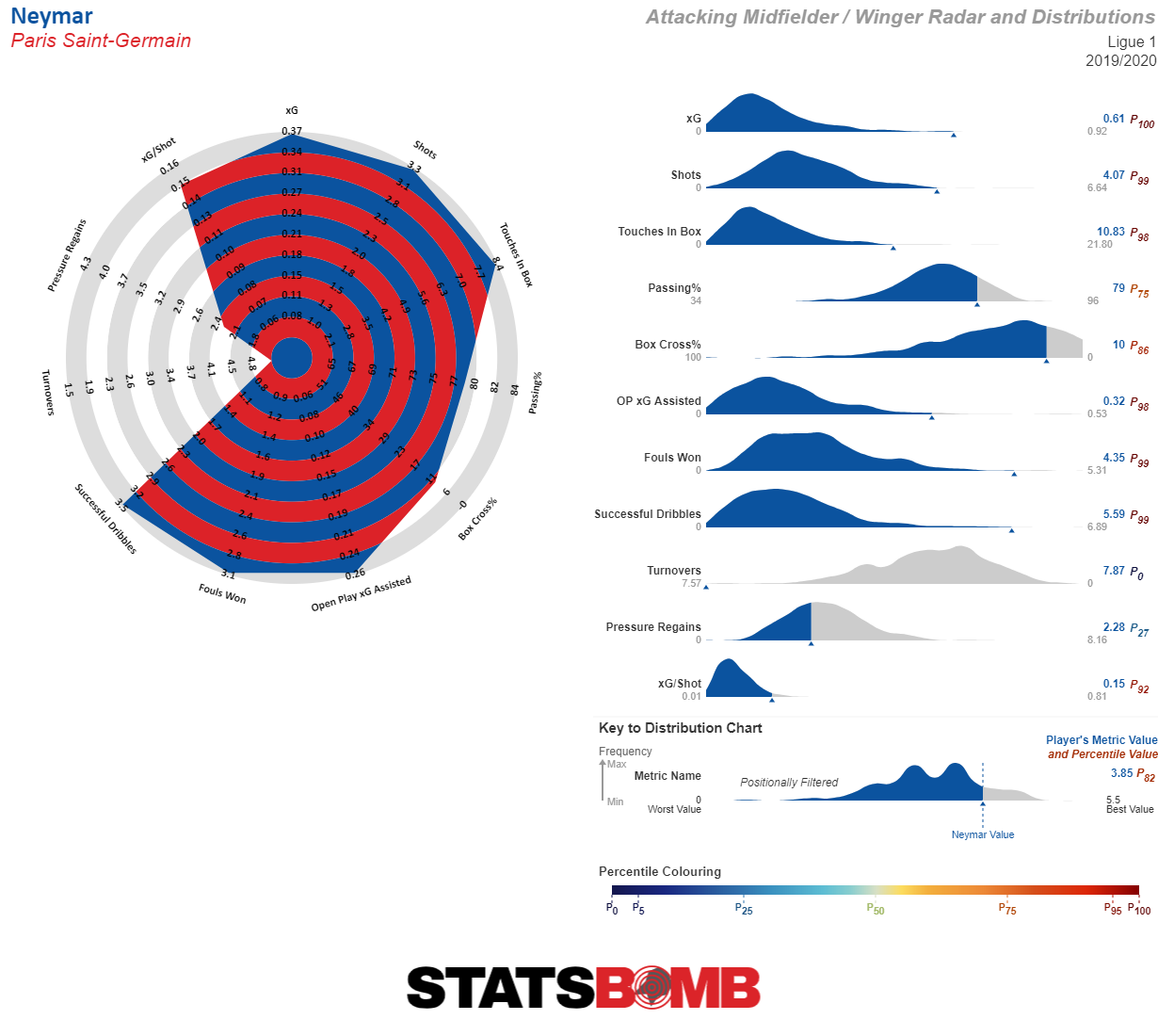 Thomas Tuchel runs a team that wants the ball, needs the ball and uses the ball in midfield to create great chances for the side’s superstars in the box. They aren’t obsessed with taking a lot of shots, but they are obsessed with taking the best ones.
Thomas Tuchel runs a team that wants the ball, needs the ball and uses the ball in midfield to create great chances for the side’s superstars in the box. They aren’t obsessed with taking a lot of shots, but they are obsessed with taking the best ones. 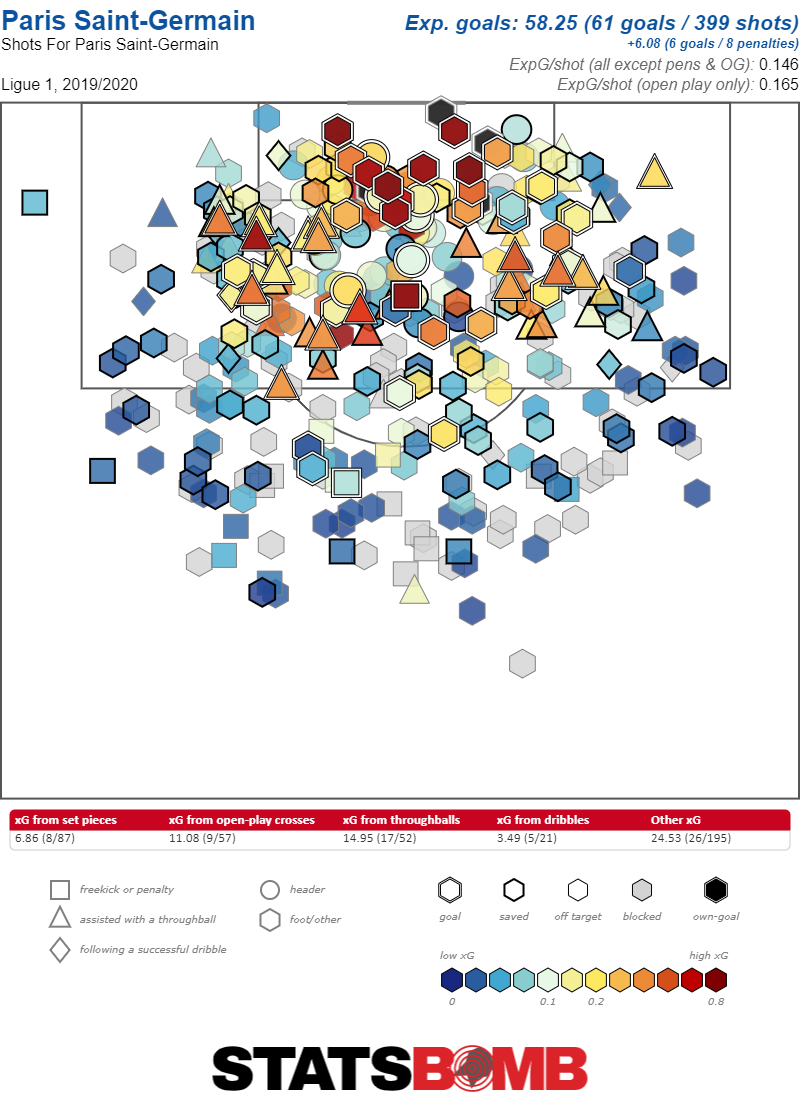 If things go wrong it will be because Dortmund manage to thwart that plan by counterattacking into the space that PSG’s extensive and highly aggressive possession leaves available. If PSG’s domestic season is any indication they will be just fine. This attacking radar simply outweighs any concerns.
If things go wrong it will be because Dortmund manage to thwart that plan by counterattacking into the space that PSG’s extensive and highly aggressive possession leaves available. If PSG’s domestic season is any indication they will be just fine. This attacking radar simply outweighs any concerns. 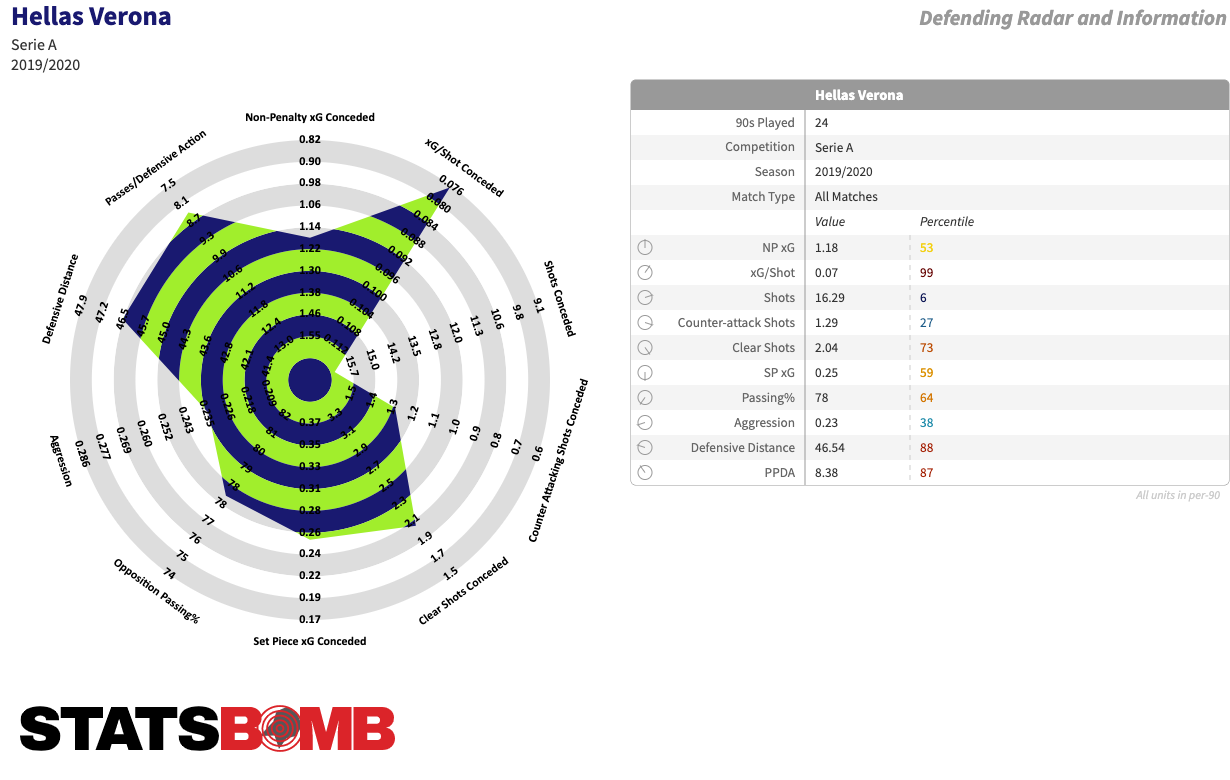
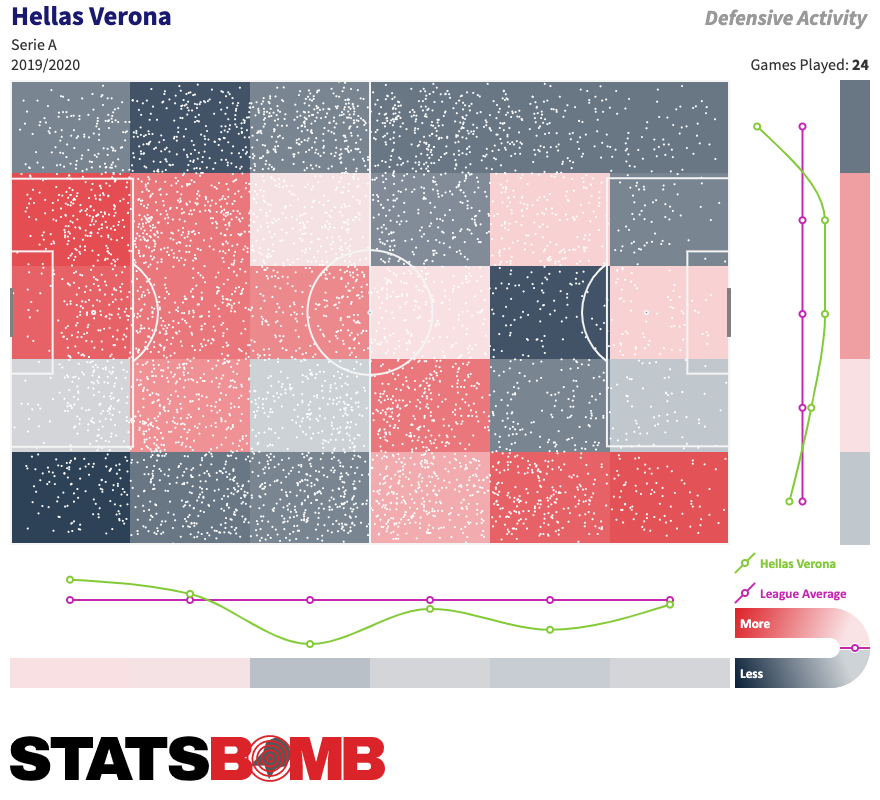
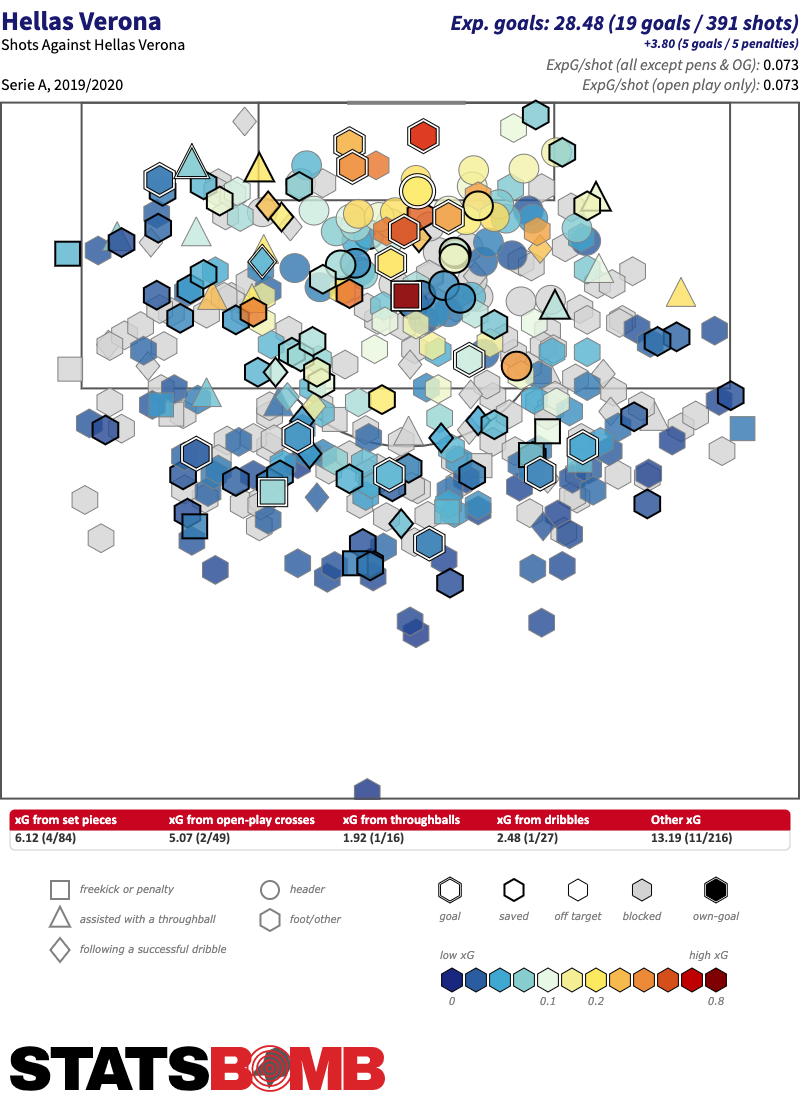
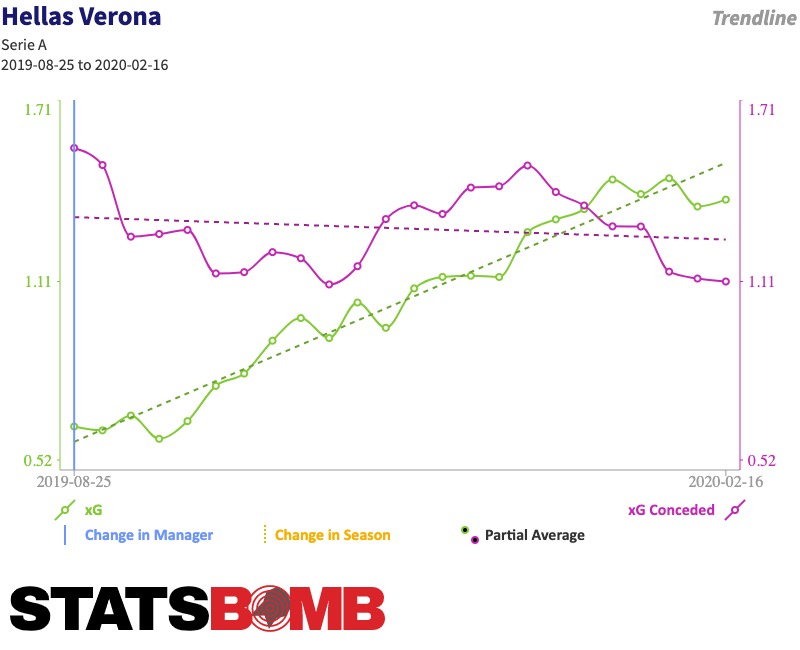
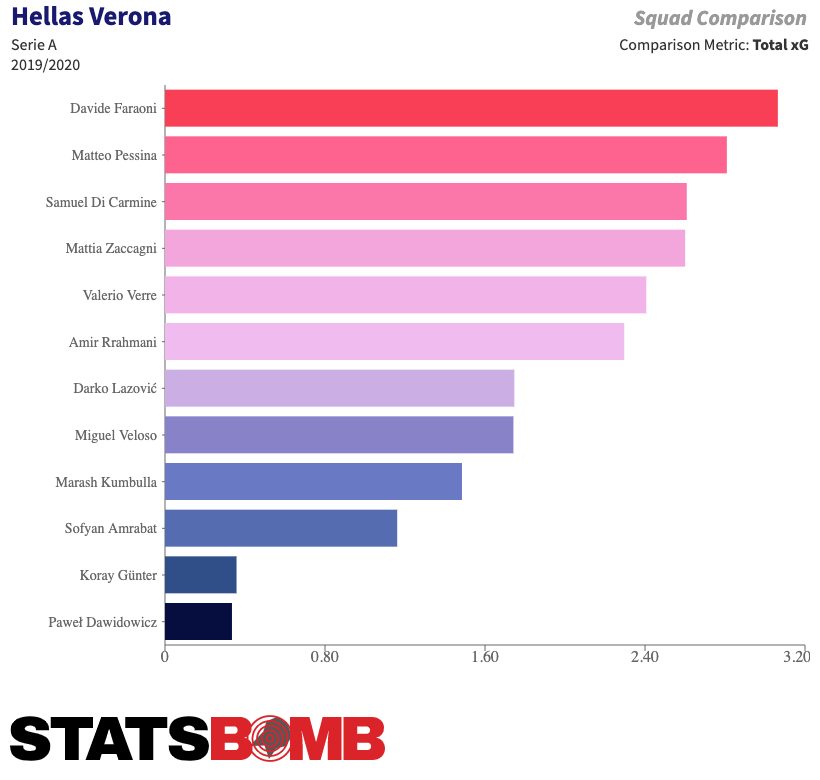
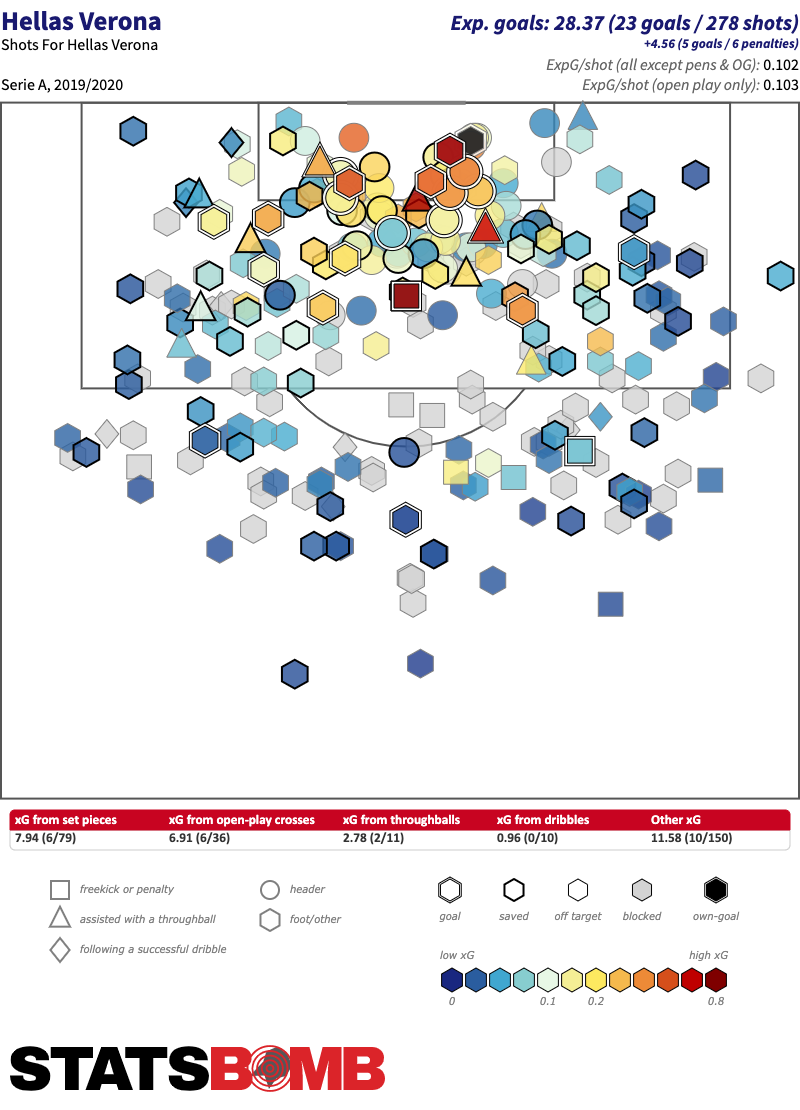
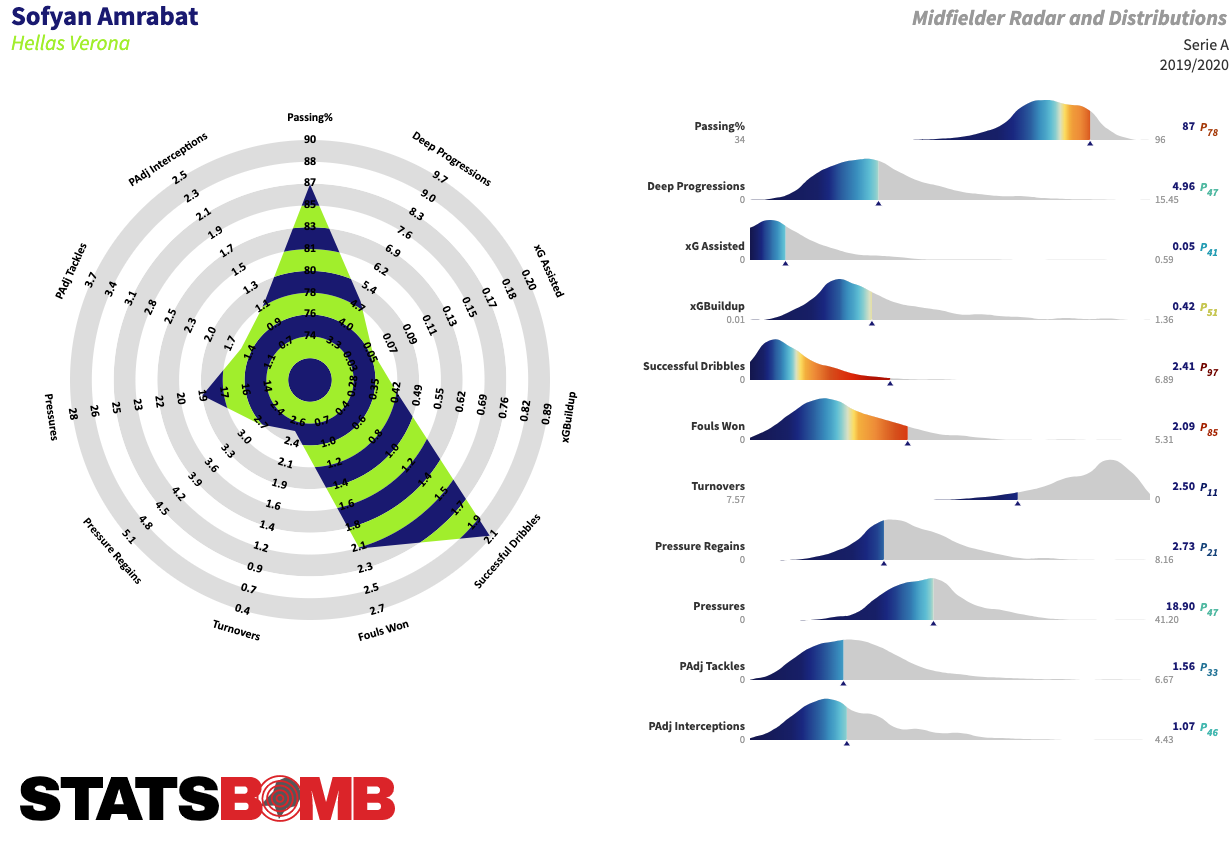
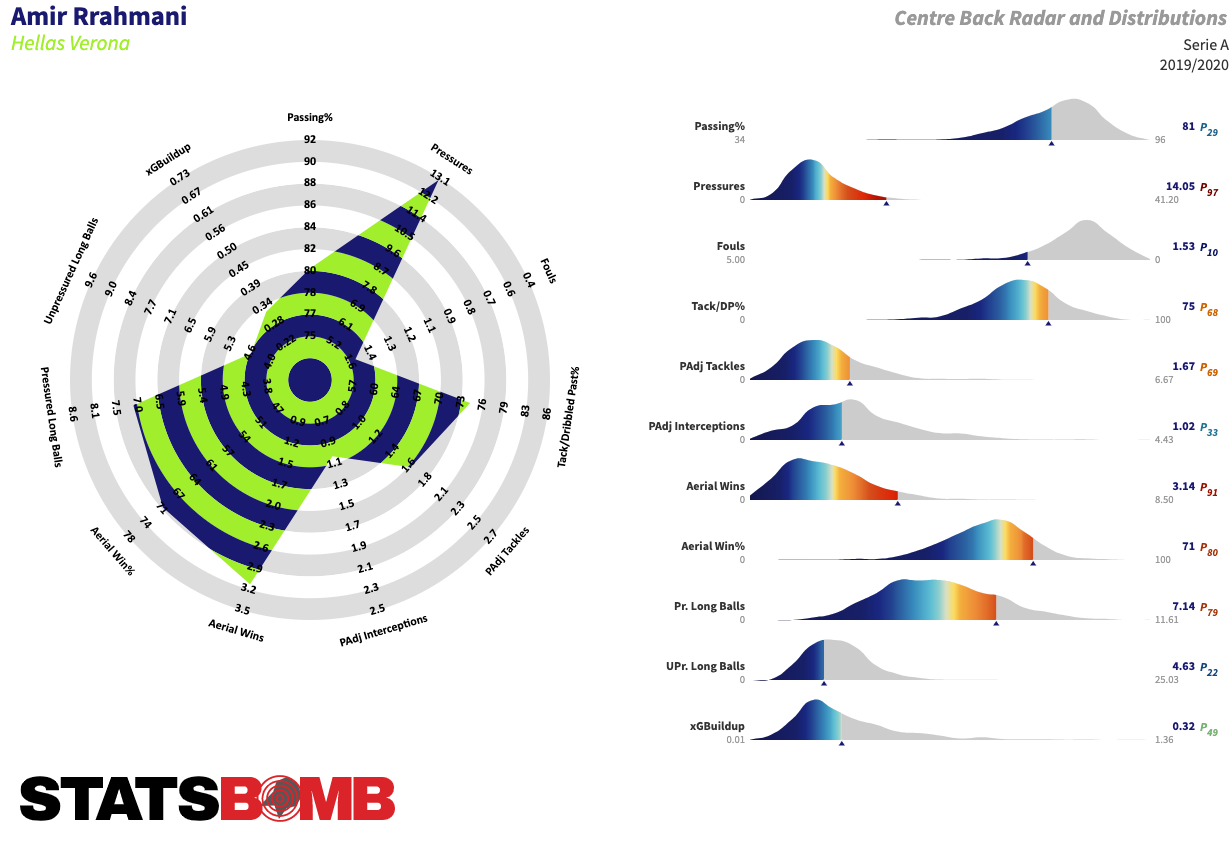
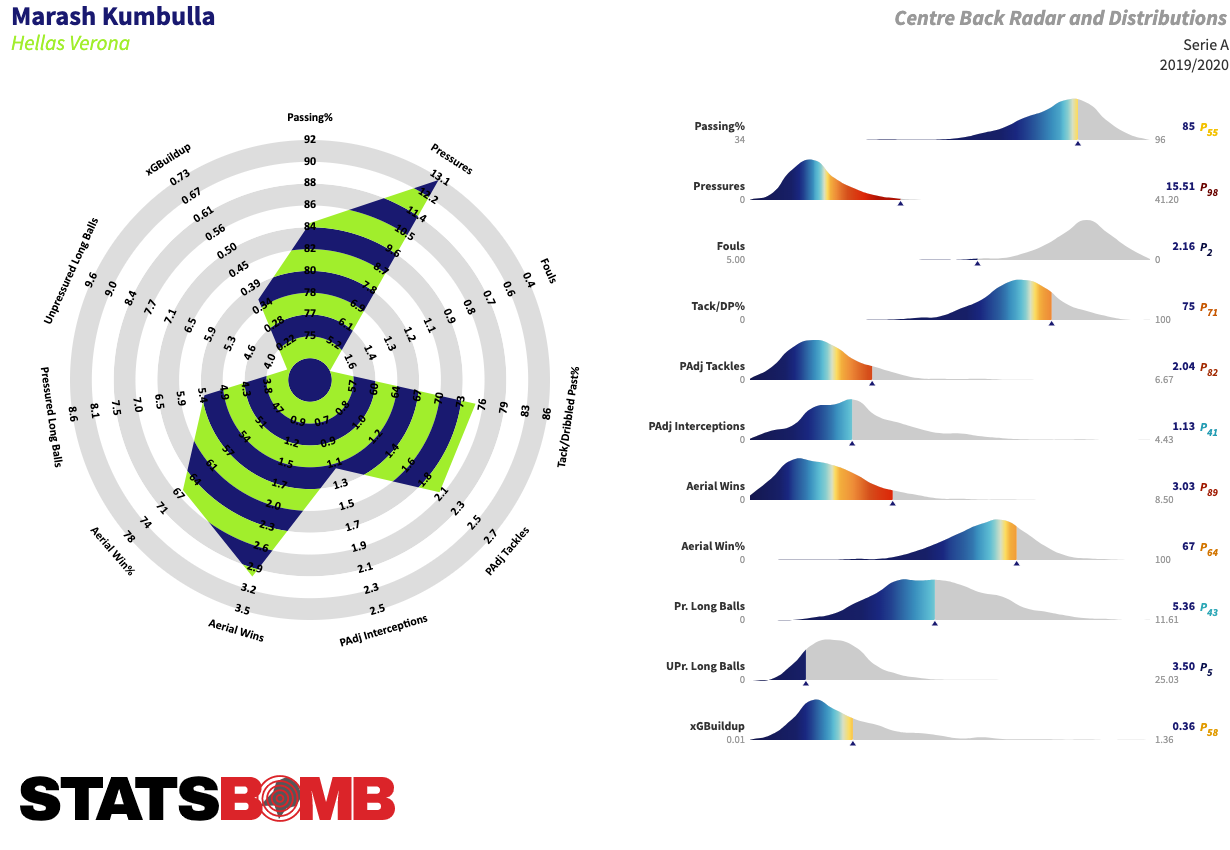
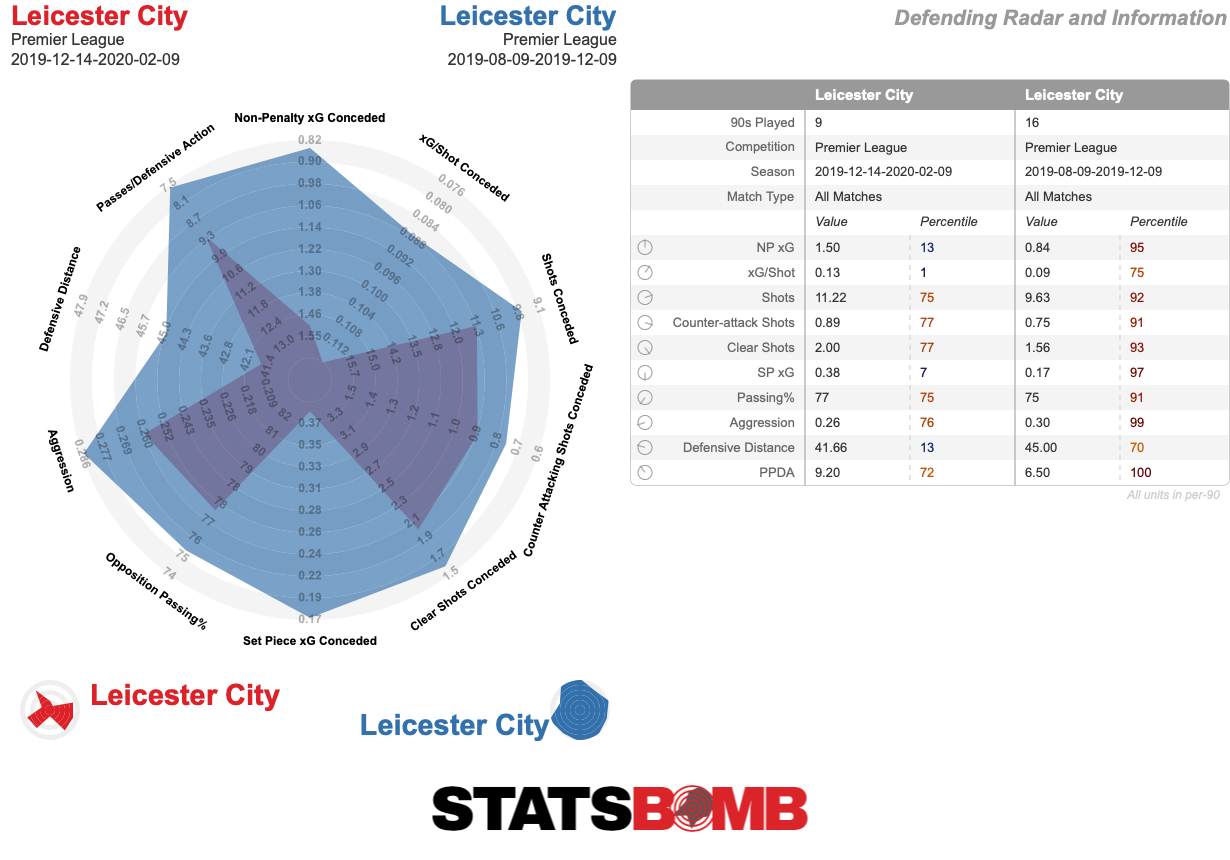
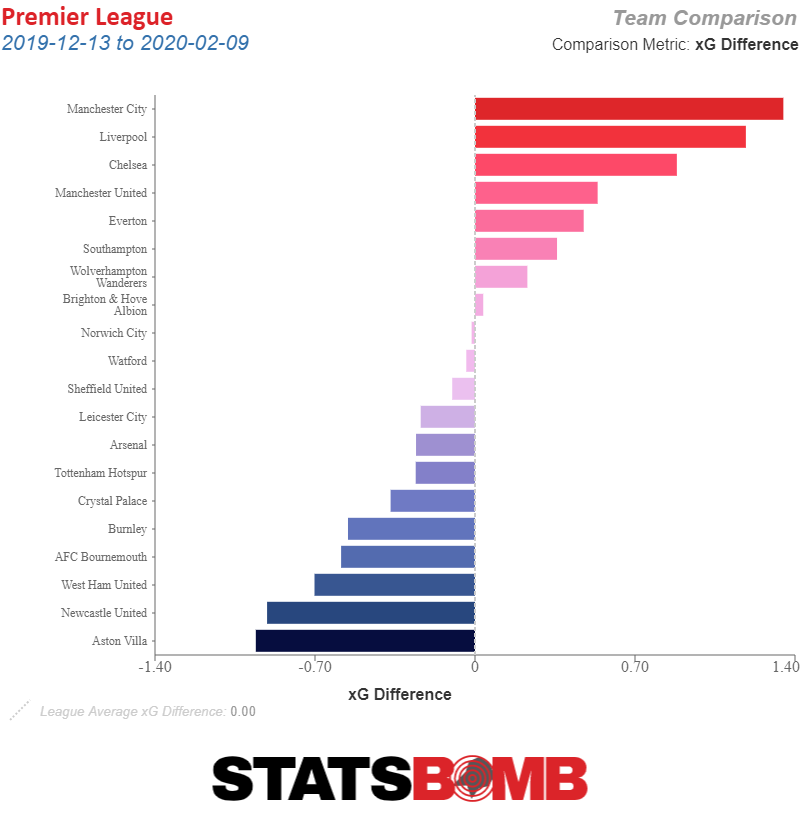 Any analysis of why Leicester are wobbling must begin with Jamie Vardy. The striker had a hot streak in autumn, scoring 13 goals from an xG of 8.48 (penalties excluded). That kind of efficiency is hard to maintain for anyone not named Lionel Messi (and usually for people named Lionel Messi, too), and Vardy has since lost his sharpness, scoring once from an xG of 1.50. Just in case anyone doubted whether his fortunes really had changed, Vardy missed a penalty at Burnley just before the Clarets struck the winner. And Vardy is not only missing chances, he's getting fewer of them.
Any analysis of why Leicester are wobbling must begin with Jamie Vardy. The striker had a hot streak in autumn, scoring 13 goals from an xG of 8.48 (penalties excluded). That kind of efficiency is hard to maintain for anyone not named Lionel Messi (and usually for people named Lionel Messi, too), and Vardy has since lost his sharpness, scoring once from an xG of 1.50. Just in case anyone doubted whether his fortunes really had changed, Vardy missed a penalty at Burnley just before the Clarets struck the winner. And Vardy is not only missing chances, he's getting fewer of them. 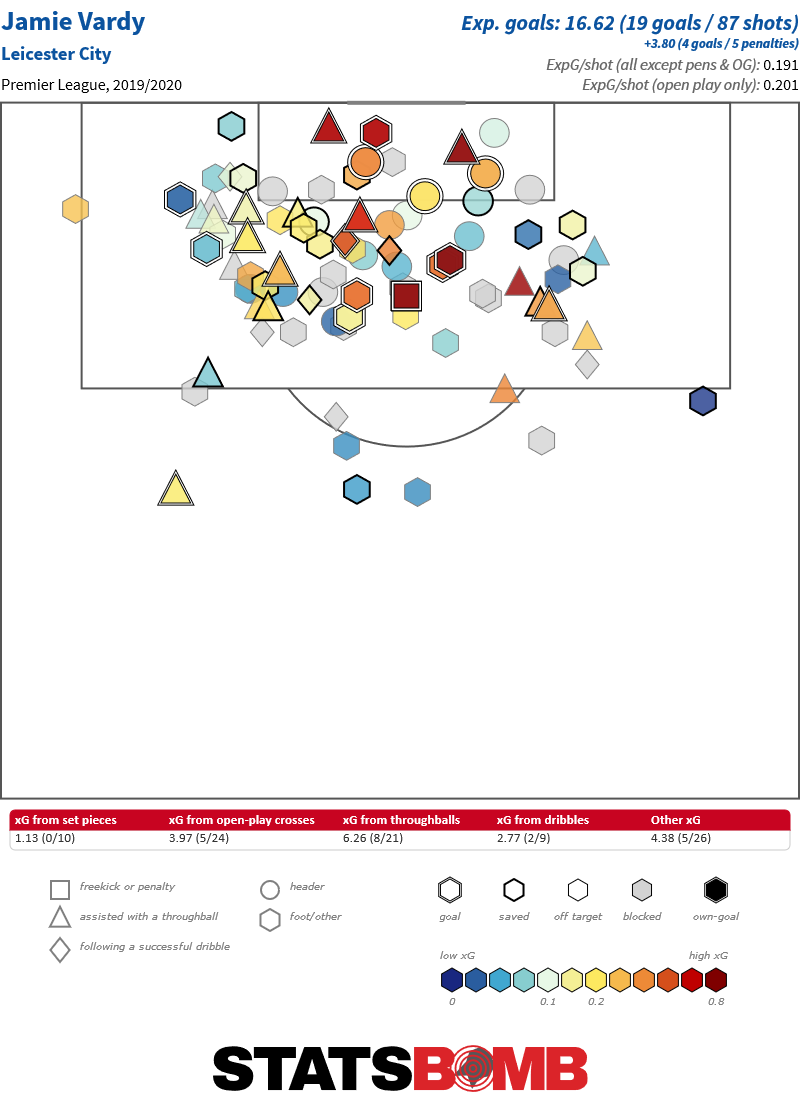 The same goes for Leicester as a team. While they produced few big chances in their first games, they did face strong teams during that spell and still managed to exceed their metrics. When the schedule got easier, they took off. Since then two things have happened. First, they've stopped playing way ahead of their xG.
The same goes for Leicester as a team. While they produced few big chances in their first games, they did face strong teams during that spell and still managed to exceed their metrics. When the schedule got easier, they took off. Since then two things have happened. First, they've stopped playing way ahead of their xG. 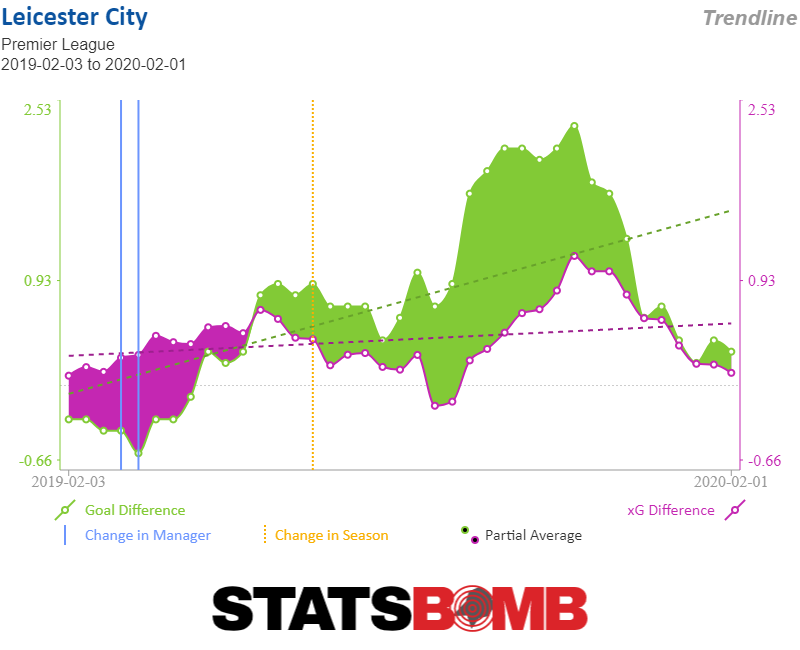 Second, the underlying metrics have themselves nosedived.
Second, the underlying metrics have themselves nosedived. 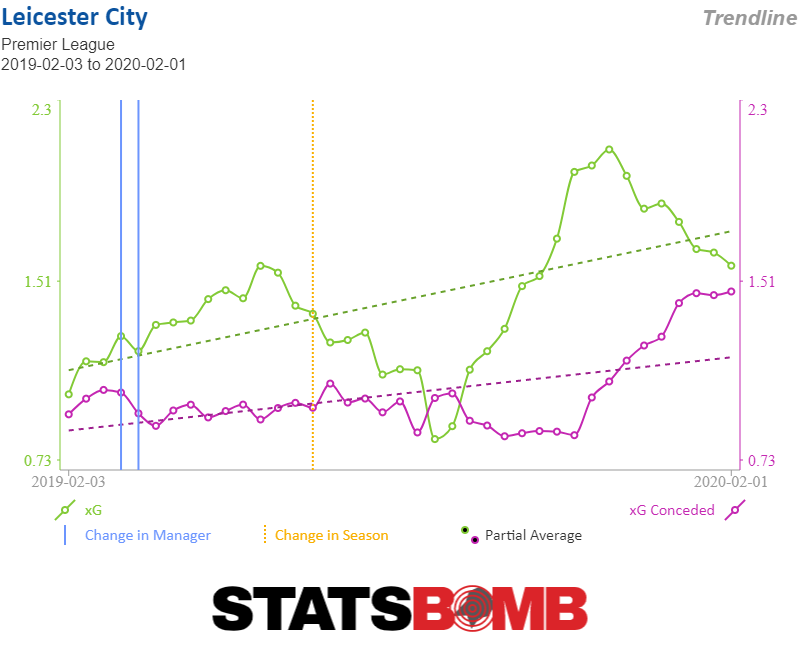 What happened? Given what we know about Vardy, it feels natural to begin this exploration by examining the attack. Brendan Rodgers made only minor changes to his set-up, benching the odd out-of-form player and alternating between a 4-3-3 and 4-4-2 diamond. They've had no major injuries; while Vardy has missed two games, Leicester have won them both. Neither personnel nor tactics offer any clear answer as to why the attack has worsened in almost every aspect.
What happened? Given what we know about Vardy, it feels natural to begin this exploration by examining the attack. Brendan Rodgers made only minor changes to his set-up, benching the odd out-of-form player and alternating between a 4-3-3 and 4-4-2 diamond. They've had no major injuries; while Vardy has missed two games, Leicester have won them both. Neither personnel nor tactics offer any clear answer as to why the attack has worsened in almost every aspect. 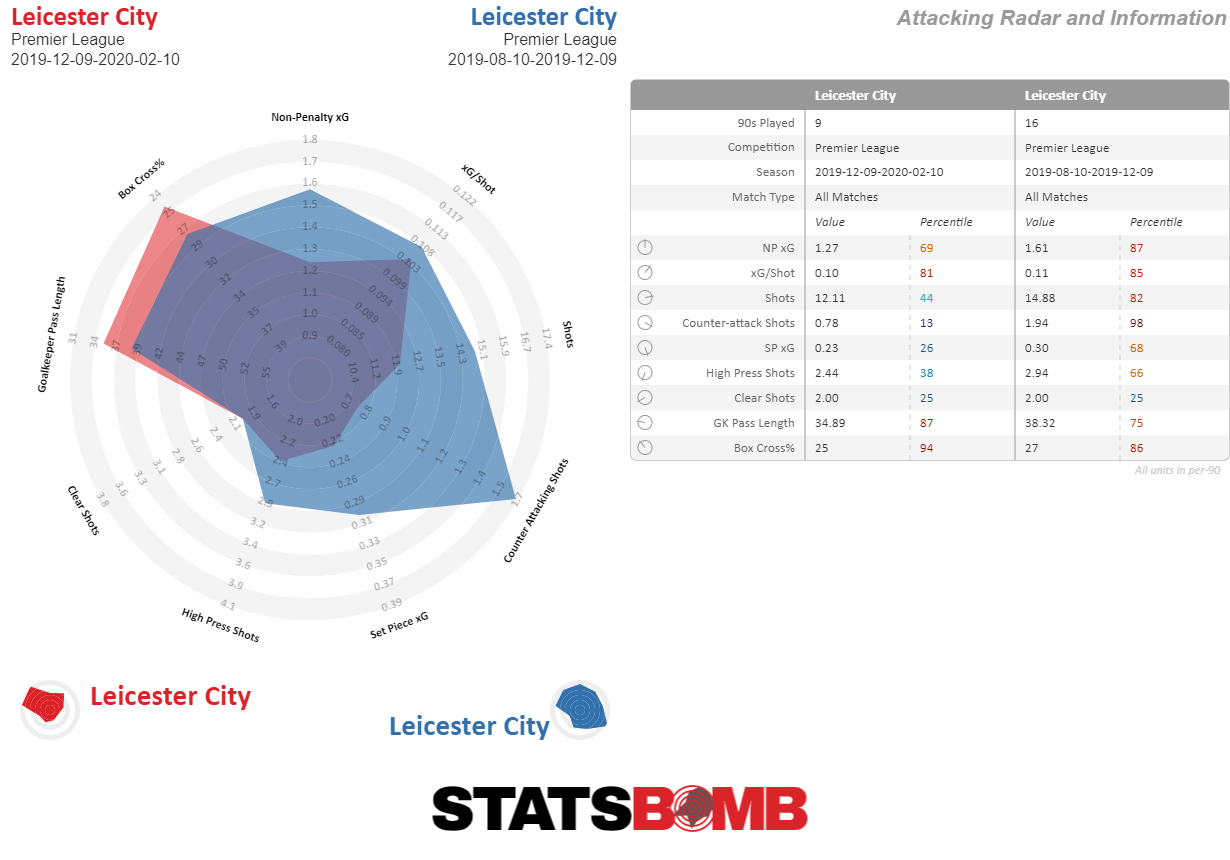 The standout metric here is the shots after counter-attacks. You would think teams would've have wised up to Vardy’s runs in behind the defence. Yet in a spell where Leicester spends less time in the lead, it would make sense if opponents defend deeper to protect their leads. In any case, the attack is not been the biggest problem for Leicester. Before the Norwich draw they had conceded two goals in seven league games. They've now shipped 16 goals in 9 games. And as for the defensive metrics, well…
The standout metric here is the shots after counter-attacks. You would think teams would've have wised up to Vardy’s runs in behind the defence. Yet in a spell where Leicester spends less time in the lead, it would make sense if opponents defend deeper to protect their leads. In any case, the attack is not been the biggest problem for Leicester. Before the Norwich draw they had conceded two goals in seven league games. They've now shipped 16 goals in 9 games. And as for the defensive metrics, well… 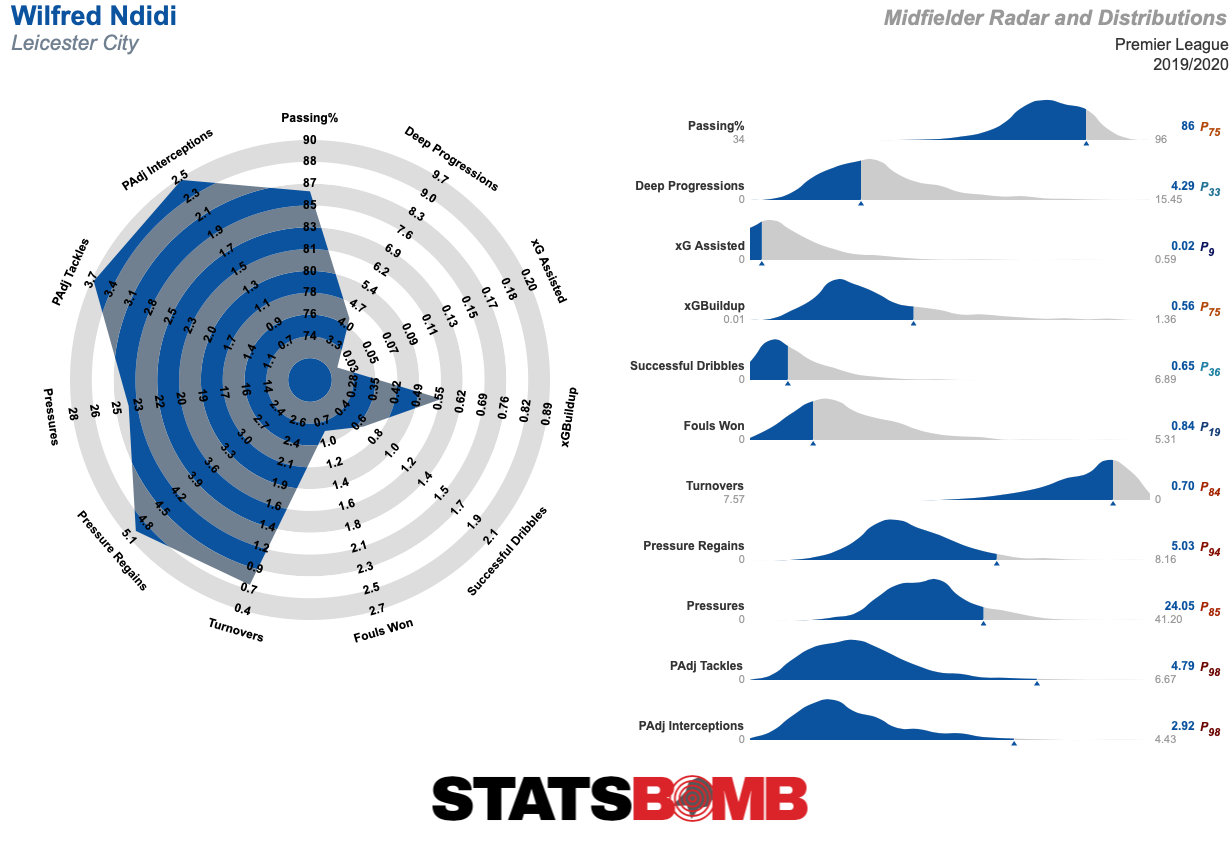 Still, a collective decline of this scale cannot be down to one player. Going back to the radar of horror, two metrics have declined more than others. One is set-piece xG conceded, which has jumped from 0.17 to 0.38 per game. Leicester have conceded four set-piece goals in their last nine games, based on an xG of 3.64 and 27 shots. Not good. The other metric is xG per shot conceded, which has increased from 0.09 to 0.13. If we look at the shots Leicester allowed from close range during their golden autumn, hardly any took place inside the six-yard box. Such was their aerial dominance and ability to stop crosses that they did not have to block a single shot inside this area.
Still, a collective decline of this scale cannot be down to one player. Going back to the radar of horror, two metrics have declined more than others. One is set-piece xG conceded, which has jumped from 0.17 to 0.38 per game. Leicester have conceded four set-piece goals in their last nine games, based on an xG of 3.64 and 27 shots. Not good. The other metric is xG per shot conceded, which has increased from 0.09 to 0.13. If we look at the shots Leicester allowed from close range during their golden autumn, hardly any took place inside the six-yard box. Such was their aerial dominance and ability to stop crosses that they did not have to block a single shot inside this area. 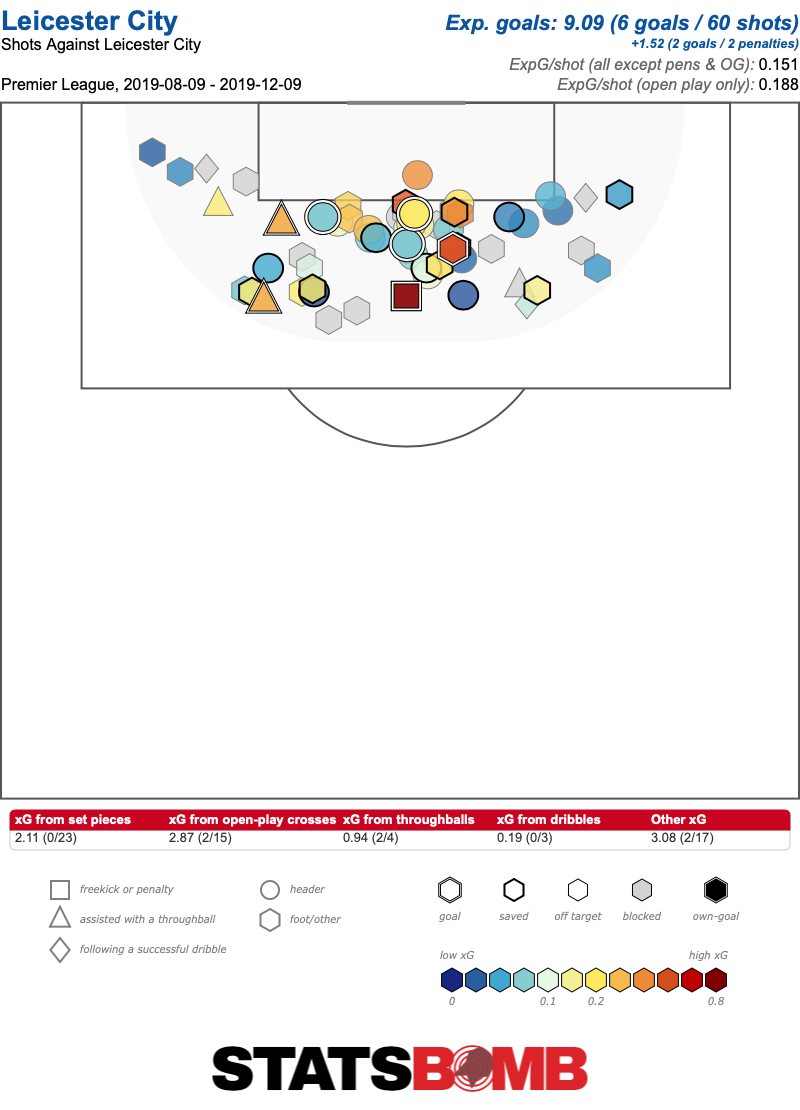 Since then, however, Leicester have given up a slew of shots from within six yards.
Since then, however, Leicester have given up a slew of shots from within six yards. 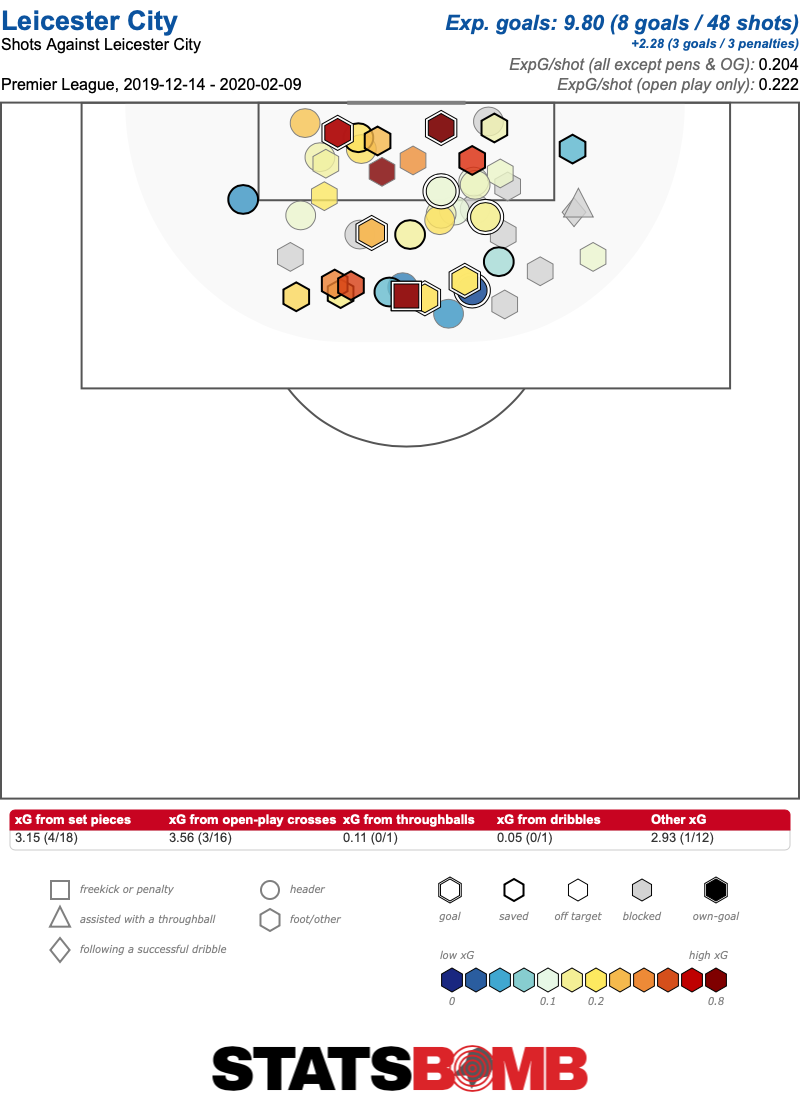 Time will tell whether Leicester will halt this wobbly spell. In any case, it looks unlikely to derail their season given they're 10 points clear of fifth place. After upcoming games against Wolves and City, they have four matches they're expected to win. None of their top-four rivals are showing signs of putting together a decent run, and should one of them suddenly get it together, Chelsea would surely be the first team to get caught. Rodgers will surely be thankful that, in this particular season, stable form is not the norm but the exception.
Time will tell whether Leicester will halt this wobbly spell. In any case, it looks unlikely to derail their season given they're 10 points clear of fifth place. After upcoming games against Wolves and City, they have four matches they're expected to win. None of their top-four rivals are showing signs of putting together a decent run, and should one of them suddenly get it together, Chelsea would surely be the first team to get caught. Rodgers will surely be thankful that, in this particular season, stable form is not the norm but the exception.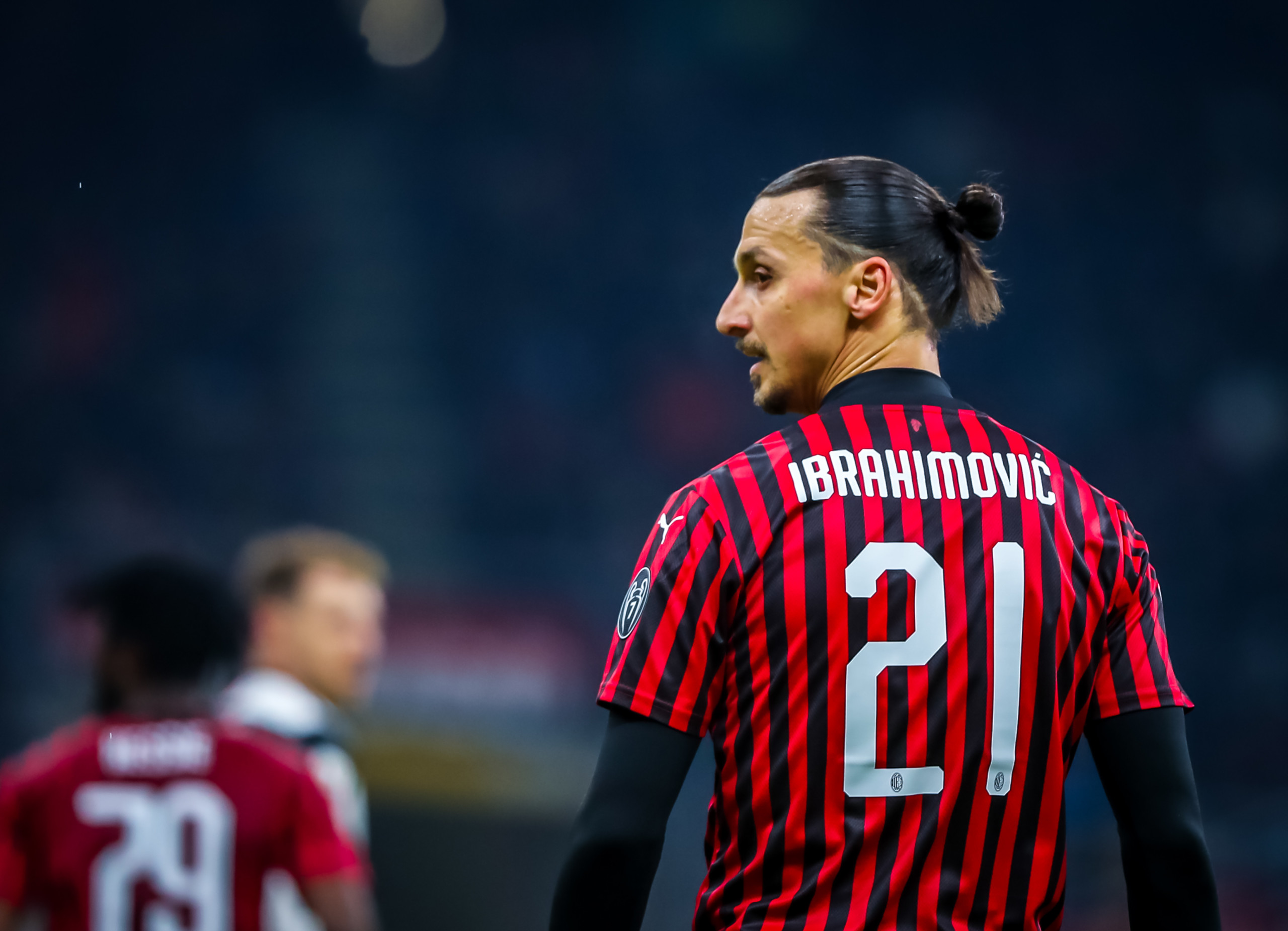
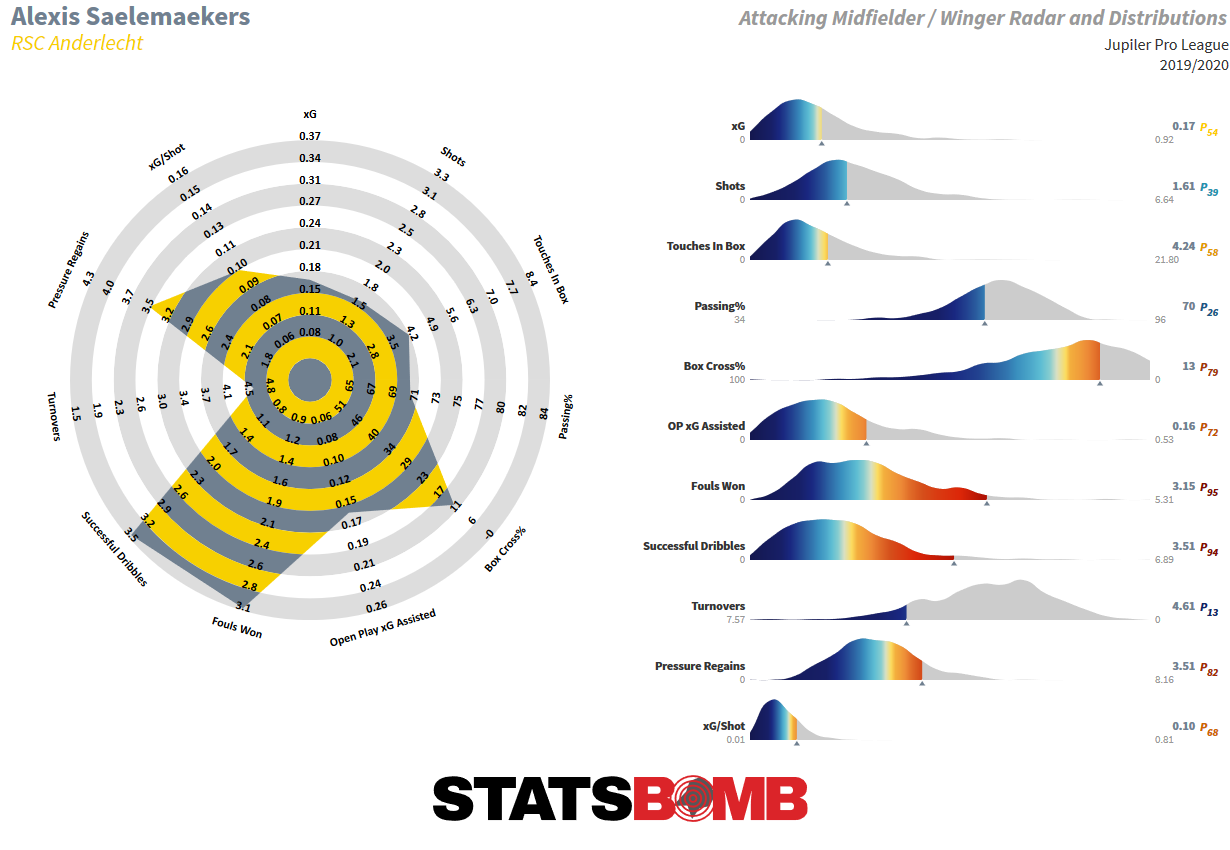
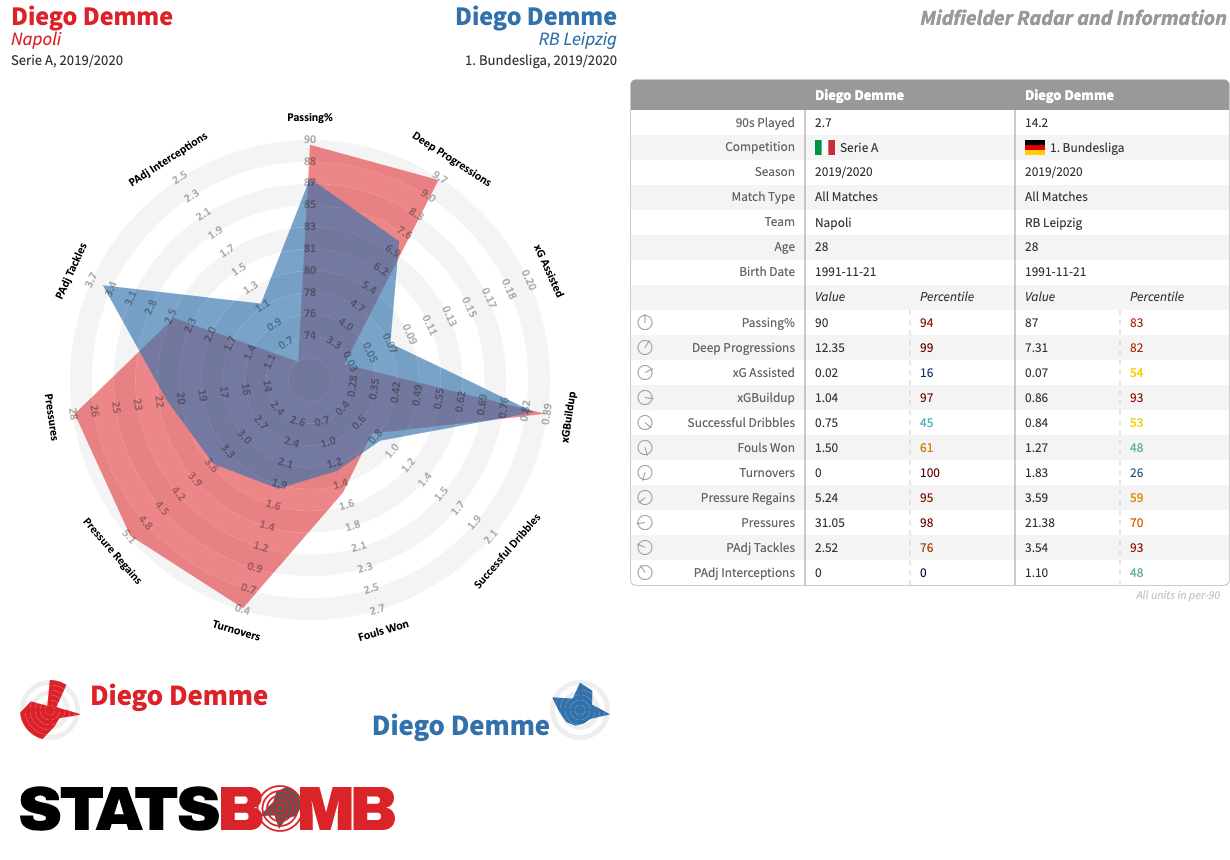
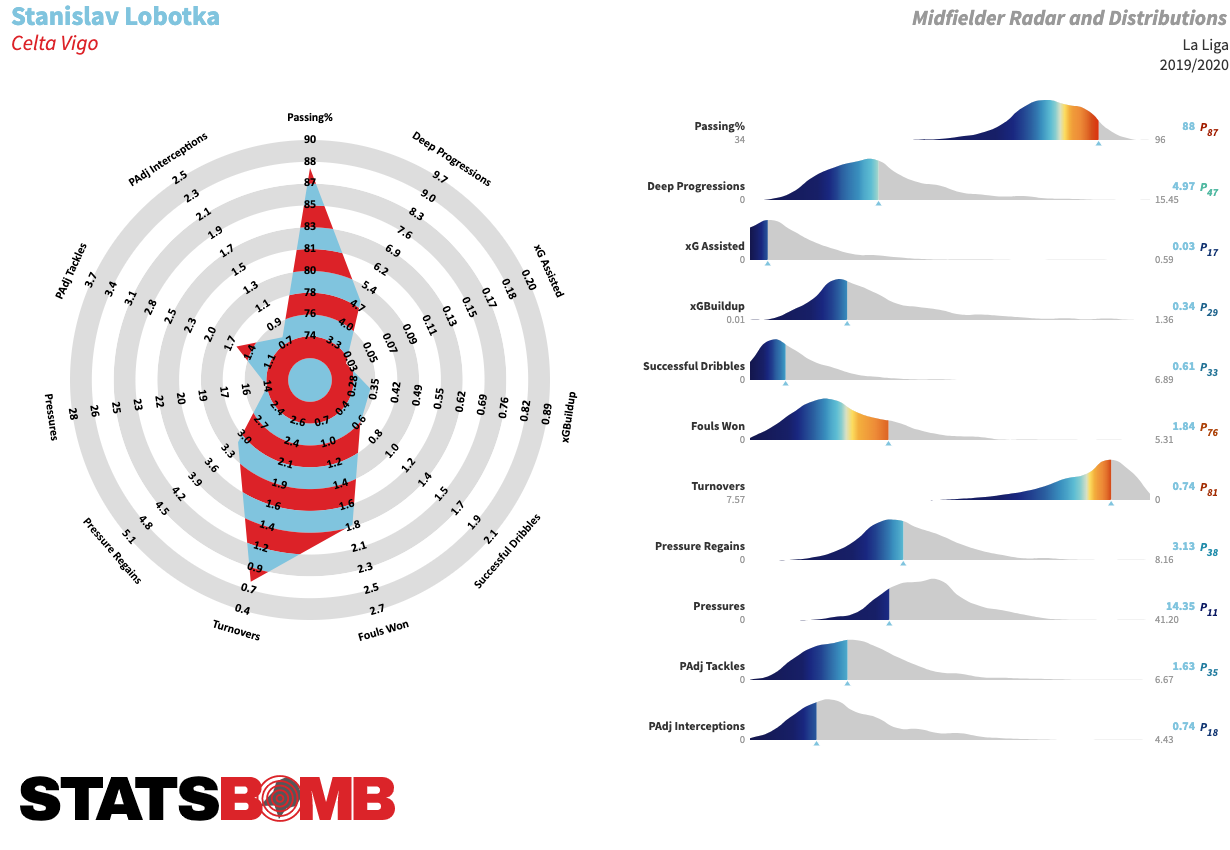
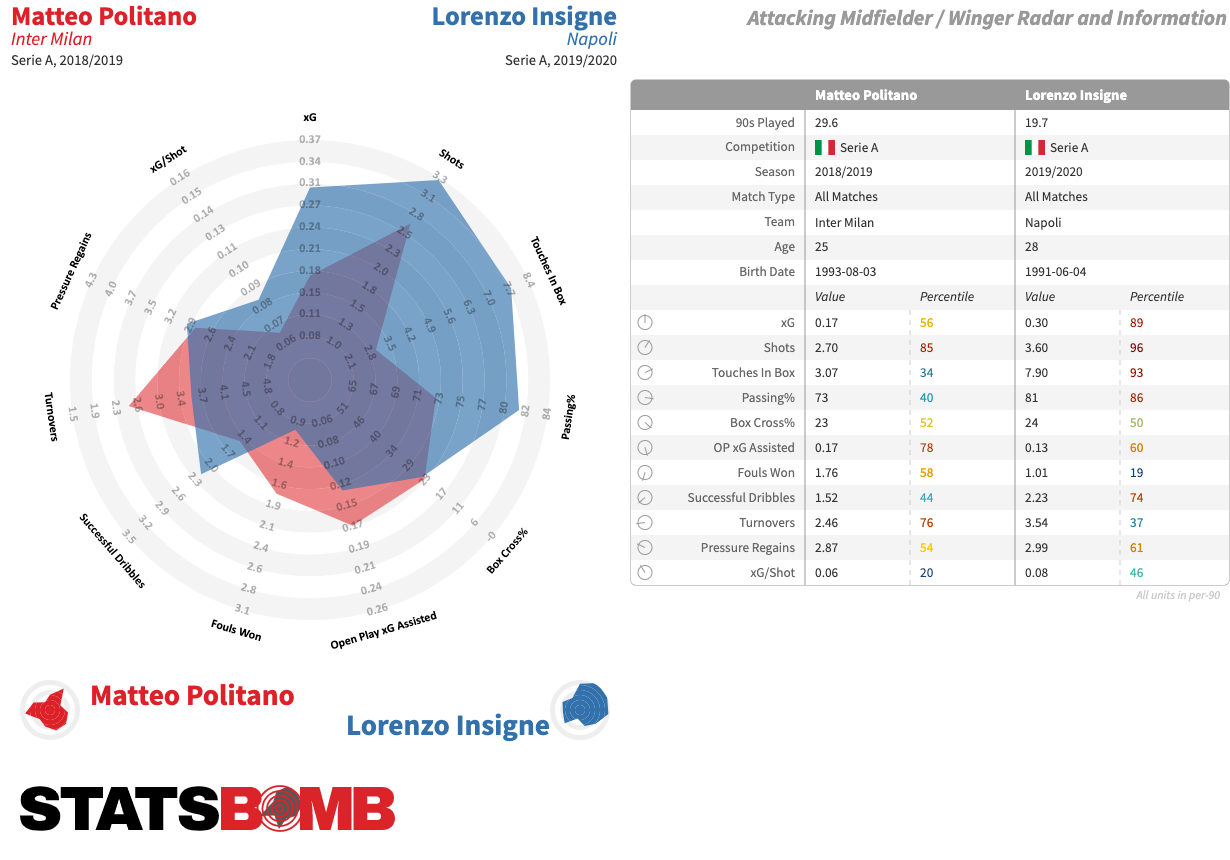
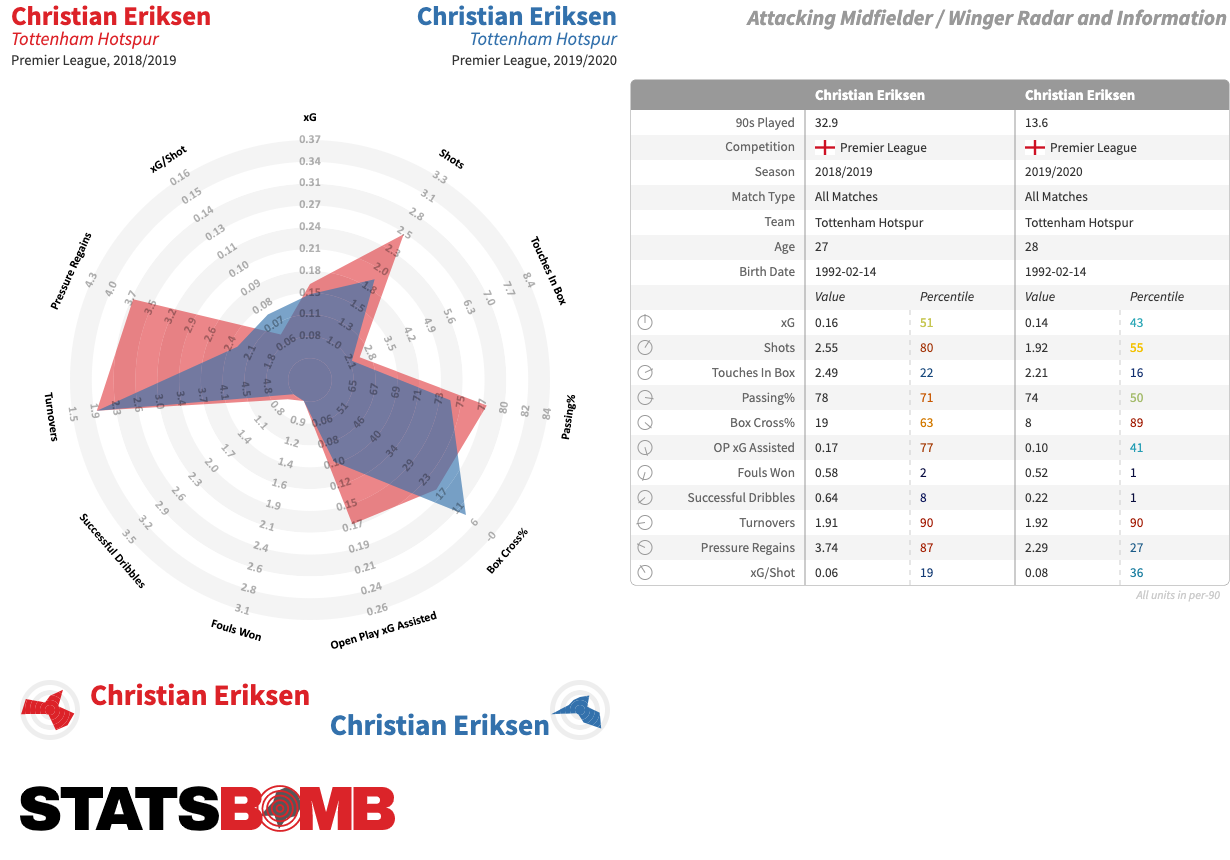
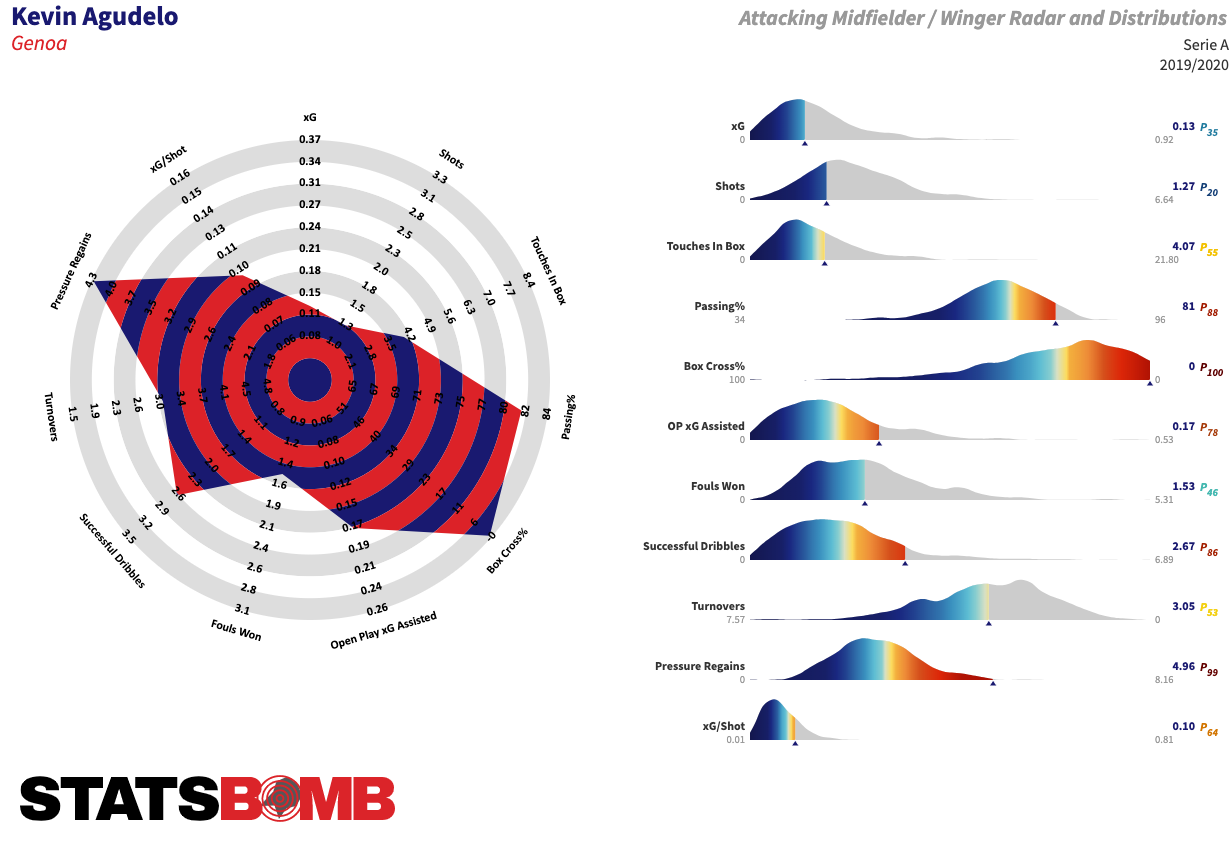
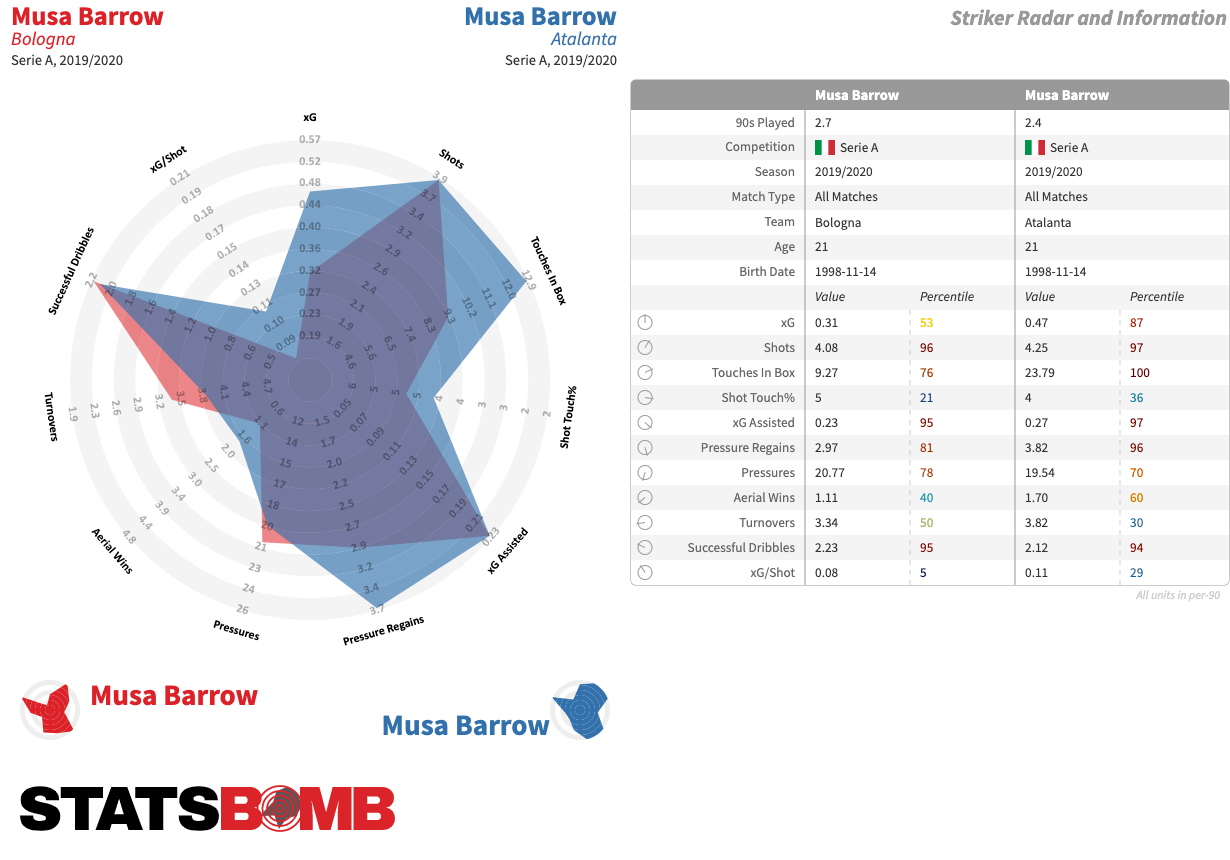
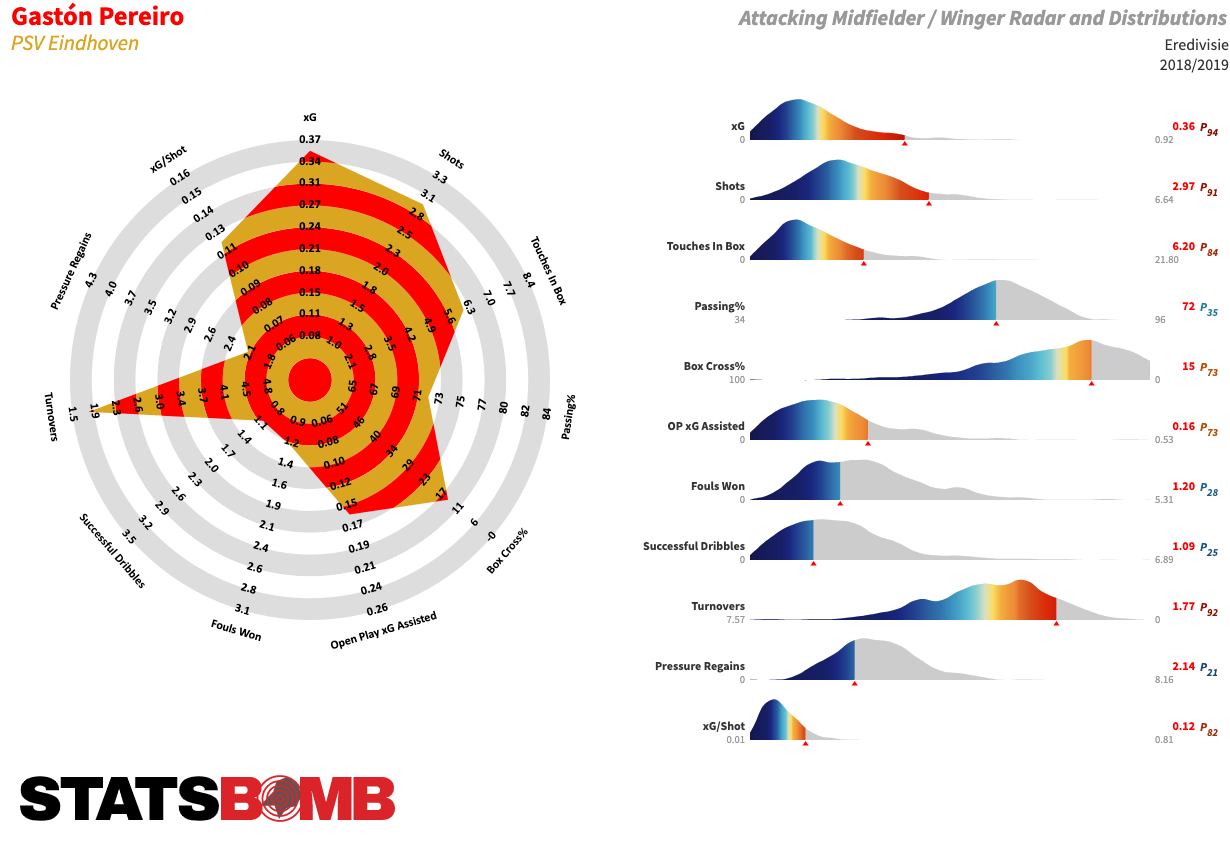
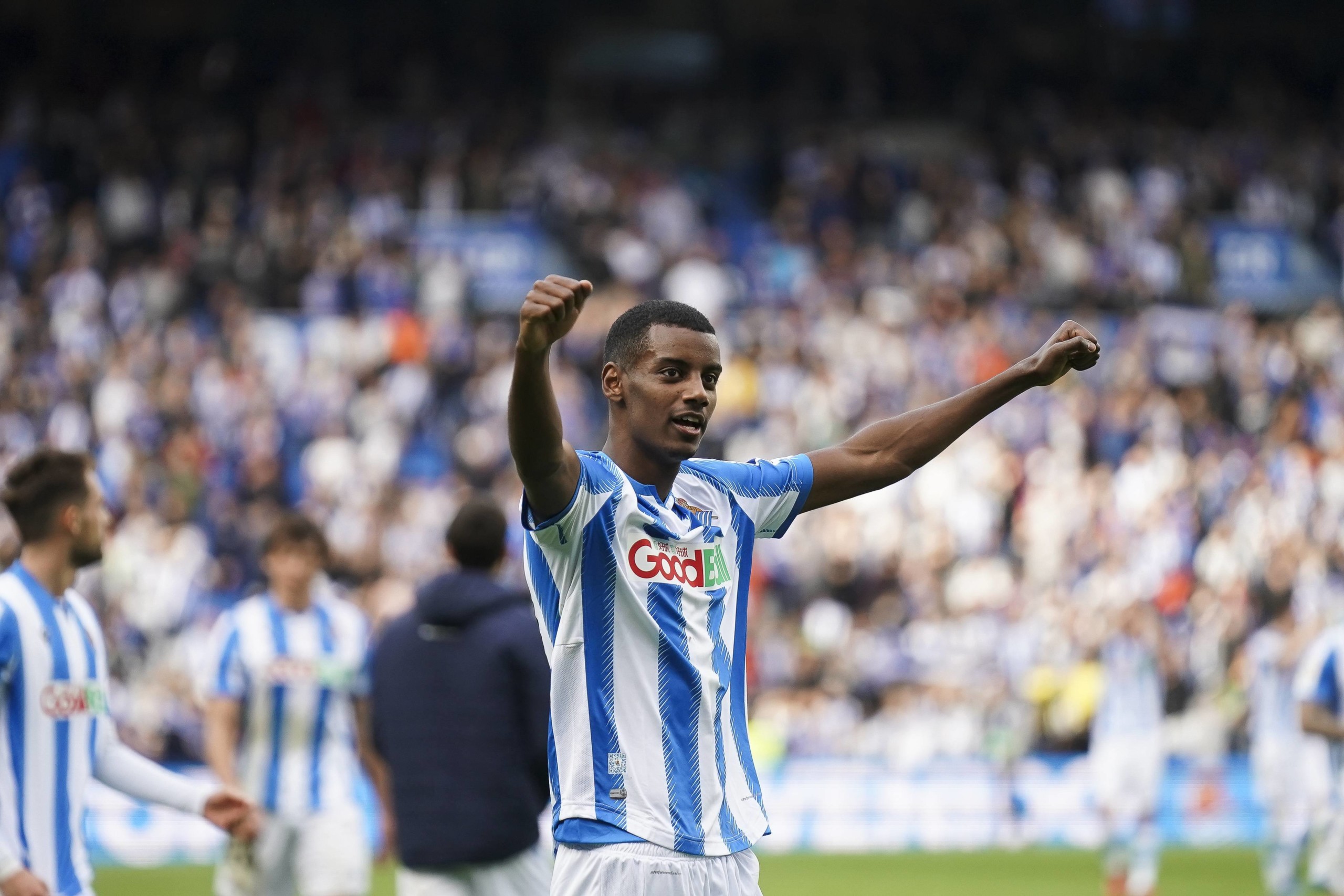
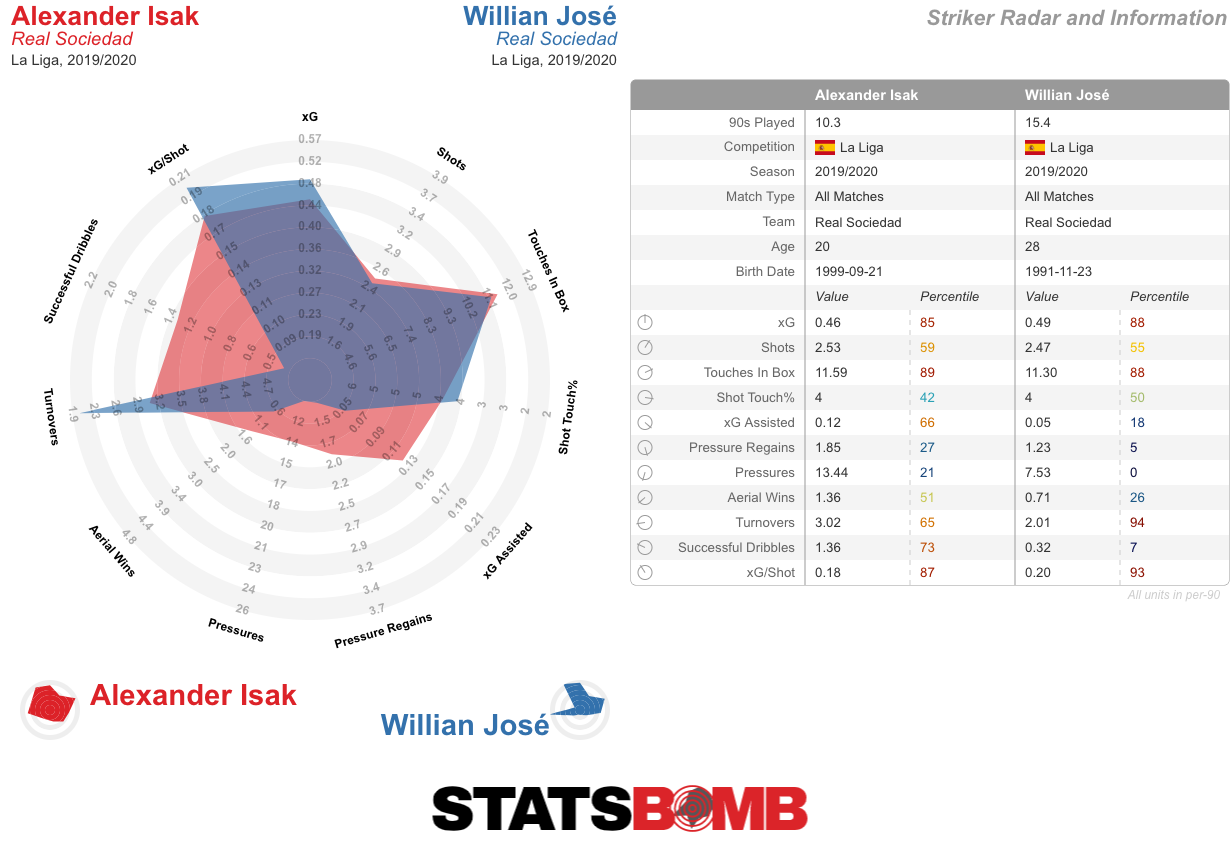 He does more work when out of possession, supplies more creative output, and offers individual explosiveness to the attack with his speed and skill. He has the ability to take players on and then advance rapidly into the resulting space, as this map of his successful dribbles and subsequent carries illustrates.
He does more work when out of possession, supplies more creative output, and offers individual explosiveness to the attack with his speed and skill. He has the ability to take players on and then advance rapidly into the resulting space, as this map of his successful dribbles and subsequent carries illustrates. 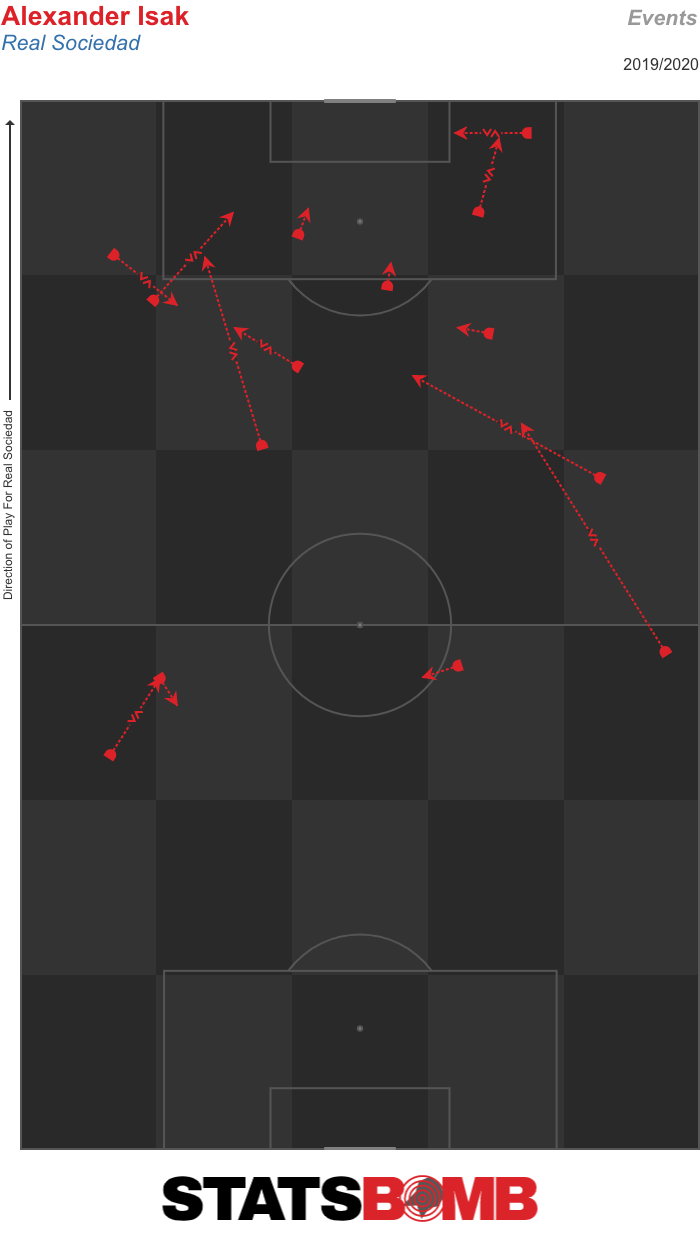 That just isn’t José’s game.
That just isn’t José’s game.  Can Isak continue to reinvigorate a side whose league form has been patchy over the last couple of months? If he can, Borussia Dortmund retain a €30 million buyback option they might just decide to exercise come the end of the campaign.
Can Isak continue to reinvigorate a side whose league form has been patchy over the last couple of months? If he can, Borussia Dortmund retain a €30 million buyback option they might just decide to exercise come the end of the campaign. 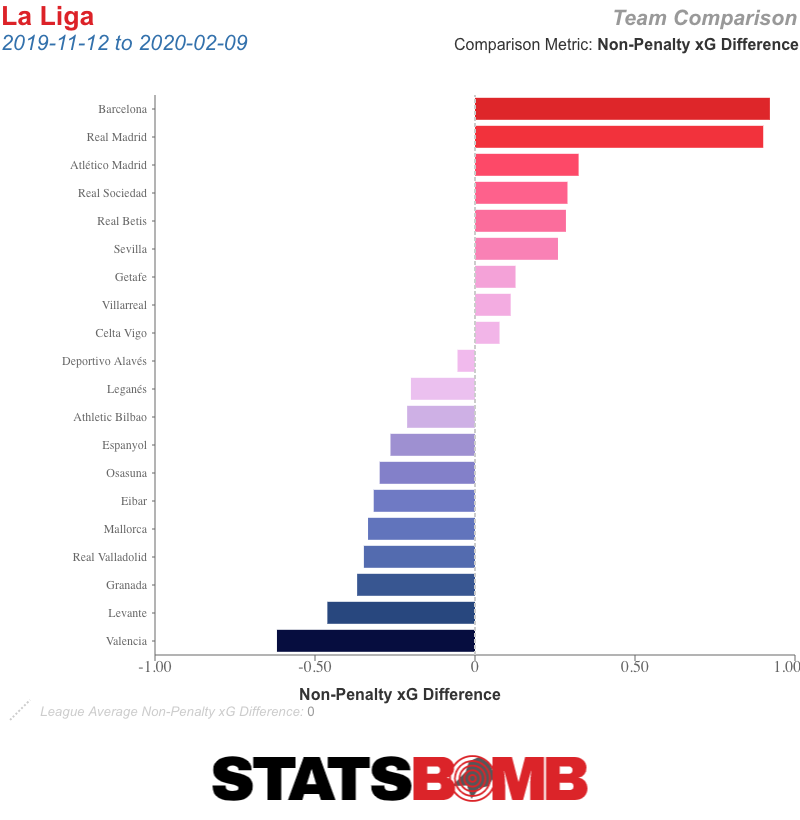 To some degree, this is simply a case of having less talent. Mallorca are, after all, operating on the lowest budget in La Liga. But both this season and in campaigns past, teams have come up with clearly defined ideas as to how they intend to compete in the top flight. Sides such as Eibar, Getafe and Osasuna have used aggressive pressing to bridge and overcome talent disparities; Leganés have leaned on strong defensive foundations; Mallorca . . . well, they don’t seem to have much to call their own.
To some degree, this is simply a case of having less talent. Mallorca are, after all, operating on the lowest budget in La Liga. But both this season and in campaigns past, teams have come up with clearly defined ideas as to how they intend to compete in the top flight. Sides such as Eibar, Getafe and Osasuna have used aggressive pressing to bridge and overcome talent disparities; Leganés have leaned on strong defensive foundations; Mallorca . . . well, they don’t seem to have much to call their own. 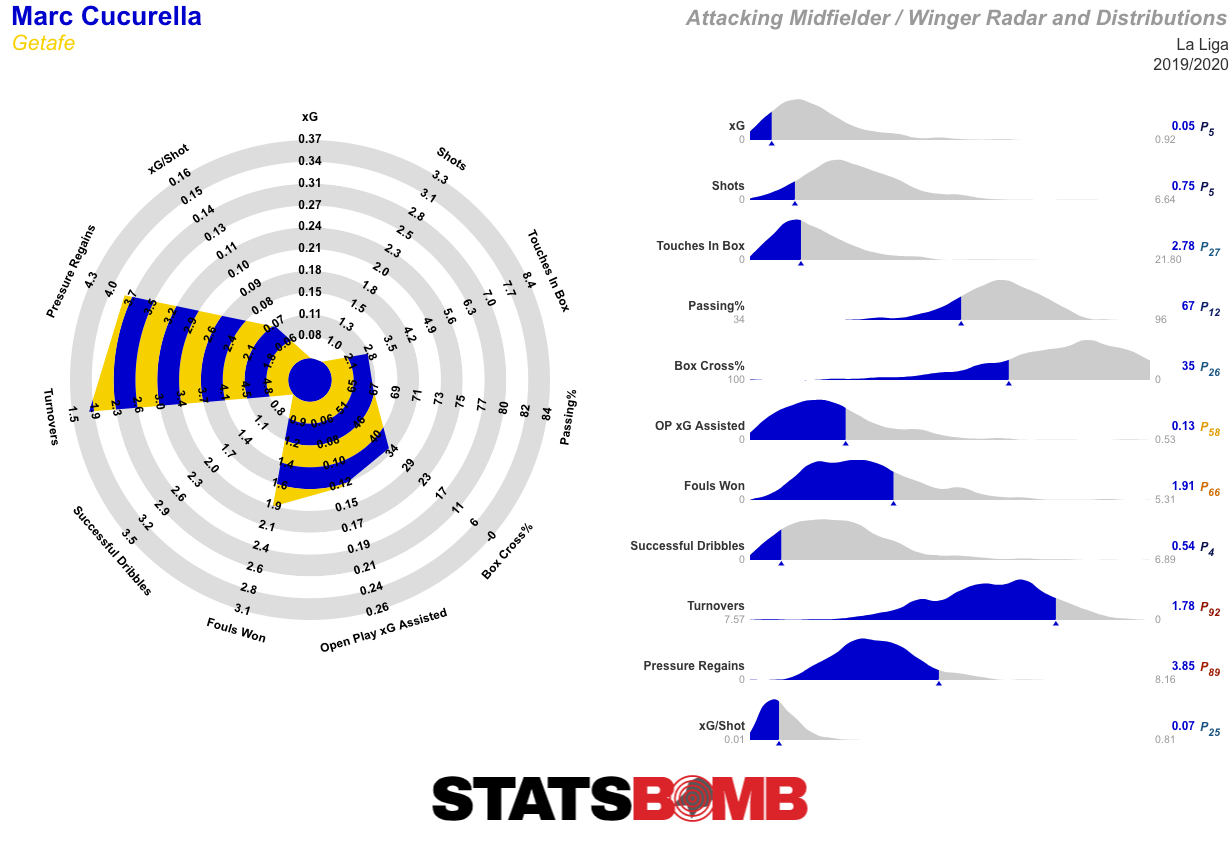 But what he does do well is exactly what Getafe’s system requires of him. José Bordalás’ team are the most aggressive high pressers in La Liga, and Cucurella is the most active of all in that regard, leading the team in both pressures.
But what he does do well is exactly what Getafe’s system requires of him. José Bordalás’ team are the most aggressive high pressers in La Liga, and Cucurella is the most active of all in that regard, leading the team in both pressures. 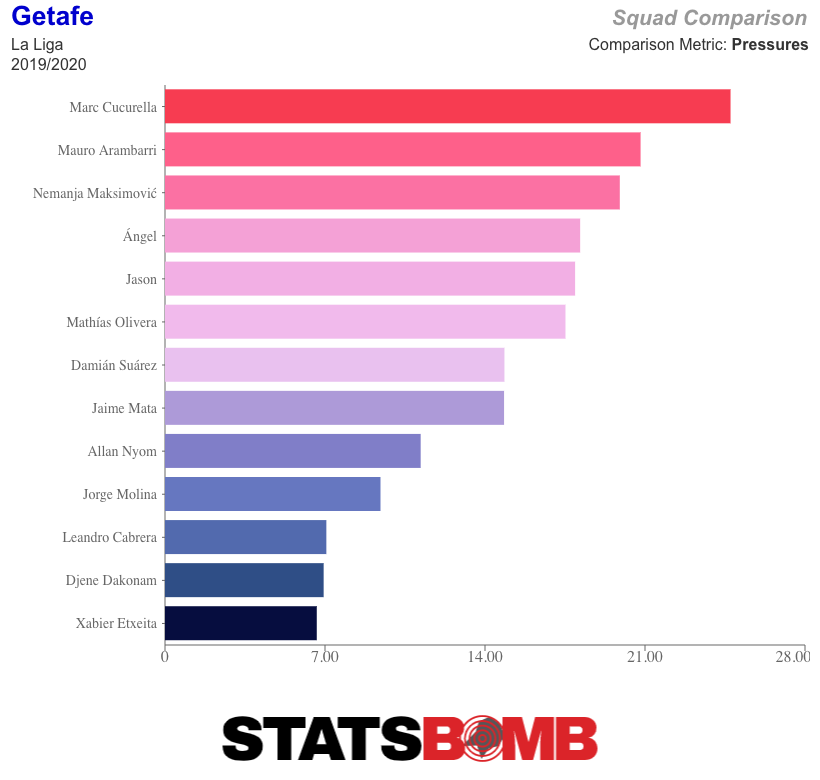 And pressure regains (pressures that result in a turnover of possession).
And pressure regains (pressures that result in a turnover of possession). 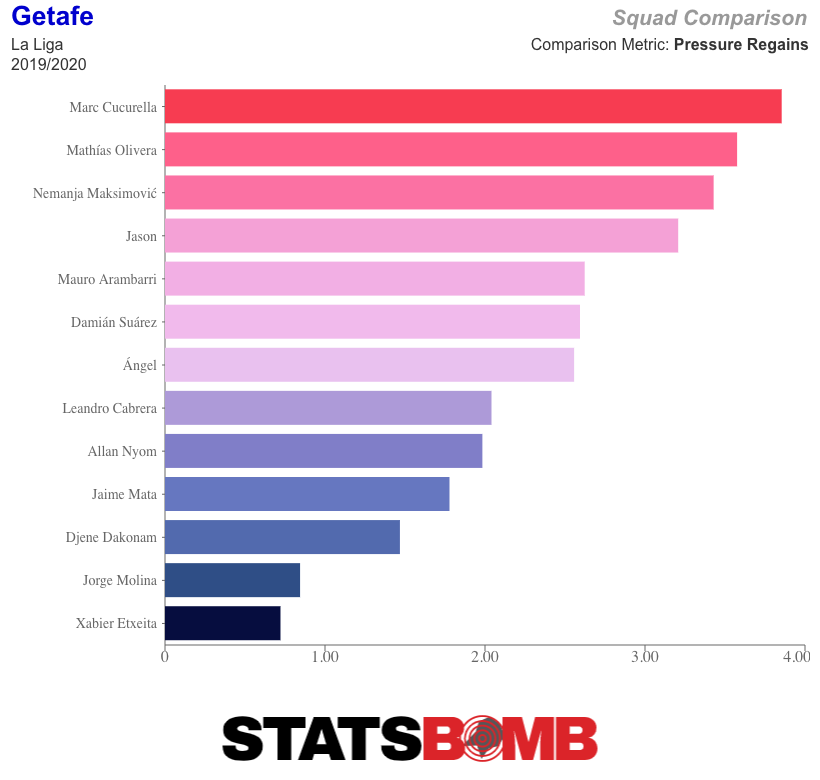 Not that this should come as much of a surprise. Cucurella led Eibar, La Liga’s other supreme high-pressers, in both categories last season. He is simply a pressing machine — a bundle of condensed energy. While his attacking numbers don’t stand out in the league, within the context of his team, he is one of the most regular assist providers, and his directness on the ball helps them swiftly advance. That was evident in their 3–0 win over Valencia on Saturday, in which he regularly carried the ball forward down the left flank.
Not that this should come as much of a surprise. Cucurella led Eibar, La Liga’s other supreme high-pressers, in both categories last season. He is simply a pressing machine — a bundle of condensed energy. While his attacking numbers don’t stand out in the league, within the context of his team, he is one of the most regular assist providers, and his directness on the ball helps them swiftly advance. That was evident in their 3–0 win over Valencia on Saturday, in which he regularly carried the ball forward down the left flank. 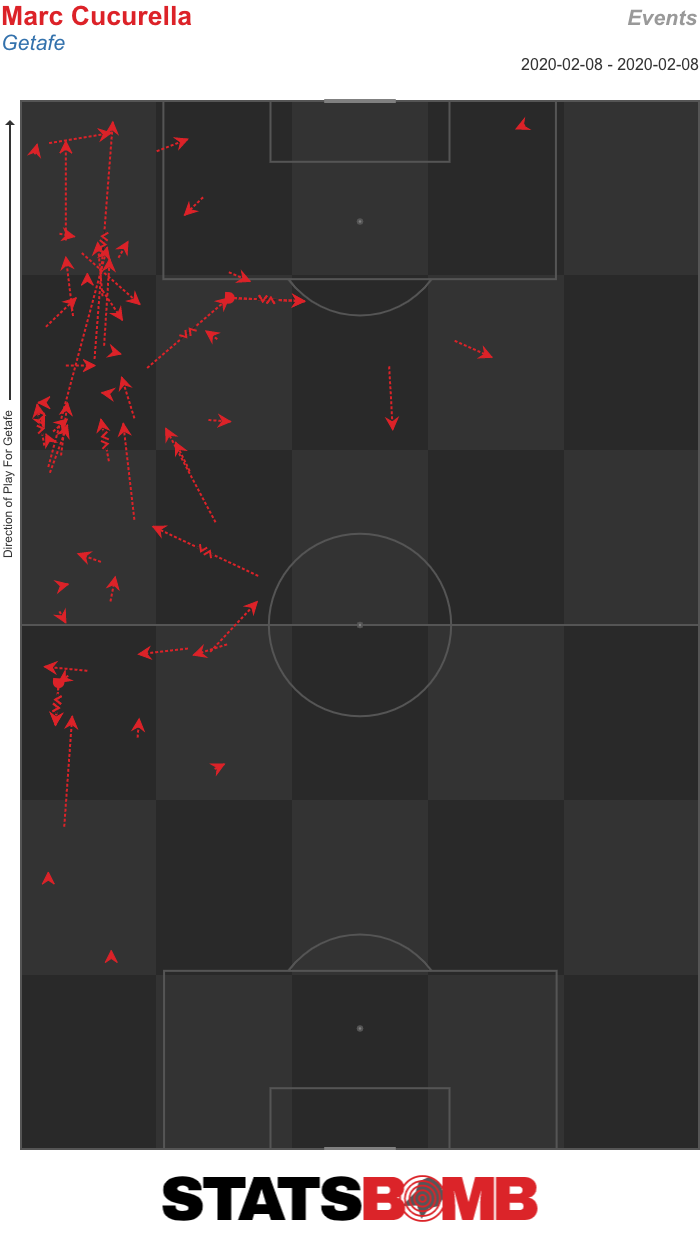 Eventually, the Valencia right-back Alessandro Florenzi, undoubtedly fed up at watching that wavy mass of hair swish past him time and again, took retribution with an ugly challenge from behind that resulted in a deserved red card. The victory was Getafe’s fourth in a row, and their seventh in their last ten in the league. During that time, only Real Madrid have accumulated more points. They are third in the table and with other top-four challengers stuttering, Champions League qualification is a real possibility. A key part of their success is that everyone performs exactly the role required of them within the system. Few encapsulate that better than Cucurella.
Eventually, the Valencia right-back Alessandro Florenzi, undoubtedly fed up at watching that wavy mass of hair swish past him time and again, took retribution with an ugly challenge from behind that resulted in a deserved red card. The victory was Getafe’s fourth in a row, and their seventh in their last ten in the league. During that time, only Real Madrid have accumulated more points. They are third in the table and with other top-four challengers stuttering, Champions League qualification is a real possibility. A key part of their success is that everyone performs exactly the role required of them within the system. Few encapsulate that better than Cucurella. 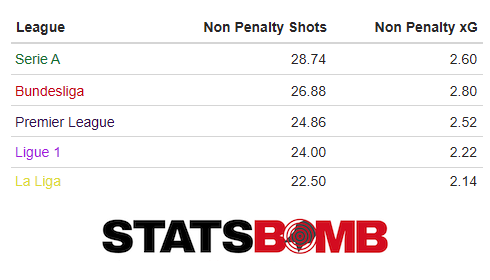 The Spanish top flight seems to be going its own way in terms of playing style. On average, its teams defend higher and seek to break up passing chains in opposition territory more often than those in any of the other leagues. That is producing fewer shots, but also a different kind of aesthetic. If that’s your cup of tea, La Liga is the place to be.
The Spanish top flight seems to be going its own way in terms of playing style. On average, its teams defend higher and seek to break up passing chains in opposition territory more often than those in any of the other leagues. That is producing fewer shots, but also a different kind of aesthetic. If that’s your cup of tea, La Liga is the place to be.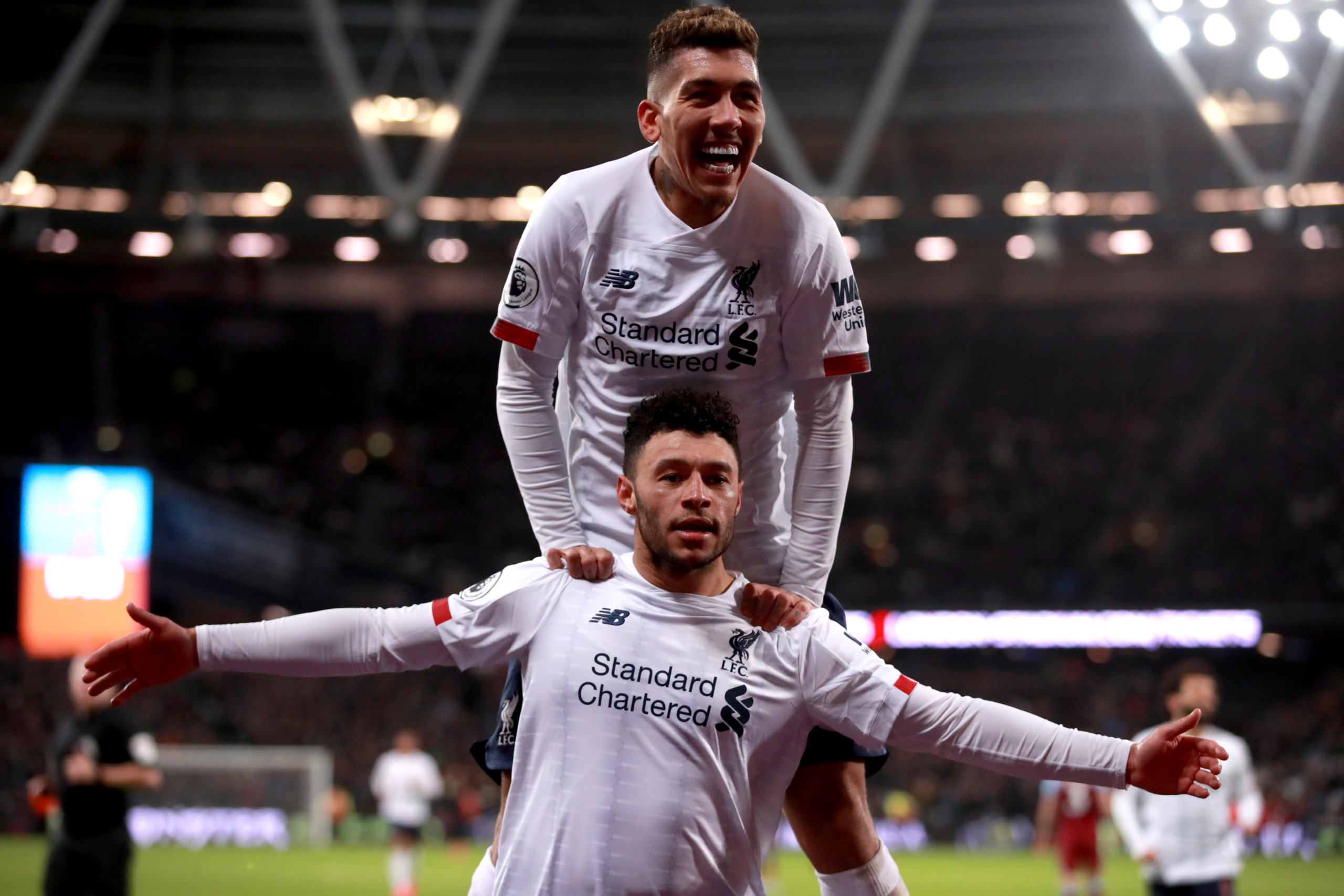
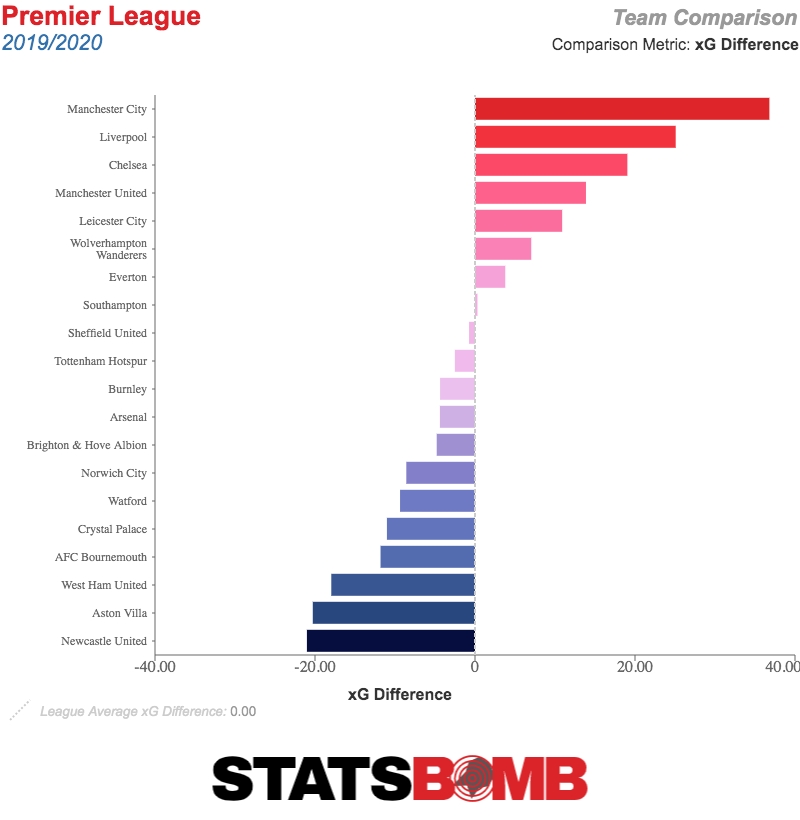
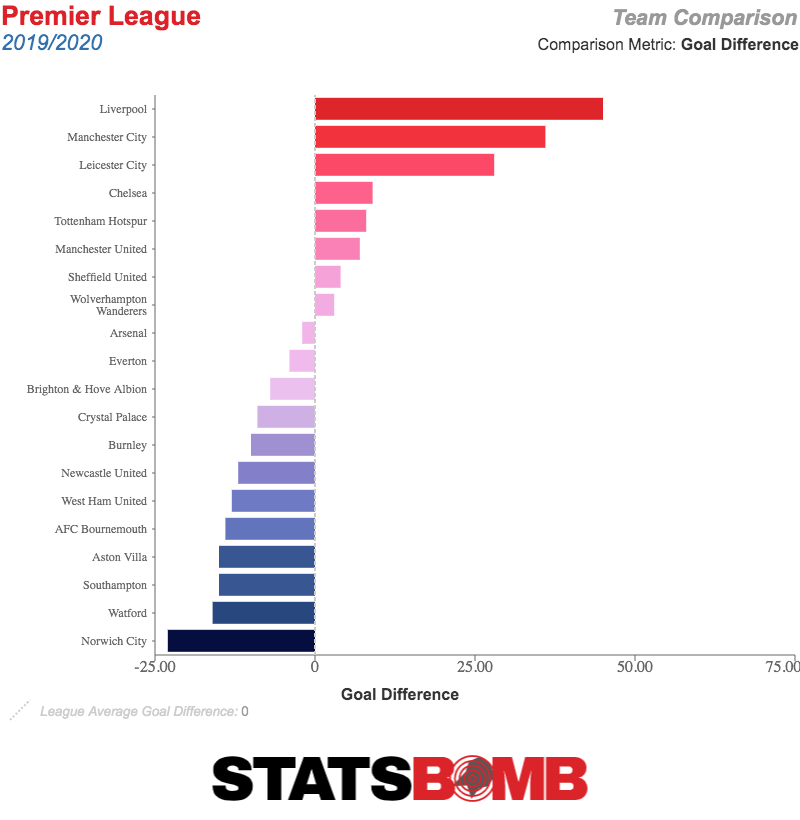
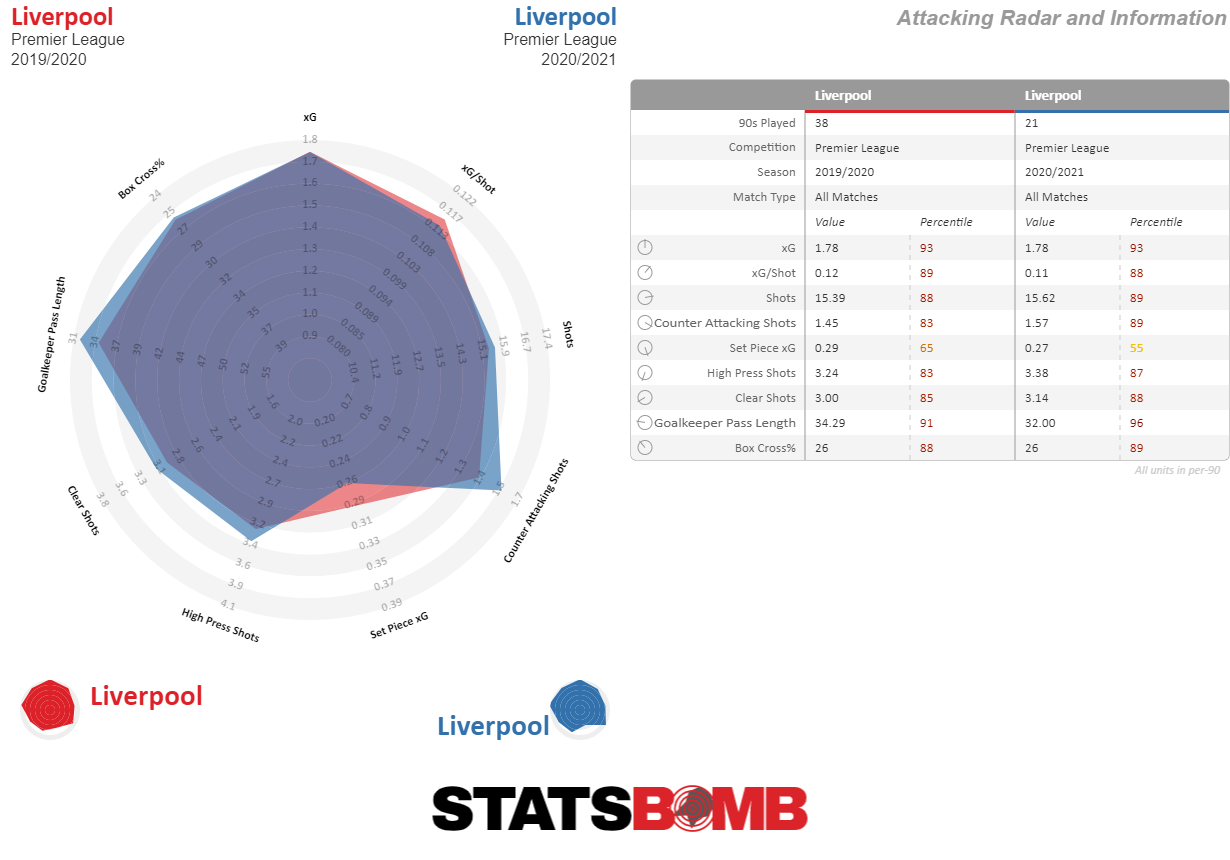
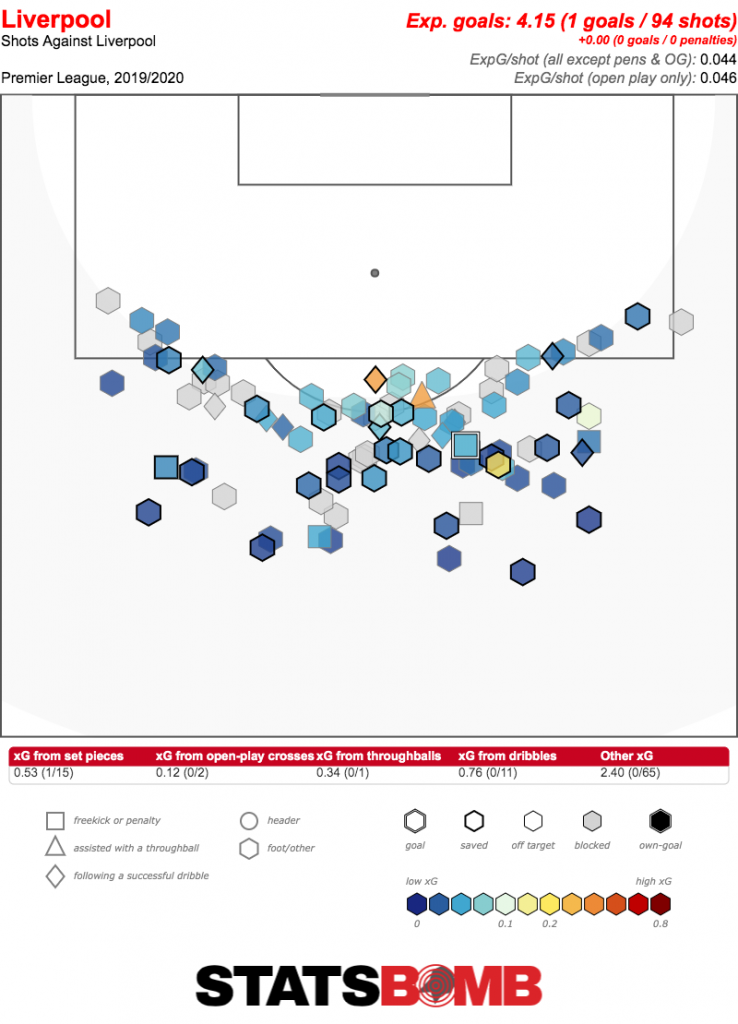
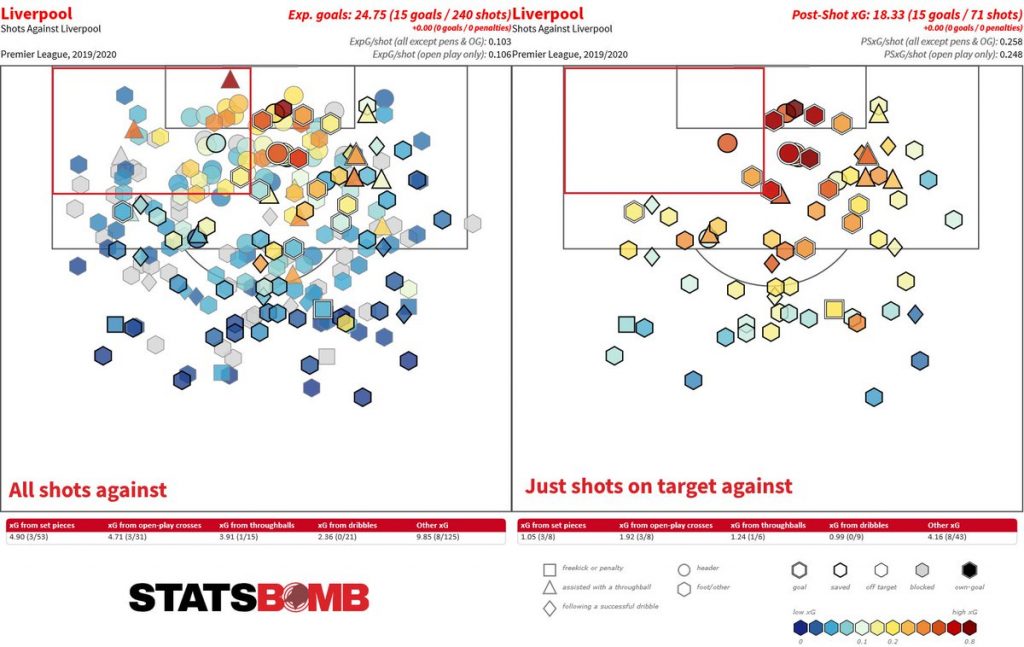
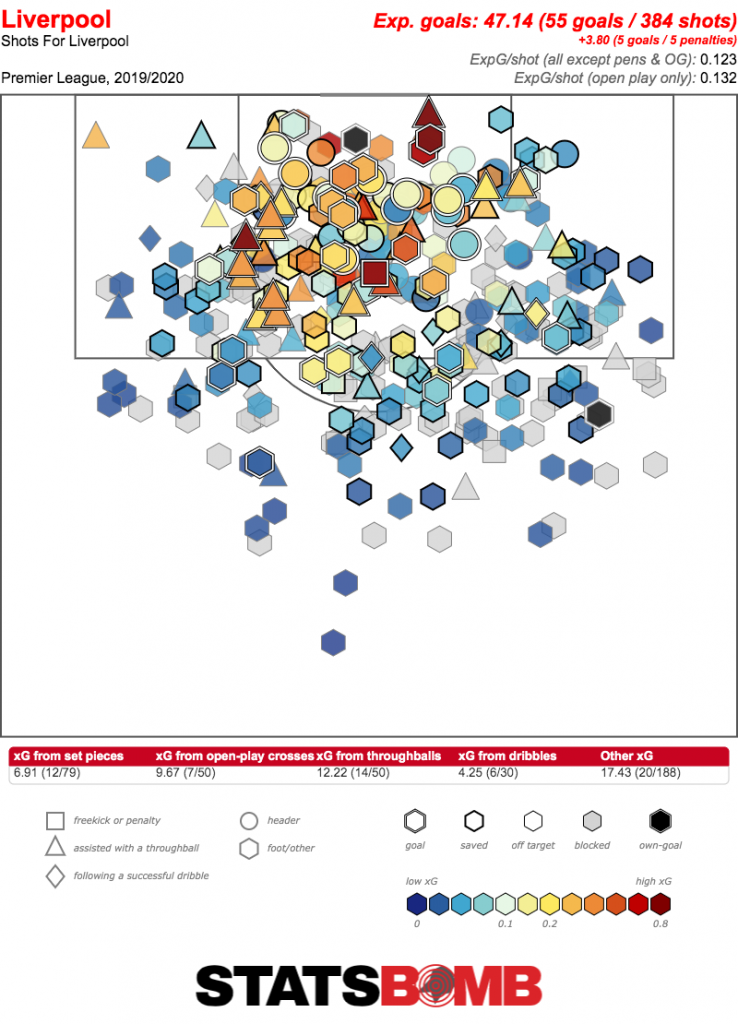
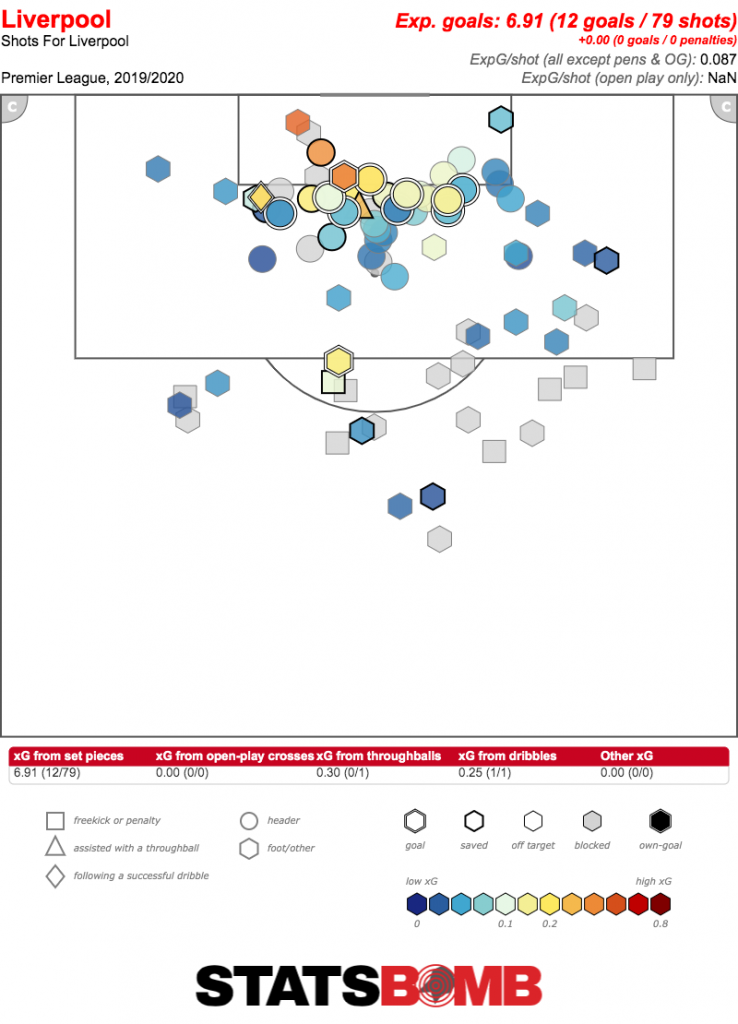
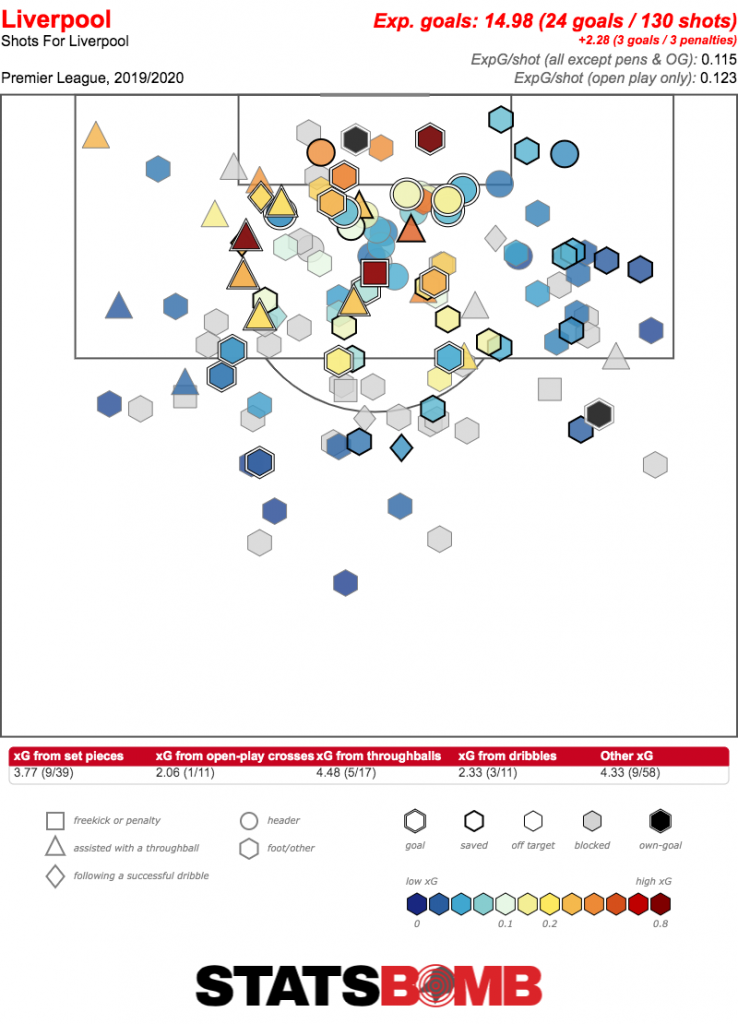
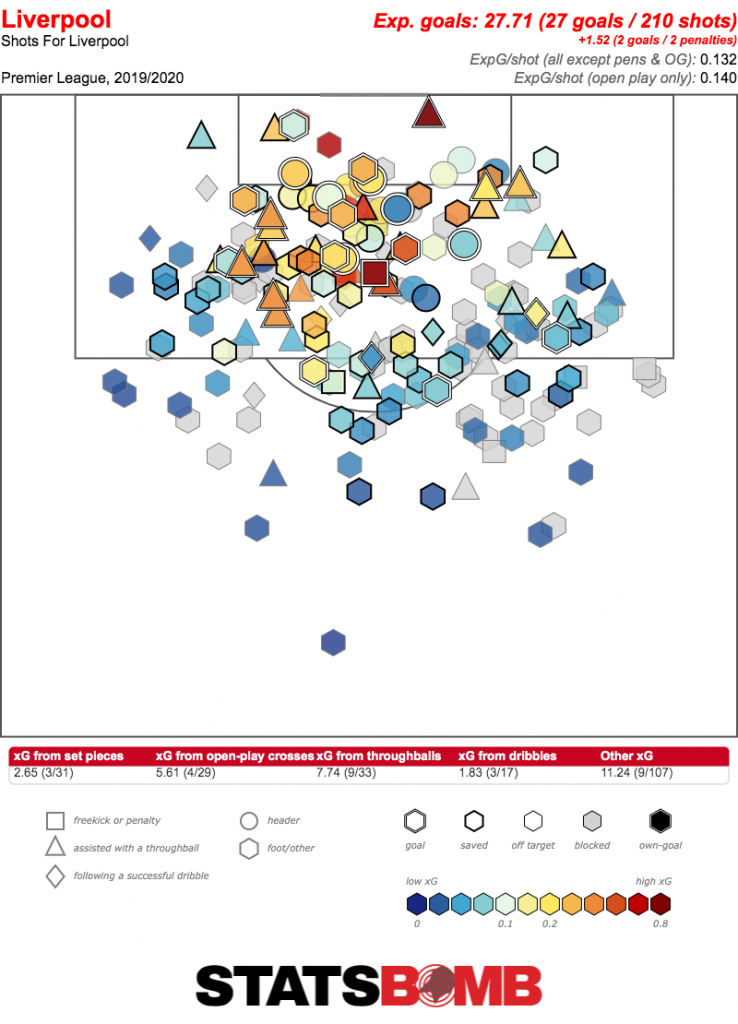
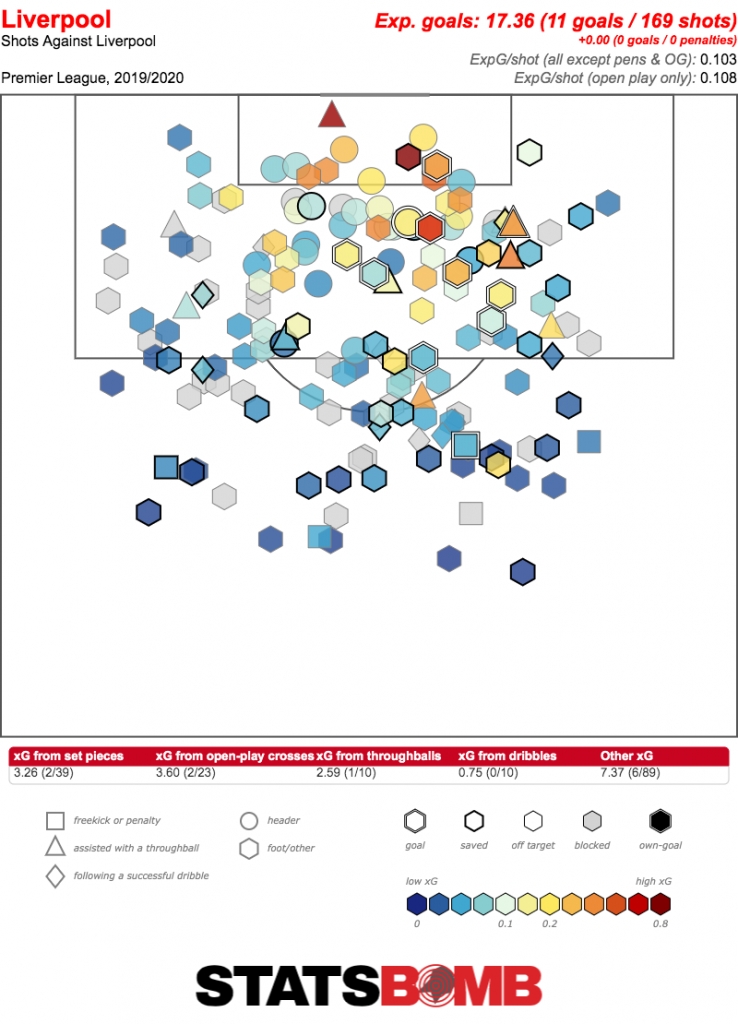
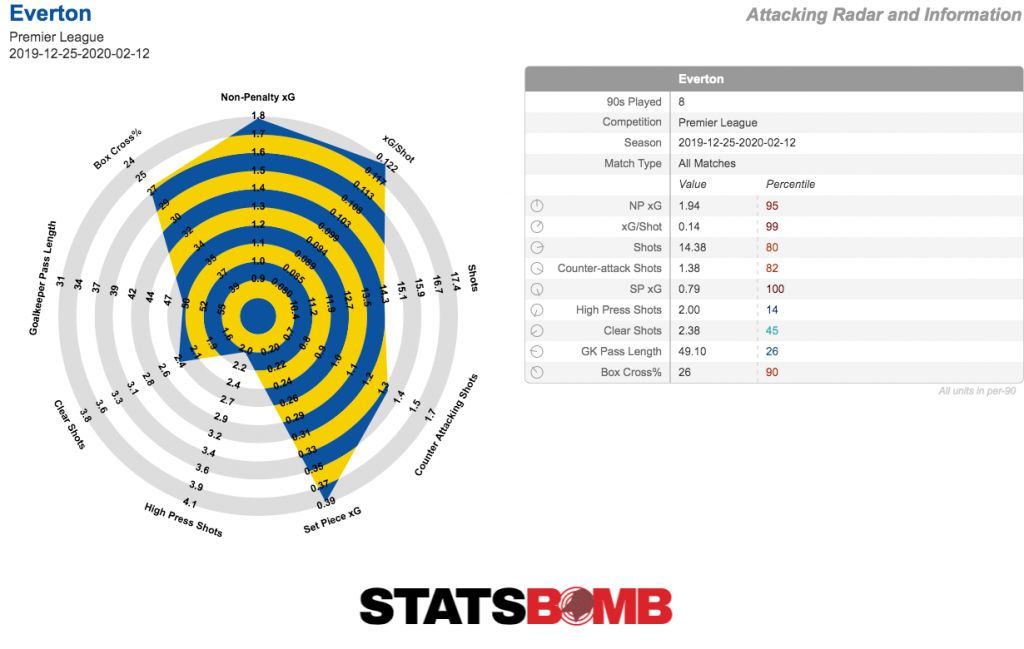
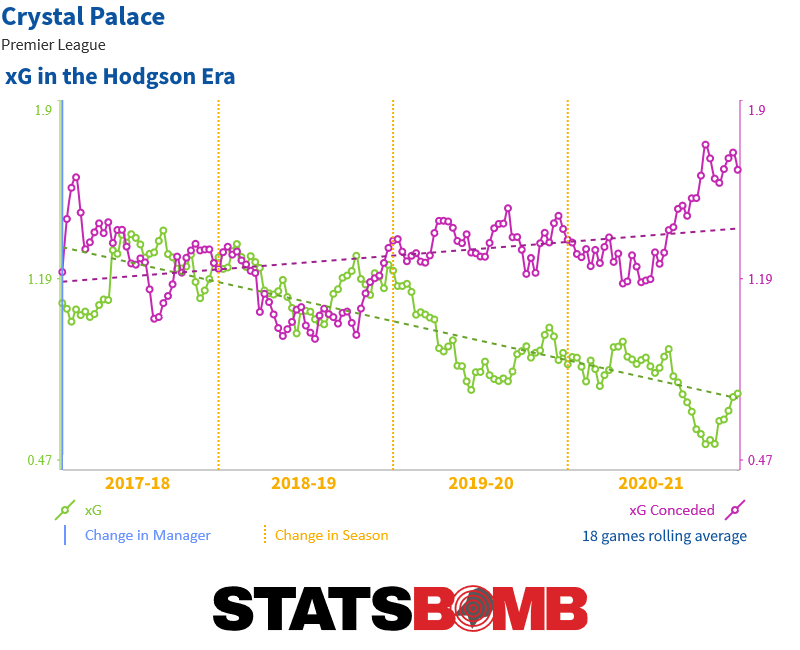
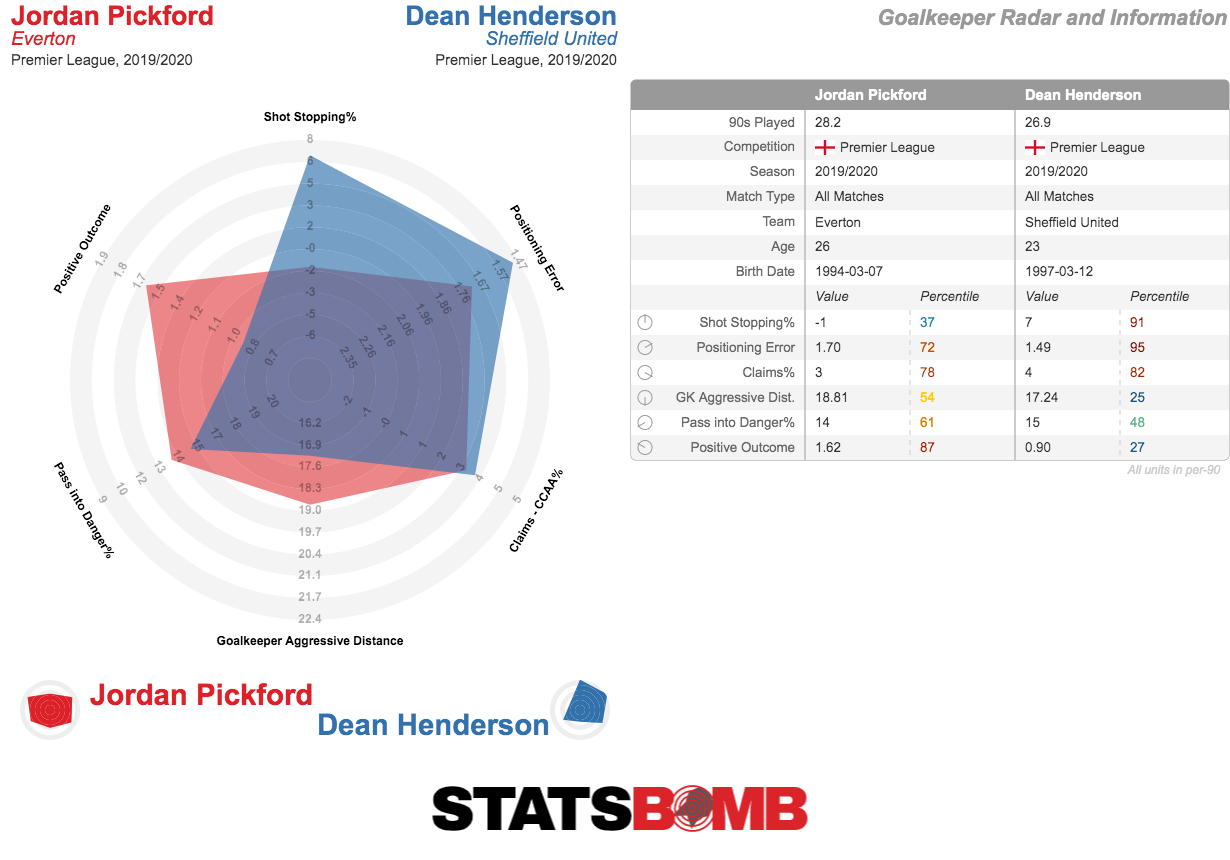
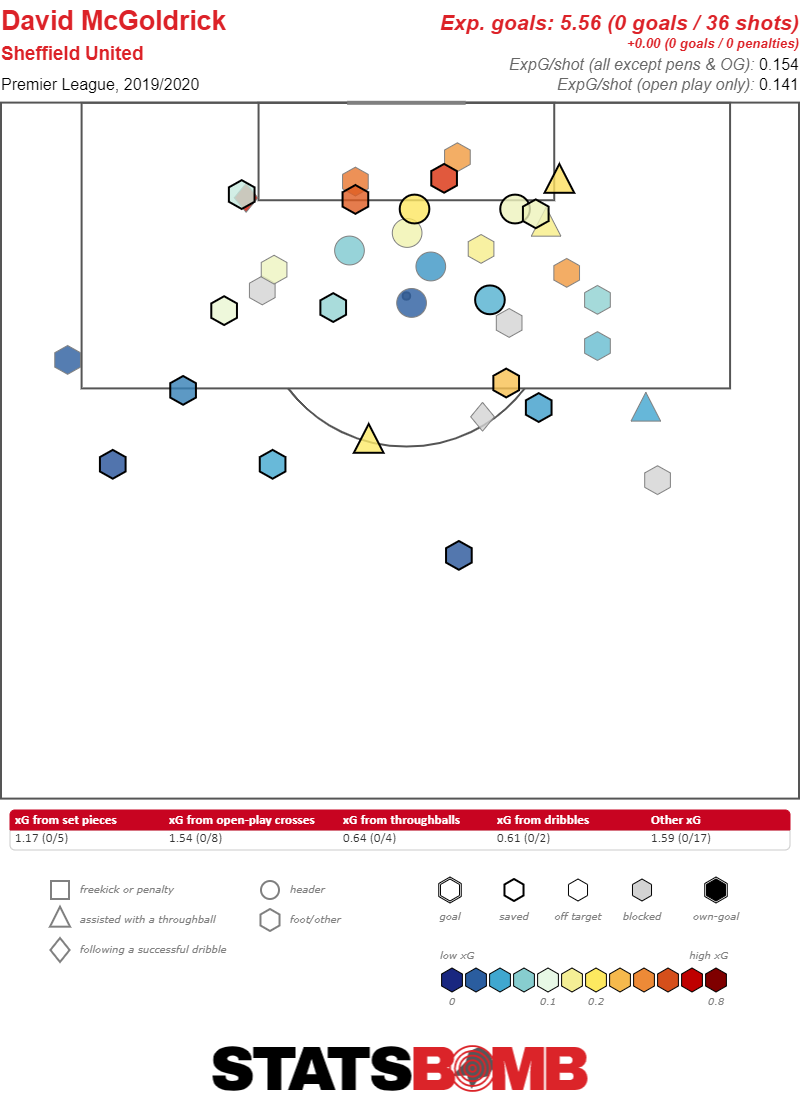
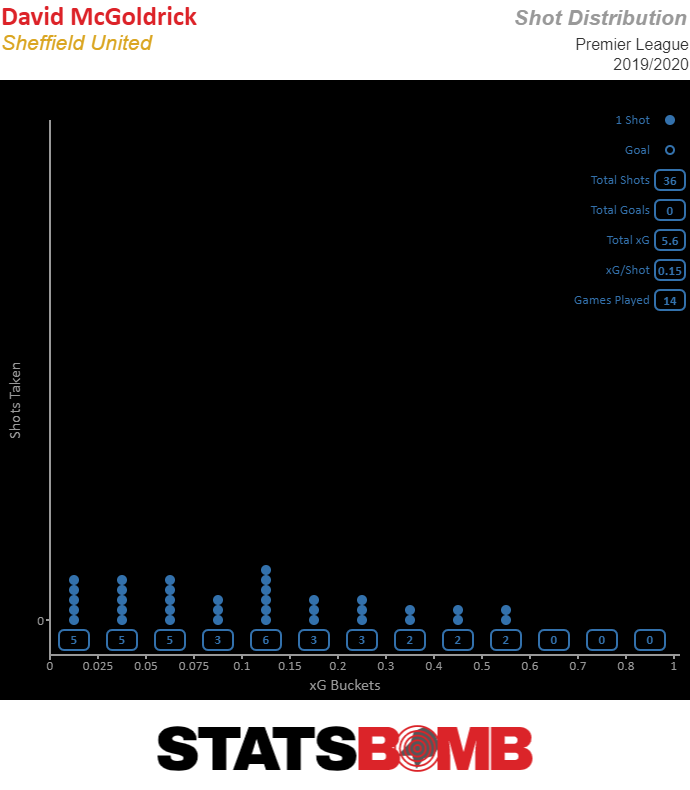 How exactly is McGoldrick managing to pull off this trick? Well, if we pry apart his shooting numbers we see some interesting stuff (still no goals though). How exactly is he missing? One thing that appears to be happening is that goalkeepers are playing absolutely out of their minds against him. The post-shot xG value of McGoldtrick’s shots is 4.55 from 16 on-target shots.
How exactly is McGoldrick managing to pull off this trick? Well, if we pry apart his shooting numbers we see some interesting stuff (still no goals though). How exactly is he missing? One thing that appears to be happening is that goalkeepers are playing absolutely out of their minds against him. The post-shot xG value of McGoldtrick’s shots is 4.55 from 16 on-target shots. 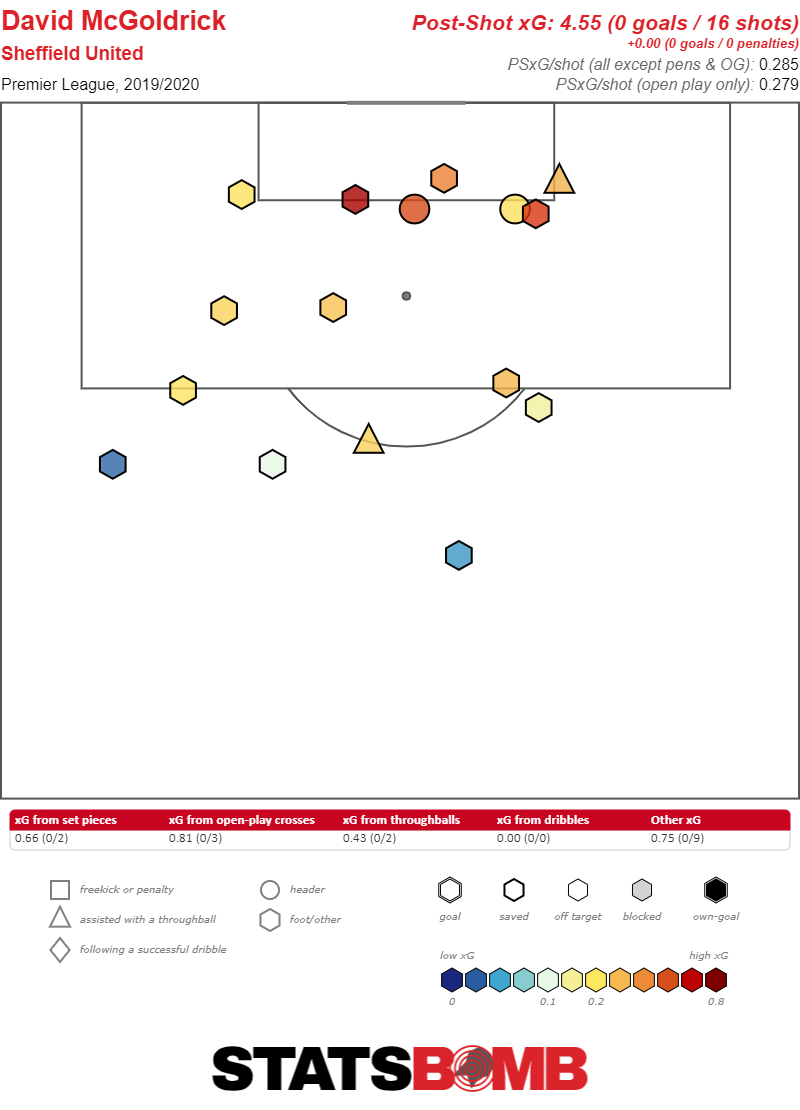 A brief nerdy stats note here. Post-shot xG doesn’t tell us very much that’s meaningful about the quality of McGoldrick’s shooting. A shot that fizzes just wide gets a value of zero and one that’s lollipopped softly into the keeper's arms will have a non-zero value, while the former may very well be a better attempt than the latter. So, the fact that the post-shot xG here is lower than regular xG doesn’t prove much about McGoldrick’s attempts. What it does show is that keepers seem to turn into gigantic multi-armed monsters against him, saving over four more shots than expected. When we get this granular, of course, there is always going to be some debate about who deserves credit for a great save, and who gets blamed for perhaps making the keeper's life easier than the numbers can detect. Those issues get averaged out with large numbers of shots, but when we’re looking at something like McGoldrick prodding a ball in the general direction of a gaping net, and Crystal Palace’s Vincente Guaita recovering to make a save, the question of sorting out exactly who gets credits and demerits for what remains an open one.
A brief nerdy stats note here. Post-shot xG doesn’t tell us very much that’s meaningful about the quality of McGoldrick’s shooting. A shot that fizzes just wide gets a value of zero and one that’s lollipopped softly into the keeper's arms will have a non-zero value, while the former may very well be a better attempt than the latter. So, the fact that the post-shot xG here is lower than regular xG doesn’t prove much about McGoldrick’s attempts. What it does show is that keepers seem to turn into gigantic multi-armed monsters against him, saving over four more shots than expected. When we get this granular, of course, there is always going to be some debate about who deserves credit for a great save, and who gets blamed for perhaps making the keeper's life easier than the numbers can detect. Those issues get averaged out with large numbers of shots, but when we’re looking at something like McGoldrick prodding a ball in the general direction of a gaping net, and Crystal Palace’s Vincente Guaita recovering to make a save, the question of sorting out exactly who gets credits and demerits for what remains an open one. 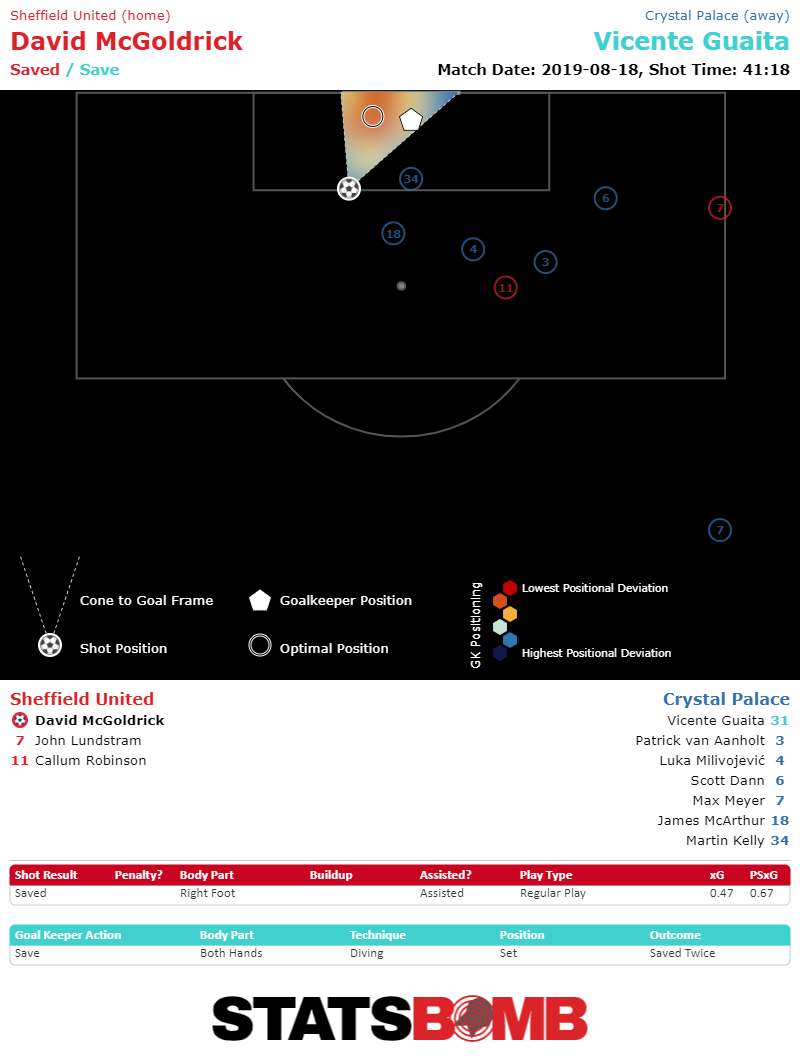 Individual shots get missed all the time, for all sorts of reasons. It’s just that McGoldrick has missed so darn many of them this season. Four separate times he’s managed to kick the ball towards goal from inside the six-yard box, only to see two of them get saved, and two of them miss the target entirely. The good news for McGoldrick is that he’s almost certainly getting unlucky. Whenever something this unlikely happens, it’s at least partially down to dumb luck. The problem for him is that it’s also probably not just luck. McGoldrick is 32 years old. He’s played his entire career in the lower divisions of English football and never been a consistent goal scorer. While he scored 12 non-penalty goals last season from 15.20 xG (and an additional three penalties), he has not had a prolific goal-scoring career. Before last season he had only reached double digits in goals three times, in 2013–14 with 14 goals for Ipswich Town in the Championship, 2012–13 with 16 goals for Coventry City in League One, and way back in 2008–09 with Southampton in the Championship. All things being equal, we expect players to eventually perform to the xG. But, sometimes everything else is not equal. McGoldrick is a longtime journeyman of a striker. Suddenly at age 32, he finds himself playing at the highest level of his career. He plays for an extraordinarily well-coached team in Sheffield United, one that is exceptional at working together to create great shots. McGoldrick keeps missing those great shots. The simplest explanation is not that McGoldrick is facing exceptionally, historically bad luck (although we shouldn’t rule that possibility out entirely) but rather that he’s a player who just isn’t quite good enough for this level. Sheffield United manager Chris Wilder excels at getting the most out of his squad. That includes finding an aging striker with a preternatural instinct for getting on the end of his team’s highly choreographed creative attacking moves to create really good chances. When you’re Wilder and Sheffield United, however, you’re also shopping in the bargain bin, and that means perhaps the player you’ve found to do that just isn’t quite up to snuff when it comes to actually putting the ball into the back of the net. So, the bad news is that McGoldrick’s finishing struggles might not just be bad luck. The good news is that Sheffield United are succeeding this season anyway. The really good news is that this means there’s room for them to become even better. Just imagine what this team might do if one of their strikers wasn’t chronically unable to finish.
Individual shots get missed all the time, for all sorts of reasons. It’s just that McGoldrick has missed so darn many of them this season. Four separate times he’s managed to kick the ball towards goal from inside the six-yard box, only to see two of them get saved, and two of them miss the target entirely. The good news for McGoldrick is that he’s almost certainly getting unlucky. Whenever something this unlikely happens, it’s at least partially down to dumb luck. The problem for him is that it’s also probably not just luck. McGoldrick is 32 years old. He’s played his entire career in the lower divisions of English football and never been a consistent goal scorer. While he scored 12 non-penalty goals last season from 15.20 xG (and an additional three penalties), he has not had a prolific goal-scoring career. Before last season he had only reached double digits in goals three times, in 2013–14 with 14 goals for Ipswich Town in the Championship, 2012–13 with 16 goals for Coventry City in League One, and way back in 2008–09 with Southampton in the Championship. All things being equal, we expect players to eventually perform to the xG. But, sometimes everything else is not equal. McGoldrick is a longtime journeyman of a striker. Suddenly at age 32, he finds himself playing at the highest level of his career. He plays for an extraordinarily well-coached team in Sheffield United, one that is exceptional at working together to create great shots. McGoldrick keeps missing those great shots. The simplest explanation is not that McGoldrick is facing exceptionally, historically bad luck (although we shouldn’t rule that possibility out entirely) but rather that he’s a player who just isn’t quite good enough for this level. Sheffield United manager Chris Wilder excels at getting the most out of his squad. That includes finding an aging striker with a preternatural instinct for getting on the end of his team’s highly choreographed creative attacking moves to create really good chances. When you’re Wilder and Sheffield United, however, you’re also shopping in the bargain bin, and that means perhaps the player you’ve found to do that just isn’t quite up to snuff when it comes to actually putting the ball into the back of the net. So, the bad news is that McGoldrick’s finishing struggles might not just be bad luck. The good news is that Sheffield United are succeeding this season anyway. The really good news is that this means there’s room for them to become even better. Just imagine what this team might do if one of their strikers wasn’t chronically unable to finish.